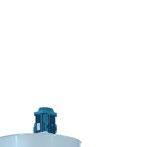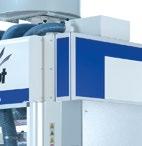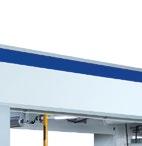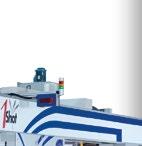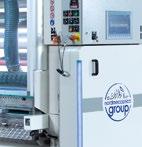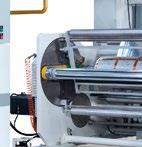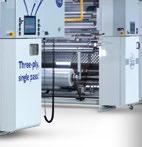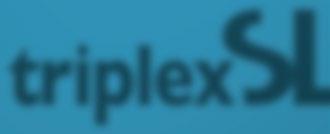












































































































































































































Stampa rotocalco, flexo a tamburo centrale o in linea, accoppiamento: BOBST ti aiuta ad affrontare le sfide ambientali, migliorando nel contempo l’agilità produttiva e il time-to-market. Sei interessato? Trova il rappresentante locale BOBST su www.bobst.com/contact


e Flexo Day 2022: tra premiazioni, scenari e formazione


and Flexo Day 2022: between awards, scenarios and training
service di prestampa e uno stampatore che amano le sfide
presenta Onyx Go: la flexo per tirature brevi

Uteco presents Onyx Go: flexo for short
ha scelto Soma, installando la Optima2 8 colori, prima macchina del costruttore ceco nel mercato italiano
chose Soma, installing the 8-color Optima2: Czech manufacturer’s first machine in the Italian market

esperienze, evoluzione: il successo di Diaven
Method, experience, evolution: Diaven’s success
barriera per prodotti sostenibili in carta e film: insieme si può
effect for sustainable paper and film products: together we can
Flex: il valore, oltre il prezzo
Flex: the value, beyond the price
flessibile: una storia di valore che avvolge il futuro
packaging: a story of value that surrounds the future
Iscritta al Registro Nazionale della Stampa n° 5360
Autorizzazione del Tribunale di Milano n° 373 del 10 giugno 1996
Direzione, redazione, amministrazione e pubblicità: Direction, editing, administration and advertising: CIESSEGI Editrice S.n.c. Via G. Di Vittorio 30 20048 Pantigliate -(Milano) Italy phone +39 02 90687158 flexo@converter.it www.converter.it
CONVERTER Tv
@ConverterFlexo www.youtube.com/ converterwebtv https://www.linkedin.com/ company/converter-italy/ issuu.com/converteritaly www.facebook.com/ converter.italy/
Direttore responsabile/Editor: Stefano Giardini
Coord. redazionale/Chief editor: Andrea Spadini
Redazione/Editorial staff: Barbara Bernardi Massimo Giardini


Impaginazione e grafica/Graphics: Paola Barteselli
Ciessegi Editrice Snc Stampa/Print: GRAFICHE GIARDINI s.r.l. Pantigliate - MI Garanzia di riservatezza
settore etichette deve affrontare nuove sfide dietro le quali emergono importanti opportunità verso una produzione green premiata dal mercato
label sector has to face new challenges behind which emerge important opportunities towards a green production rewarded by the market
Il trattamento dei dati personali che La riguardano viene svolto nell’ambito della banca dati della CIESSEGI Editrice Snc e nel rispetto di quanto stabilito dalla Legge 675/96 e successive modifiche sulla tutela dei dati personali. Il trattamento dei dati, di cui le garantiamo la massima riservatezza, è effettuato al fine di aggiornarla su iniziative e offerte della società. I suoi dati non saranno comunicati o diffusi a terzi e per essi lei potrà richiedere in qualsiasi momento, la modifica o la cancellazione scrivendo all’attenzione del Responsabile Editoriale della CIESSEGI Editrice Snc.
© Copyright - tutti i diritti sono riservati.
Nessuna parte di questa rivista può essere riprodotta senza autorizzazione. Manoscritti e fotografie (anche se non pubblicati) non si restituiscono.
CleanPrint per il futuro sostenibile della stampa flessografica.
Lastre con lavaggio ad acqua

Questa lastra con lavaggio ad acqua è ideale per applicazioni flessografiche della massima qualità, tra cui imballaggi flessibili ed etichette. Offre la tecnologia CleanPrint per una riduzione sostenibile dell’impronta di carbonio degli stampatori.
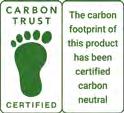
Per una stampa flessografica più pulita, pensa a Cleanprint. Pensa ad Asahi!
Lastra
ovità di quest’anno la creazione del Premio Giuria, una menzione speciale voluta dai giurati Massimiliano Ferrari (Barilla) Presidente di Giuria, Paride Banzola (Eurocompany), Alessandra Biava (Bonduelle) e Simona Poli (La Linea Verde) per attribuire un riconoscimento a lavori che si distinguono per particolari qualità. Un riconoscimento destinato a restare anche per le prossime edizioni e che amplierà il novero delle aziende premiate da ATIF. Nel corso della serata è stato anche assegnato il Premio alla Carriera giunto alla sua quinta edizione: è stato Felice Rossini a ricevere questo riconoscimento per una carriera all’insegna della flessografia.

Nel corso della serata, oltre agli stampatori, sono state premiate anche le aziende di prestampa del 1°, 2° e 3° classificato.

Flexo Day 2022: il tradizionale convegno Atif si è articolato quest’anno in due sessioni, la prima di scenario, la seconda più tecnica. Ospiti della prima sessione, che ha visto la partecipazione di circa 330 persone, un economista (Fabio Papa dell’I-AER), che ha auspicato che gli imprenditori comprendano quanto sia importante ringiovanire le imprese e quindi mettere

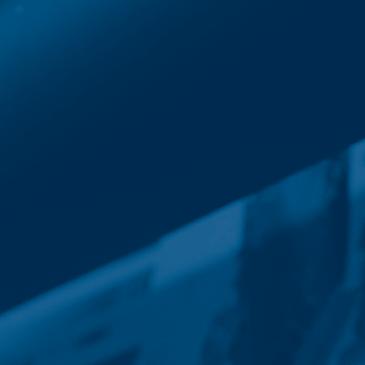
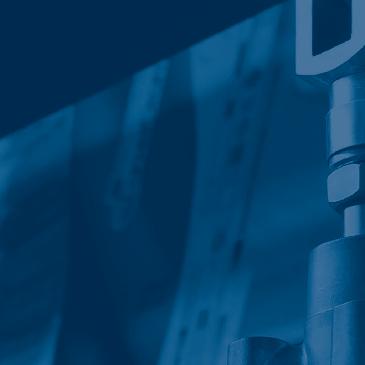

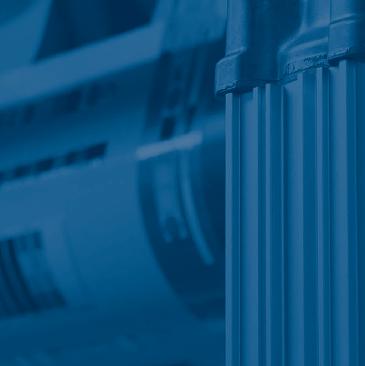

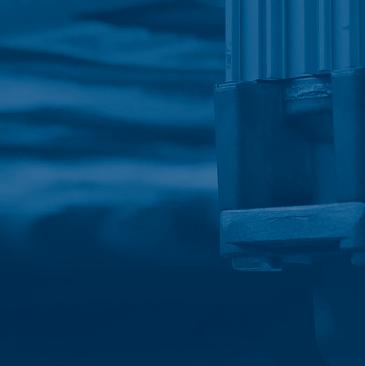

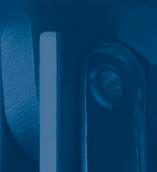
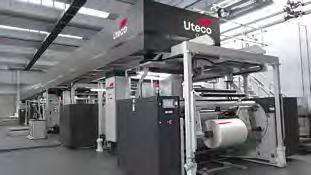

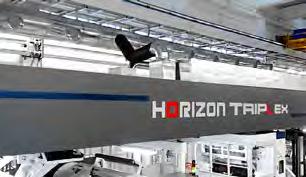

in atto strategie per diventare attrattivi nei confronti dei giovani. I rappresentanti di Burgo e Taghleef hanno presentato rispettivamente contributi sulla situazione economico-finanziaria e il relativo impatto sulle PMI, e gli scenari di mercato della carta e dei supporti plastici. Ha chiuso questa prima sessione l’intervista di Armando Garosci (Largo Consumo) a Gianangelo Cattaneo, AD di Plastik. Per questa azienda i driver principali che stanno motivando le sue scelte sono la sostenibilità, oggi più che mai importante perché la plastica è sotto attacco, e la ricerca di soluzioni tecnologiche per migliorare efficienza e processi, inoltre il settore igienico-sanitario, per il quale Plastik produce film e sacchetti, ha delle richieste molto impegnative riguardo a normative e sostenibilità, spesso difficili da conciliare, per trovare nuove soluzioni è stato creato un reparto di R&D.
La seconda giornata (circa 350 le presenze registrate) moderata da Chiara Bezzi di Rassegna dell’Imballaggio, è stata aperta dal saluto del Presidente di Atif Marco Gambardella, con la relazione sullo scenario economico italiano del settore cartotecnico-trasformato-
re (elaborati da Assografici), i dati di mercato delle macchine flexo su scala globale (elaborati da Acimga) e le principali attività dell’Associazione. La sessione è quindi proseguita con la presentazione dei tradizionali contributi tecnici, con gli interventi dei rappresentanti del Comitato tecnico di Atif sul nuovo metodo di misurazione del valore tonale del colore (CVT) in flessografia (Stefano d’Andrea) e sui nuovi standard di comunicazione PRX-PQX, per una migliore interazione fra committente e stampatore (Carlo Carnelli). Si sono poi susseguiti gli interventi della Commissione Education di Atif (a cura di Ira Nicoletti) che ha presentato i progetti formativi dell’Associazione, le relazioni dei soci Inciflex, Rossini e Uteco partner dell’evento 2022.
Rossella Salvatore e Isaac Tursius di Inci-Flex S.r.l. hanno annunciato che a partire dal 2023 nascerà un nuovo reparto dedicato alla ricerca e sviluppo in col-
BESTINFLEXO 2022: APPROXIMATELY 240 WORKS RECEIVED, MORE THAN 400 PARTICIPANTS AT AWARD CEREMONY. THESE ARE THE NUMBERS THAT THE ITALIAN TECHNICAL ASSOCIATION FOR FLEXOGRAPHY HAS RECORDED FOR BESTINFLEXO 2022, THE AWARD FOR FLEXOGRAPHIC PRINTING QUALITY WHICH, SINCE 2015, HAS CELEBRATED THIS IMPORTANT INDUSTRIAL SECTOR, PROMOTING THE EXCELLENCE OF THE SUPPLY CHAIN
Novelty of this year is the creation of the Jury Prize, a special mention desired by the jurors Massimiliano Ferrari (Barilla), president of the jury, Paride Banzola (Eurocompany), Alessandra Biava (Bonduelle) and Simona Poli (La Linea Verde) to prize works that are distinguished by particular qualities. An acknowledgment destined to remain also for the next editions and which will expand the list of companies awarded by ATIF.
During the evening, the Lifetime Achievement Award was also given, now in its fifth edition: Felice Rossini received this recognition for a career dedicated to flexography.
During the evening, in addition to the printers, the prepress companies of the 1st, 2nd and 3rd place were also awarded.
Flexo Day 2022: the traditional Atif conference was divided this year into two sessions,


the first about scenario, the second more technical. Guests of the first session, which saw the participation of about 330 people, an economist (Fabio Papa of the I-AER), who hoped that entrepreneurs understand how important it is to rejuvenate businesses and therefore implement strategies to become attractive in comparisons of young people. The representatives of Burgo and Taghleef respectively presented contributions on the economic-financial situation and the relative impact on SMEs, and the market scenarios for paper and plastic substrates. This first session closed with an interview by Armando
For this company, the main drivers that are motivating its choices are sustainability, today more important than ever because plastic is under attack, and the search for technological solutions to improve efficiency and processes, furthermore the healthcare sector, for which Plastik produces films and bags, has very demanding requests regarding regulations and sustainability, often difficult to reconcile, an R&D department has been created to find new solutions.
The second day (about 350 registered
BestInFlexo and Flexo Day 2022: between awards, scenarios and training



laborazione con l’Università di Salerno, mix di competenze e tecnologie, che comprenderanno l’impiego di intelligenza artificiale e nuovi algoritmi capaci di realizzare sistemi di incisione estremamente innovativi e lineature a 175 lpi attraverso particolari forme geometriche del punto con microcelle appositamente studiate, e consentire alle macchine di raggiungere velocità di 400/500 metri minuto per lunghe tirature.
Francesco Lettieri di Rossini ha ribadito che “la sicurezza degli operatori occupa il primo posto, infatti abbiamo installato un sistema automatico di pulizia che lavora con tutte le protezioni dell’unità stampa chiuse e il circuito d’emergenza abilitato, garantendo l’impossibilità di contatto tra operatori e prodotti chimici di pulizia ed eliminando ogni possibile rischio di incidente legato alla pulizia effettuata da operatori che sono dentro le macchine con organi in rotazione. Ovviamente la sicurezza degli operatori può e deve andare di pari passo con il miglioramento della produttività grazie a investimenti dedicati che riducono i tempi di fermo macchina”. Testimonial di Rossini è stato Sergio Messina, titolare di Joeplast S.P.A., produttore di imballaggi flessibili siciliano che ha scelto di equipaggiare tutte le sue macchine da stampa con l’Evolution Sy-
stem di Rossini, ovvero il sistema automatico di pulizia del tamburo centrale delle linee flexo.
Mattia Carpinetti di Uteco ha presentato gli ultimi sviluppi del costruttore veronese in ambito sostenibilità; Stefano Capelli per FTA Europe ha invece aggiornato la platea circa l’orientamento europeo sulle emissioni in atmosfera per quanto riguarda la stampa flexo, invitando anche le aziende che al momento non sono costrette da obblighi di legge a provvedere autonomamente, anticipando eventuali futuri regolamenti.
L’intervento di Michele Bondani, fondatore di Packaging in Italy, che ha chiuso il Flexo Day, ha stimolato grande curiosità e interesse con il suo intervento “Packaging è marketing”, durante il quale ha spiegato i principi cardine del Brand Positioning e del Packaging Positioning finalizzato alle vendite. Infine, nell’ambito dell’iniziativa BestStudentInFlexo, patrocinata da ENIP-GCT, è stato premiato Diego Pellegrini, studente del CFP San Marco Mestre di Venezia per una tesina sulla flessografia. Lo studente riceverà una borsa di studio messa a disposizione da I&C Gama.
attendances) moderated by Chiara Bezzi of Rassegna dell’Imballaggio, was opened by the greeting of Atif president Marco Gambardella, with the report on the Italian economic scenario of the paper converting sector (prepared by Assografici ), market data for flexo machines on a global scale (processed by Acimga) and the main activities of the Association. The session then continued with the presentation of the traditional technical contributions, with the interventions of the representatives of the Atif Technical Committee about the new method of measuring the tonal value of color (CVT) in flexography (Stefano d’Andrea) and on the new communication standards PRX-PQX, for a better interaction between client and printer (Carlo Carnelli). Then followed the interventions of the Education Commission of Atif, presented by Ira Nicoletti, who presented the training projects of the Association, the reports of Inciflex, Rossini and Uteco, Atif members and partners of the 2022 event.
Rossella Salvatore and Isaac Tursius, Inci-Flex S.r.l., have announced that starting from 2023 a new department dedicated to research and development will be created
in collaboration with the University of Salerno, a mix of skills and technologies, which will include the use of artificial intelligence and new algorithms capable of creating extremely innovative engraving systems and screen rulings at 175 lpi through particular geometric shapes of the dot with specially designed microcells, and allow the machines to reach speeds of 400/500 meters per minute for long runs.
Francesco Lettieri, Rossini, reiterated that “the safety of the operators takes first place, in fact we have installed an automatic cleaning system that works with all the protections of the printing unit closed and the emergency circuit enabled, guaranteeing the impossibility of contact between operators and cleaning chemicals and eliminating any possible risk of accident linked to cleaning carried out by operators who are inside the machines with rotating parts. Obviously, the safety of the operators can and must go hand in hand with the improvement of productivity thanks to dedicated investments that reduce machine downtime”. Rossini’s testimonial was Sergio Messina, owner of Joeplast S.P.A., a Sicilian flexible packaging
manufacturer who has chosen to equip all its printing machines with Rossini’s Evolution System, that is the automatic cleaning system of the central drum of the flexo lines.
Mattia Carpinetti, Uteco, presented the latest developments of the Veronese manufacturer in the field of sustainability; Stefano Capelli for FTA Europe instead updated the audience about the European orientation on emissions into the atmosphere as regards flexo printing, also inviting companies that are not currently forced by legal obligations to provide for themselves, anticipating any future regulations.
The speech by Michele Bondani, founder of Packaging in Italy, who closed the Flexo Day, stimulated great curiosity and interest with his speech “Packaging is marketing”, during which he explained the key principles of Brand Positioning and Packaging Positioning aimed at sales.


Finally, as part of the BestStudentInFlexo initiative, sponsored by ENIP-GCT, Diego Pellegrini, a student of the CFP San Marco Mestre in Venice, was awarded for a paper on flexography. The student will receive a scholarship offered by I&C Gama.

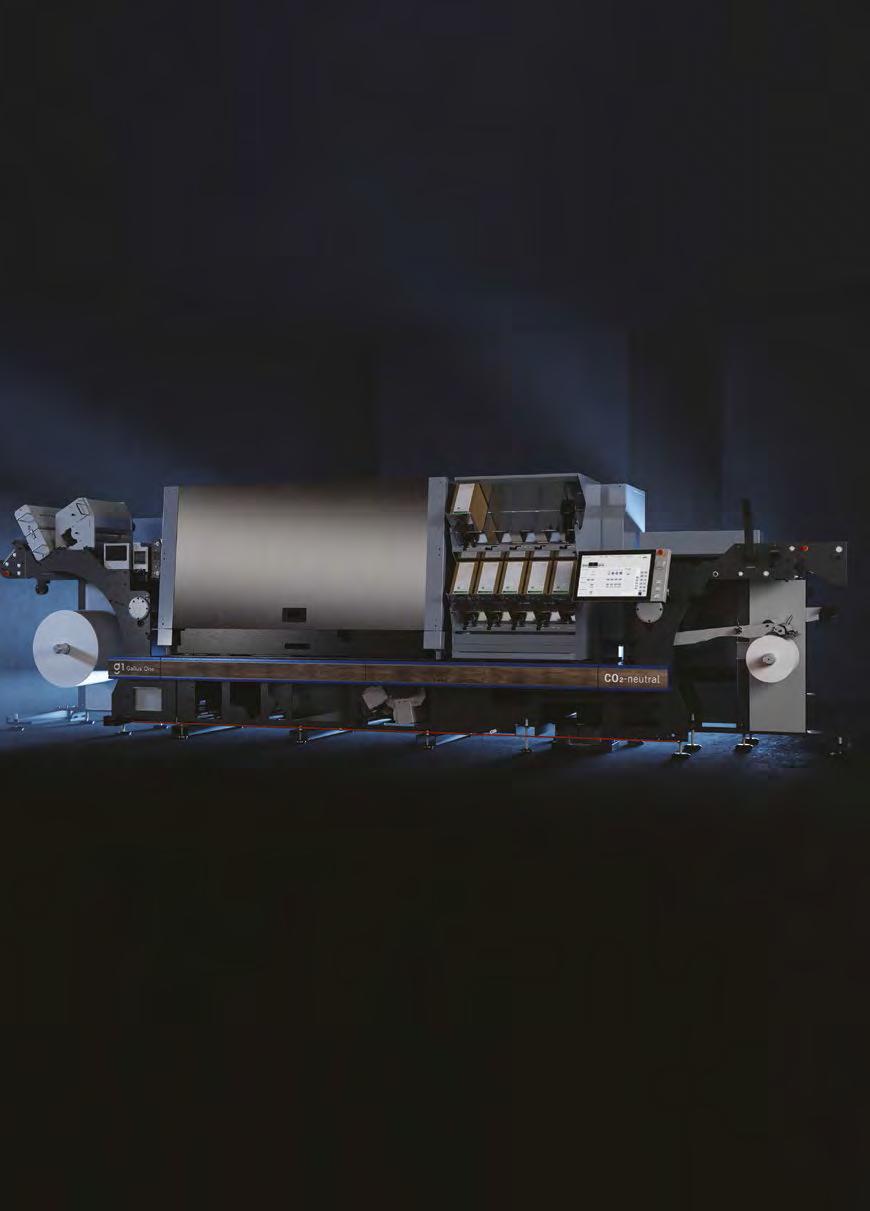
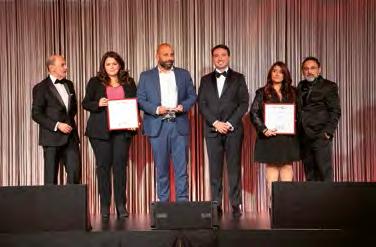

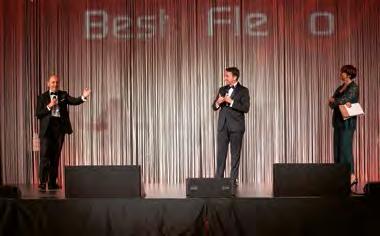






el 2017, su idea di Maurizio Vitale, già fondatore della sede di Mavigrafica di Fisciano (SA), nasceva la sede di Mavigrafica Milano. L’obiettivo era di servire al meglio e più da vicino la clientela nel nord Italia, migliorando il servizio e i tempi di consegna, facendo conoscere più da vicino “la realtà Mavigrafica”. Mavigrafica Milano inizia il suo percorso come studio grafico ma, grazie alla notevole crescita quotidiana, ha avuto l’esigenza di costituire un sito industriale a Pioltello. La nuova sede di Pioltello non è più una succursale ma una vera e propria realtà che oggi conta 18 collaboratori che, insieme ai 35 della sede centrale di Fisciano, sono diventa-
ti sicuramente un punto di riferimento del mercato italiano e non solo. Chiaramente possono contare anche su tante altre attrezzature e tante altre tecnologie così da soddisfare le esigenze più disparate che il mercato richiede.
In ultimo, ma non per importanza, quest’anno è stata aperta la terza sede di Sesto Fiorentino (FI), nata per consolidare la crescita e il posizionamento anche nel centro Italia. La proprietà, in controtendenza con il momento storicamente difficile, ha pensato e portato avanti un ulteriore investimento nato per “affiancare i nostri clienti ed essere sempre più performanti” racconta Fabio Casavecchia, responsabile della sede di Milano.

Questa tecnologia di Miraclon consente agli utilizzatori del sistema Flexcel NX di produrre clichè per stampe flessografiche di alta qualità all’interno di una finestra operativa più ampia in macchina da stampa.
PureFlexo Printing oggi già disponibile per stampa su film e carta patinata, controlla le sbavature d’inchiostro e riduce i fermi macchina non programmati, favorendo una stampa nitida, colori stabili e una maggiore produttività. Al contempo elimina le sbavature insorgenti soprattutto quando si stampa con inchiostri a base solvente su film flessibile, cioè quando si usano inchiostri a alta fluidità, supporti non assorbenti e pressione elevata.

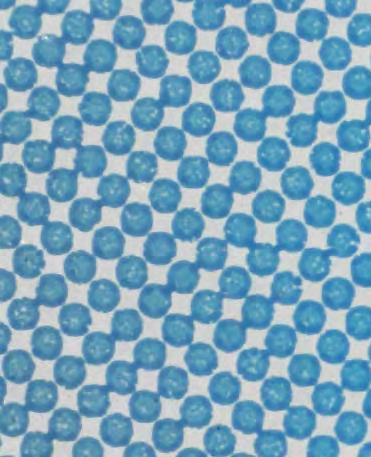

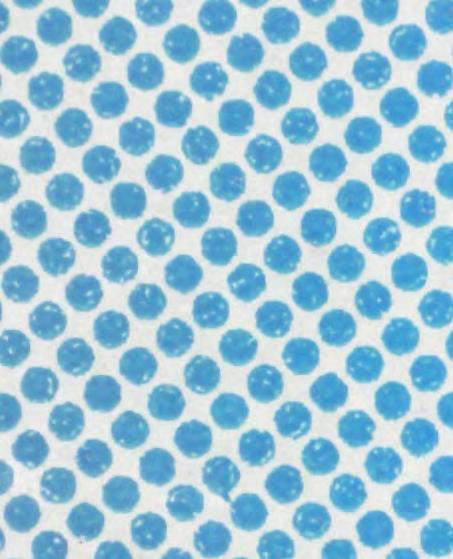
“La nostra avventura con PureFlexo Printing è iniziata un anno fa. Quando ce l’hanno presentata abbiamo capito immediatamente la portata degli effetti positivi e soprattutto quali vantaggi immediati avrebbero avuto i clienti, riducendo sostanzialmente il consumo di inchiostro e di solvente, abbattendo significativamente i tempi di avviamento e gli scarti, si sarebbero ridotti anche i costi”, dice Fabio. Il prodotto inoltre è stato pensato per migliorare il problema comune che si verifica quando vengono utilizzati rulli anilox con volumi più elevati per la riproduzione di tinte piatte, praticamente quando si usano delle tecniche comuni a tutti gli stampatori che, forzando la mano, danno maggiore pressione di stampa e eseguono altre pratiche di adattamento che però producono spesso effetti di stampa indesiderati come aloni, stampa sporca e rifiuto sui bordi dei tratti (TEV: Trailing Edge Void), senza dimenticare che i volumi di inchiostro più elevati presentano an-

che problemi di asciugatura, causa spesso di un rallentamento nel processo di stampa flexo.
“Le varie problematiche analizzate, con PureFlexo Printing sono risolte, garantendo tempi di attività e uniformità migliori sulla macchina da stampa, nitidezza dei testi in positivo e in negativo anche usando colori in pasta, sfumature migliori, ottimo bilanciamento dei colori, ottima stesura dei fondi ed una puntuale ripetibilità”, spiega Fabio.
Fabio Casavecchia e Giorgia Vitale, figlia di Maurizio Vitale, che a Pioltello si occupa di amministrazione, ci tengono a sottolineare quasi all’unisono che “i cambiamenti a fronte dell’introduzione di Pure Flexo sono stati recepiti con entusiasmo dall’intera squadra, che non coltiva l’individualità ma la crescita comune”. Ed è proprio insieme che hanno lavorato Mavigrafica e SDR Pack, stampatore di imballaggi flessibili che si affida a loro da anni per i suoi clichè e ora usa esclusivamente impianti prodotti con PureFlexo Printing.

SINCE ITS INCEPTION IN 1997, MAVIGRAFICA, WHICH CELEBRATES 25 YEARS OF ACTIVITY THIS YEAR, HAS CHOSEN TO BE A PREPRESS SERVICE FOR FLEXO SECTOR, FOCUSING ON TECHNOLOGICAL INNOVATION AND ON THE BEST AND IDEAL SOLUTIONS AVAILABLE ON THE MARKET. MAVIGRAFICA WAS BORN AS A GRAPHIC STUDIO, THE WORLD OF PLATES WAS INTRODUCED IN 2008, RECOGNIZING KODAK AS THE RIGHT PARTNER TO DIFFERENTIATE ITSELF IN THE PLATEMAKING SECTOR, BY PURCHASING THE FIRST ITALIAN FLEXCEL NX SYSTEM. TODAY MAVIGRAFICA USES 3 FLEXCEL NX WIDE 5080 SYSTEMS WITH A 4TH ON THE WAY AND COULD NOT MISS THE APPOINTMENT WITH PUREFLEXO PRINTING PROPOSED BY MIRACLON, ALREADY ADOPTED FOR SOME TIME, WITH THE AIM OF OFFERING ITS CUSTOMERS, OPEN TO COLLABORATION AND INNOVATION, SUPERIOR QUALITY CLICHÉ FOR FLEXIBLE PACKAGING PRINTING
n 2017, on the idea of Maurizio Vitale, former founder of Mavigrafica site in Fisciano (SA), was born Mavigrafica Milan. The goal was to serve custo-

mers better and more closely in northern Italy, improving service and delivery times, making “the Mavigrafica reality” known more closely. Mavigrafica Milano began
its career as a graphic studio but, thanks to the remarkable daily growth, it had the need to set up an industrial site in Pioltello, near Milam. The new site in Pioltello is no longer a branch but a real company that today has 18 employees who, together with the 35 of the headquarters in Fisciano, have certainly become a point of reference on the Italian market and beyond. Clearly they can also count on many other equipment and many other technologies so as
to satisfy the most diverse needs that the market requires.
Last but not least, this year the third branch in Sesto Fiorentino (FI) was opened, created to consolidate growth and positioning also in central Italy. The owners, in contrast with the historically difficult moment, have thought and carried out a further investment created to “support our customers and be increasingly performing” says Fabio Casavecchia, manager of the Milan office.

SDR Pack, che ha sede a Rosà (VI), nasce nel 1960, quando Giorgio Ferracin si rese conto che i prodotti alimentari non sarebbero stati imballati nella carta ancora per molto e quindi acquistò un estrusore e poi anche una macchina da stampa. Sacchettificio di Rosà, come si chiamava allora, produceva sacchetti per caramelle e maglieria. Successivamente negli anni ’80 Marina, Carlo e Sandro, figli di Giorgio, hanno sviluppato l’azienda per soddisfare le esigenze dei clienti e la gestiscono tuttora con i rispettivi figli Matteo Boscardin, Giorgia e Nicolò Ferracin. Oggi l’azienda a conduzione familiare, ma molto ben strutturata, è una SpA e si chiama SDR Pack, ha 110 collaboratori e un parco macchine completo: 5 estrusori per produrre foglia per accoppiamento e tubolare per sacchetti; 5 macchine da stampa flexo; un sistema di trasformazione degli scarti di film in granuli di plastica; 6 accoppiatrici, 2 taglierine automatiche un nuovo magazzino automatizzato di 2.000 mq, per un totale di 6.200 posti pallet, tutto ciò per produrre imballaggi flessibili in plastica, carta, materiali riciclati e compostabili.
SDR Pack è un’azienda giovane e dinamica in continua crescita, dove tradizione e innovazione si fondono. Il punto di forza è la stabilità, data dalle radici dei fondatori che si unisce alla spinta innovativa delle nuove generazioni. Ed è un’azienda coraggiosa perché poche realtà hanno l’entusiasmo di investire in periodi non facili, come gli anni appena trascorsi.
Con queste premesse SDR Pack era il cliente perfetto cui proporre i clichè realizzati con la tecnologia PureFlexo. Kenan Kasibovic, direttore di produzione, ci racconta le varie fasi di questa evoluzione: “abbiamo iniziato a lavorare con Mavigrafica con questa nuova tecnologia 8 mesi fa, ma la collaborazione con loro è iniziata 4 anni fa. Abbiamo fatto tutte le prove prima monocromatiche, poi in quadricromia e ora tutti gli impianti che ci forniscono sono eseguiti con PureFlexo; noi siamo sempre molto disponibili a sperimentare nuove tecnologie con i fornitori di cui ci fidiamo. Dopo queste prove abbiamo iniziato a proporre gli impianti eseguiti con PureFlexo ad alcuni clienti che hanno percepito visivamente la differenza, anzi ora lo garantiamo come standard qualitativo in un’ottica di miglioramento continuo del prodotto che viene venduto con molto apprezzamento”. È importante ricordare che questo stampatore non ha dovuto introdurre procedure particolari in macchina, non

Miraclon technology allows users of the Flexcel NX system to produce high quality flexo printing plates within a larger operating window on the press. PureFlexo Printing, already available for print on film and coated paper, controls ink spreads and reduces unscheduled downtime, promoting sharp printing, stable colors and increased productivity. At the same time, it eliminates spreads that arise especially when printing with solvent-based inks on flexible film, i.e. when using inks with high fluidity, not-absorbent substrates and high pressure.
“Our adventure with PureFlexo Printing began a year ago. When they presented it to us, we immediately understood the extent of the positive effects and above all what immediate benefits the customers would have, substantially reducing ink and solvent consumption, significantly reducing
start-up times and waste, costs would also have been reduced”, says Fabio. The product has also been designed to improve the common problem that occurs when anilox rolls with higher volumes are used for the reproduction of spot colors, practically when using techniques common to all printers that, by forcing the hand, give greater printing pressure and make other adaptation practices which, however, often produce unwanted printing effects such as halos, dirty printing and rejection on the edges (TEV: Trailing Edge Void), without forgetting that the higher volumes of ink also present drying problems, causing often of a slowdown in flexo printing process.
“The various problems analyzed with PureFlexo Printing are solved, guaranteeing better uptime and uniformity on the printing machine, sharpness of positive and negative texts even using paste colors, better shades, excellent color balance, excellent solids and punctual repeatability”, explains Fabio.
Fabio Casavecchia and Giorgia Vitale, dau-

ghter of Maurizio Vitale, who is in charge of administration in Pioltello, are keen to underline almost in unison that “the changes following the introduction of Pure Flexo have been enthusiastically received by the entire team, which does not cultivate individuality but common growth”.
And it is precisely together that Mavigrafica and SDR Pack, a flexible packaging printer
who has relied on them for years for his clichés, worked together and now uses exclusively plates produced with PureFlexo Printing.
SDR Pack, which is based in Rosà (VI), was born in 1960, when Giorgio Ferracin

è cambiato nulla relativamente ad avviamento, lastre, biadesivo, composizione del colore, permettendogli di stampare in successione clichè PureFlexo prima e dopo aver stampato con clichè tradizionali. Dal punto di vista ecologico i vantaggi derivano dalla riduzione dei tempi di avviamento, dei consumi di inchiostro e dei lavaggi perché la pulizia del clichè risulta più semplice e breve; inoltre non dovendo fare azioni correttive, ci sono anche meno scarti e l’ottimizzazione della produttività riduce anche la quantità di solventi, su tutta la gamma produttiva di SDR Pack. È evidente che il clichè prodotto con tecnologia PureFlexo Printing ha un costo di gestione leggermente più alto ma i vantaggi qualitativi si riscontrano positivamente nella vendita degli stessi, in quanto anche i brand sono attenti ad un prodotto con un appeal e un impatto a scaffale garantito.
Kenan continua dicendo: “auspichiamo che la nostra azienda e i fornitori mirino al miglioramento continuo, perché avere dei progetti e sfide nuove ti porta a lavorare con più voglia e impegno. Solo con le innovazioni e sperimentando si può crescere; come noi apprezziamo dai
nostri fornitori le nuove proposte, i nostri clienti si aspettano da noi progetti innovativi, vogliamo pensare di far crescere il mercato con questo approccio”.
Fabio Casavecchia conclude affermando che “l’obiettivo, tra noi e SDR Pack, è comune: innalzare la qualità ai massimi livelli; come con tutti i nostri clienti ci assicuriamo continui confronti e scambi di idee, anche per superare le difficoltà che ovviamente non mancano. Il lavoro ci impone un miglioramento continuo, tanta sostanza e qualità, impegnando sempre di più il mercato con nuovi e diversi prodotti tecnologicamente avanzati. Noi siamo pronti e voi?”.
realized that food products would not be packed in paper for much longer and therefore bought an extruder and then also a printing machine.
Sacchettificio di Rosà, as it was called then, produced bags for sweets and knitwear. Later in the 1980s Marina, Carlo and Sandro, Giorgio’s sons, developed the company to meet the needs of customers and still manage it with their respective sons Matteo Boscardin, Giorgia and Nicolò Ferracin.
Today the family-run company, but very well structured, is a SpA and is called SDR Pack, has 110 employees and a complete machine park: 5 extruders to produce sheets for lamination and tubular for bags; 5 flexo printing machines; a system for converting film waste into plastic granules; 6 laminators, 2 automatic cutting machines a new automated warehouse of 2,000 sm, for a total of 6,200 pallet spaces, all this to produce flexible packaging in plastic, paper, recycled and compostable materials. SDR Pack is a young and dynamic com-
pany in continuous growth, where tradition and innovation come together.
The strong point is the stability, given by the roots of the founders, which is combined with the innovative drive of the new generations. And it is a courageous company because few companies have the enthusiasm to invest in difficult times, such as the years that have just passed.
With these premises SDR Pack was the perfect customer to propose the clichés made with PureFlexo technology.
Kenan Kasibovic, production manager, tells us about the various phases of this evolution: “we started working with Mavigrafica with this new technology, about 8 months ago, after a long collaboration with them started 4 years ago. We have done all the tests first in monochrome, then in four-color process and now all the plates they provide us are performed with PureFlexo; we are always very willing to experiment new technologies with the suppliers we trust.
After the tests we began to offer them to some customers who have visually percei-


ved the difference, indeed now we guarantee it as a quality standard with a view to continuous improvement of the product that is sold with great appreciation”. It is important to remember that this printer did not have to introduce special procedures in the machine, nothing has changed regarding start-up, plates, double-sided adhesive, color composition, allowing him to print PureFlexo clichés in succession before and after printing with traditional clichés. From an ecological point of view, the advantages derive from the reduction of start-up times, ink consumption and washing because the cleaning of the cliché is simpler and shorter; moreover, since there are no corrective actions, there are also less waste and the optimization of productivity also reduces the amount of solvents, across the entire SDR Pack production range.
It is evident that the cliché produced with PureFlexo Printing technology has a slightly higher operating cost but the qualitative advantages are positively found in their sale, as even the brands are attentive to
a product with a guaranteed shelf appeal and impact.
Kenan continues by saying: “we hope that our company and suppliers aim for continuous improvement, because having new projects and challenges leads you to work with more will and commitment.
Only with innovations and experimenting you can grow; just as we appreciate new proposals from our suppliers, our customers expect innovative projects from us, we want to think that with this approach we let the market grow”.
Fabio Casavecchia concludes by stating that “the goal, between us and SDR Pack, is common: raising quality to the highest levels; as with all our customers, we ensure continuous discussions and exchanges of ideas, also to overcome the difficulties that obviously are not lacking.
The work requires us to continuously improve, a lot of substance and quality, increasingly engaging the market with new and different technologically advanced products. We are ready and you?”.


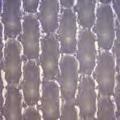
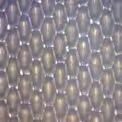

Making our world more productive
LO SCORSO OTTOBRE, DURANTE LA FIERA K, UTECO CONVERTING HA PRESENTATO A CLIENTI, GIORNALISTI E OPERATORI DEL SETTORE QUESTA NUOVA MACCHINA FLEXO CHE CONTINUA LA LUNGA STORIA DI SUCCESSO DELLA GAMMA ONYX DI UTECO E LA INNOVA CON TECNOLOGIE ALL’AVANGUARDIA PER GARANTIRE UN’ECCELLENTE QUALITÀ DI STAMPA, LA MASSIMA FACILITÀ D’USO PER L’OPERATORE E CAMBI LAVORO ESTREMAMENTE RAPIDI. ONYX GO È LA PIÙ VELOCE NEL SUO SEGMENTO DI MERCATO ED È DISPONIBILE IN DUE CONFIGURAZIONI: 8 O 10 COLORI, ENTRAMBI CON UNA LARGHEZZA DI STAMPA MASSIMA DI 1320 MM E MASSIMO PASSO STAMPA DI 720 MM.
Un cambio di passo e di strategia, quello che ha visto protagonista Uteco, che dall’inizio del 2022 ha lanciato la sua nuova immagine e brand identity con la volontà di offrire al mercato soluzioni sempre più innovative e performanti, forte di un know-how di oltre 35 anni, che dalla stampa flexo e converting, si è poi ampliato con l’inserimento della rotocalco e del digitale, completando le soluzioni di stampa per la massima flessibilità. Senza dubbio in questa strategia di sviluppo verso il futuro, la stampa flexo rappresenta un focus di primaria importanza, e non è un caso che la prima nuova nata sotto il nuovo brand sia il nuovo modello Onyx Go dedicata alla produzione di imballaggi flessibili in corte tirature stampati in flexo.

Circa 200 persone hanno assistito alla presentazione della Onyx Go, dotata di numerose innovazioni brevettate, frutto di un progetto durato oltre 18 mesi, nato dalle esigenze dei clienti, e pensata per risolvere i loro problemi e le loro necessità quotidiane. Nel corso dell’evento sono intervenuti l’Executive Chairman di Uteco Aldo Peretti, l’amministratore delegato Mario Tomasi, il
Chief of Innovation Officer Alessandro Bicego e Patrizia Pinto, Chief Customer Service Officer.
Il Progetto Onyx Go è stato davvero una sfida molto entusiasmante: risultato di oltre 200 interviste con i clienti per comprendere meglio le loro necessità; oltre 80 dipendenti Uteco che vi hanno lavorato in 10 diversi reparti; oltre 3500 ore di design ed engineering; nata dopo 35 anni di esperienza nell’industria flexo.
Onyx Go è la macchina flexo più compatta nella categoria delle macchine piccole; anche lo scarto è ridottissimo, in tal modo si possono risparmiare fino a 200 km di materiale all’anno; la macchina è dotata del pacchetto di risparmio energetico più innovativo grazie al sistema Active Dry®, che può far risparmiare il 50% di energia in un anno; la sua produttività non ha eguali grazie al tempo di cambio più rapido sul mercato per la sua classe; garantisce la massima sicurezza ed ergonomia per gli operatori grazie all’ l’unità di essiccazione tra i colori completamente rimovibile con ugelli sostituibili e l’innovativa cabina di pilotaggio con HMI,regolabile in altezza.
Il nuovo design di Onyx Go definisce un’identità forte e riconoscibile, un senso di ordine e compattezza, mentre la nuova forma trasmette efficienza e cura in termini di utilizzo e interazione con l’operatore.
La macchina stampa a una velocità massima di 400 m/ min ed è dotata di tecnologie all’avanguardia per garantire cambi lavoro veloci ed efficienti: la regolazione delle pressioni di stampa è automatica e avviene in meno di 3 minuti, mentre il registro è pressoché istantaneo. Questa nuova tecnologia, Active Start, riduce lo spreco materiale
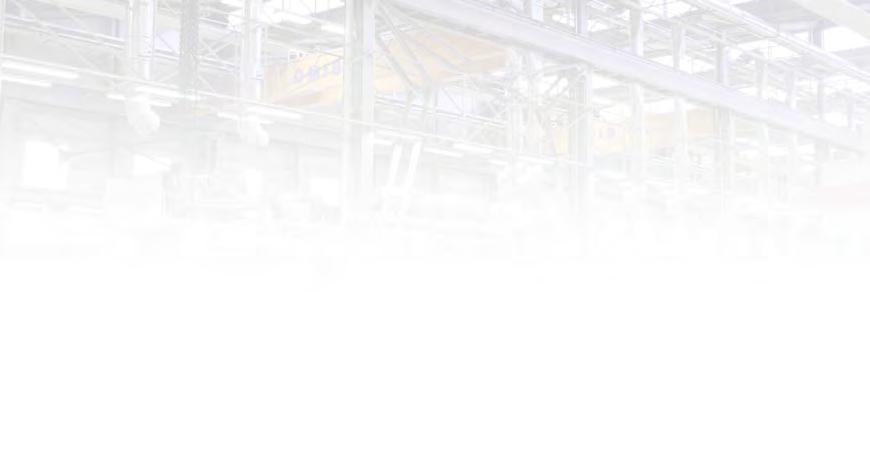
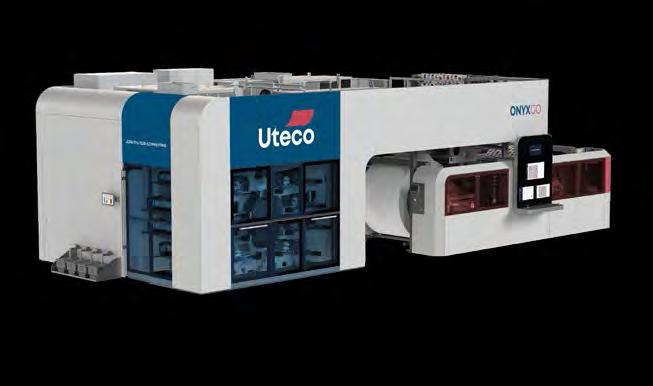
a ogni avvio a meno di 20m e aumenta di conseguenza i tempi di produzione.
Onyx Go è la più compatta nel suo segmento di mercato con un ingombro totale inferiore a 50 mq e spazi operativi ridotti. Il nuovo posizionamento del sistema di lavaggio e inchiostrazione, a ridosso del tamburo centrale, permette di liberare lo spazio nella zona posteriore della macchina.
Onyx Go è sostenibile perché dotata di nuove tecnologie all’avanguardia per il risparmio energetico. Active Dry® potenzia l’essiccazione tra i colori e nel tunnel, ottimizzando il flusso d’aria e la temperatura di essiccazione in base alle caratteristiche di stampa. Questa tecnologia garantisce fino al 50% di risparmio energetico rispetto ai sistemi di asciugamento tradizionali.
Active Ink è il sistema di inchiostrazione più innovativo sul mercato, con dosaggio intelligente dell’inchiostro per ciascuna unità colore: il flusso di mandata di inchiostro e le pressioni sono ottimizzate in base alle caratteristiche di stampa. Questa tecnologia garantisce
fino al 60% di risparmio energetico rispetto ai sistemi di inchiostrazione tradizionali.
Dynamic Doctoring® garantisce l’ottimizzazione del flusso degli inchiostri e una pressione costante all’interno della camera racla: i volumi di inchiostri sono ridotti al minimo garantendo risparmio in termini di consumo. Per cicli di lavaggio molto rapidi viene usato Sprint Wash: meno di 4 minuti per un ciclo completo e fino al 40% di risparmio sui consumi di solventi.
Onyx Go è molto sicura e facile da utilizzare, grazie alle innovazioni che garantiscono massima ergonomia per gli operatori. Le unità di essiccazione tra i colori sono completamente rimovibili, garantendo un facile accesso al tamburo centrale; gli ugelli possono essere sostituiti per migliorare la potenza di asciugatura.
Dynamic Cockpit è il simbolo dell’ergonomia personalizzata: un cockpit molto ergonomico grazie all’HMI flottante, che si adatta in base all’altezza e alle esigenze dell’operatore; Dynamic Lift, gradino mobile integrato all’interno del gruppo stampa, consente di raggiungere le unità colore più elevate in modo semplice e sicuro. Inoltre tutte le applicazioni posizionate su il ponte macchina sono completamente accessibili tramite passerella e la nuova carenatura è progettata con materiali specifici per contenere i rumori: il livello di rumore risultante è inferiore a 80dB.
LAST OCTOBER, DURING K FAIR, UTECO CONVERTING PRESENTED TO CUSTOMERS, JOURNALISTS AND OPERATORS IN THE SECTOR THIS NEW FLEXO MACHINE THAT CONTINUES THE LONG SUCCESS STORY OF UTECO’S ONYX RANGE AND INNOVATES IT WITH CUTTINGEDGE TECHNOLOGIES TO GUARANTEE EXCELLENT PRINT QUALITY, MAXIMUM EASE OF USE FOR THE OPERATOR AND EXTREMELY FAST JOB CHANGES. ONYX GO IS THE FASTEST IN ITS MARKET SEGMENT AND IS AVAILABLE IN TWO CONFIGURATIONS: 8 OR 10 COLORS, BOTH WITH A MAXIMUM PRINT WIDTH OF 1320 MM AND A MAXIMUM PRINT REPEAT OF 720 MM.
Achange of pace and strategy, the one that saw Uteco as the protagonist, which from the beginning of 2022 launched its new image and brand identity with the desire to offer the market increasingly innovative and performing solutions, with a strong know-how of more than 35 years, which from flexo

printing and converting, has then expanded with the inclusion of gravure and digital, completing the printing solutions for maximum flexibility. Without a doubt in this development strategy towards the future, flexo printing represents a focus of primary importance, and it is no coincidence that the first new machine with the new brand is the
new Onyx Go model for production of flexible packaging, flexo printed in short runs. About 200 people attended the presentation of Onyx Go, equipped with numerous patented innovations, the result of a project that lasted over 18 months, born from the needs of customers, and designed to solve their problems and daily needs. During the event, Uteco’s Executive Chairman Aldo Peretti, CEO Mario Tomasi, Chief of Innovation Officer Alessandro Bicego and Patrizia Pinto, Chief Customer Service Officer, spoke.
The Onyx Go Project was truly a very exciting challenge: the result of over 200 interviews with customers to better understand their needs; over 80 Uteco employees who worked for in 10 different departments; over 3500 hours of design and engineering; born after 35 years of experience in the flexo industry. Onyx Go is the most compact flexo machine in the small machine category; waste is also very small, thus saving up to 200 km of material per year; the machine is equipped with the most innovative energy saving package




Anilox in fibra di carbonio per grandi e piccoli formati ad alte velocità Incisioni a celle aperte NOVALINE Audit del parco anilox presso il vostro stabilimento
Pulizia in soli 30 secondi Per tutti i tipi di inchiostri Prodotto a pH neutro Prezzo competitivo Dopo Prima
Flexxo Printing Solution seleziona le marche e i prodotti migliori sul mercato mettendo a disposizione capacità e competenze per ottimizzare al massimo le risorse dei clienti Per informazioni: +39 338 6661927 - m.gionta@flexxops.com
Quale feedback avete ricevuto dal mercato dopo il vostro cambio di look che nasconde anche importanti contenuti tecnologici?
“Abbiamo iniziato il 2022 presentando la nuova Brand Identity aziendale che ha visto il rinnovamento del logo e dei colori aziendali, insieme alla comunicazione interna ed esterna. Il tutto seguito dalla partecipazione a molte fiere sia locali che globali, per finire poi con il nostro recente “Amazing Reveal”, durante la fiera K, in Germania. I feedback ricevuti dal mercato sono stati entusiasmanti, in quanto la presentazione delle nostre nuove tecnologie è stata accolta con molto interesse. Circa 200 persone hanno assistito alla presentazione della Onyx Go, dotata, come citato sopra, di numerose innovazioni brevettate, frutto di un progetto durato oltre 18 mesi. Tutto ciò, è solo l’inizio di quella sarà la prossima serie di aggiornamenti futuri che comprendono nuove macchine e applicazioni sia fisiche che digitali, frutto di innovazione e digitalizzazione”.
Potete anticiparci qualche novità che vedremo nel 2023?
“La nostra tendenza è quella di ottimizzare le macchine, specialmente oggi perché dobbiamo sempre piú tener conto dei consumi energetici che incidono per il 50% sui costi di stampa. Quindi lavoriamo sulle macchine in questa direzione per ottimizzare la produzione. Dobbiamo anche far sí che il convertitore abbia sempre meno scarti, quindi puntiamo su controlli sempre maggiori e piú sofisticati sulle nostre macchine. Poi c’è il discorso della connettività e del processo industria 4.0 con l’integrazione con altri settori produttivi all’interno delle aziende. Così contribuiamo all’evoluzione delle capacità tecnologiche dei clienti. Ultimo punto, la nostra responsabilità sociale, e questo significa anche lavorare puntando alle migliori condizioni di lavoro, quindi ergonomia, facilità di utilizzo, abbattimento del rumore, massima sicurezza sul lavoro. Da qui la sinergia proattiva con i clienti per integrare le nostre macchine con altri elementi della produzione. Per questo facciamo attenzione anche ai prodotti accessori e ai consumabili. Questo vuol dire anche lavorare in modo integrato con i nostri partner tecnologici. Facendo parte del grande gruppo che abbiamo alle spalle, la nostra forza è quella di portarci in casa tecnologie con l’acquisizione non solo come range di prodotti e filiali nel mondo, ma
thanks to the Active Dry® system, which can save 50% of energy in one year; its productivity is unmatched thanks to the fastest changeover time on the market for its class; guarantees maximum safety and ergonomics for operators thanks to the completely removable drying unit between colors with replaceable nozzles and the innovative cockpit with HMI, adjustable in height.
The new Onyx Go design defines a strong and recognizable identity, a sense of order and compactness, while the new shape conveys efficiency and care in terms of use and interaction with the operator.
The machine prints at a maximum speed of 400 m/min and is equipped with cutting-edge technologies to ensure fast and efficient job changes: the adjustment of printing pressures is automatic and takes place in less than 3 minutes, while the register is almost instantaneous. This new technology, Active Start, reduces material waste at every
start to less than 20m and consequently increases production times.
Onyx Go is the most compact in its market segment with a total footprint of less than 50 sm and reduced operating spaces. The new positioning of the washing and inking system, close to the central drum, frees up the space in the rear area of the machine.
Onyx Go is sustainable because it is equipped with new cutting-edge technologies for energy saving. Active Dry® enhances drying between colors and in the tunnel, optimizing the airflow and drying temperature according to printing characteristics. This technology guarantees up to 50% energy savings compared to traditional drying systems.
Active Ink is the most innovative inking system on the market, with intelligent ink dosing for each color unit: ink delivery flow and pressures are optimized based on printing characteristics. This technology guarantees up to 60% energy savings compared to traditional inking systems.
Dynamic Doctoring® guarantees the optimization of ink flow and constant pressure insi-
de the doctor blade chamber: ink volumes are reduced to a minimum, guaranteeing savings in terms of consumption. Sprint Wash is used for very fast washing cycles: less than 4 minutes for a complete cycle and up to 40% savings on solvent consumption. Onyx Go is very safe and easy to use, thanks to the innovations that guarantee maximum ergonomics for the operators. The drying units between colors are completely removable, ensuring easy access to the central drum; the nozzles can be replaced to improve the drying power.
Dynamic Cockpit is the symbol of personalized ergonomics: a very ergonomic cockpit thanks to the floating HMI, which adapts according to the height and needs of the operator; Dynamic Lift, a mobile step integrated into the printing unit, allows you to reach the highest color units in a simple and safe way. Furthermore, all the applications positioned on the machine deck are fully accessible via the gangway and the new fairing is designed with specific materials to contain noise: the resulting noise level is less than 80 dB.
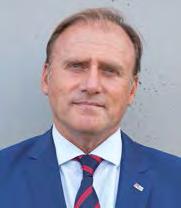
What feedback have you received from the market after your change of look which also hides important technological contents?
“We started 2022 by presenting the new corporate brand identity which saw the renewal of the corporate logo and colors, together with internal and external communication. This was followed by participation in many trade shows both local and global, ending up with our recent “Amazing Reveal” during K trade show in Germany. The feedback received from the market has been enthusiastic, as the presentation of our new technologies has been welcomed with great interest. About 200 people attended the presentation of the Onyx Go, equipped, as mentioned above, with many patented innovations, the result of a project that lasted over 18 months. All this is just the beginning of what will be the next series of future updates that include new machines and applications both physical and digital, result of innovation and digitization”.

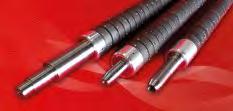


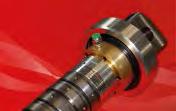

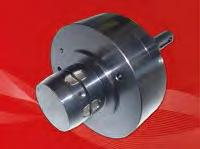
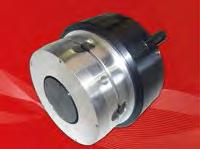
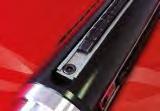
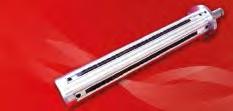
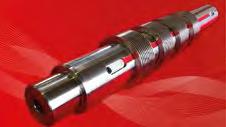

come know-how tecnologico. Procederemo nei prossimi anni sulla strada dell’innovazione, avviando importanti collaborazioni con partner strategici per il nostro core business, procedendo a ritmo serrato con la chiusura degli obiettivi del nostro piano d’investimento”.
Uteco è da sempre un brand leader che ha coinvolto l’intera filiera per sviluppare soluzioni sempre più sostenibili. Quali sono i principali trend che guideranno i futuri sviluppi di packaging e quindi di tecnologie produttive?
“Vediamo una ibridizzazione sempre piú spinta delle tecnologie: non c’è piú la divisione classica delle tipologie di stampa, flexo o offset o rotocalco, ma macchine ibride con unità di una o dell’altra tecnologia di stampa, compreso il digitale, come vediamo già ampiamente nel narrow web. In particolare per la stampa su plastica e ad alta velocità. Questo trend è inteso come un mix di tecnologie e ulteriori trattamenti integrati nelle macchine, come gli accoppiamenti e altre lavorazioni. Perché il cliente finale chiede che il prodotto sia stampato non solo sul materiale scelto, ma con la tecnologia migliore. In questi discorsi si inserisce la scelta degli inchiostri, ad esempio quelli all’acqua, gli EB, UV e UV LED, di cui noi siamo stati pionieri, con molte macchine installate nel mondo e con ulteriori sviluppi in corso. Con partner
tecnologici e una capacità interna di ricerca e sviluppo, che solo le società piú grosse e strutturate con forte capacità di investire riescono ad affrontare. Oramai in un mondo cosí integrato, interconnesso, non si vince da soli, ma con il supporto dei nostri partner tecnologici e investitori, e degli utenti finali, sia come prodotto sia come sviluppo di tecnologie, per quelli che sono i trend del packaging. Noi abbiamo la fortuna di essere attivi in tutte le tipologie di stampa per gli imballaggi. Uno dei nostri punti forti è lo sviluppo delle tecnologie in funzione delle tendenze del packaging e dei materiali di supporto. Tanto piú che Uteco è presente sui mercati non solo con macchine flexo, ma anche rotocalco, stampa offset e digitale. È naturale quindi, che per seguire questo trend si richiedano tecnologie con alta velocità per una produzione sostenuta con controlli di qualità in linea, per cui puntiamo su continui aggiornamenti con investimenti in funzione degli sviluppi delle richieste del mercato, per il packaging primario e secondario, dal formato stampa, ai supporti, agli inchiostri e alla stampa UV, UV LED e EB”.
Can you anticipate some news that we will see in 2023?
“Our tendency is to optimize the machines, especially today because we increasingly must take into account more and more energy consumption which accounts for 50% of printing costs. So we work on the machines in this direction to optimize production. We also need to ensure that the converter has less and less waste, so we aim for ever greater and more sophisticated controls on our machines. Then there are connectivity and industry 4.0 process with integration with other production sectors within companies. In this way we contribute to the evolution of the customers’ technological capabilities. Last point, our social responsibility, and this also means working aiming at the best working conditions, therefore ergonomics, ease of use, noise reduction, maximum safety in the workplace. Consequently is important the proactive synergy with customers to integrate our machines with other elements of production. This is why we also pay attention to accessory products and consumables. This
also means working in an integrated way with our technology partners. Being part of the large group we have behind us, our strength is to bring technologies in-house with the acquisition not only as a range of products and subsidiaries in the world, but as technological know-how.
We will proceed along the path of innovation in the coming years, launching important collaborations with strategic partners for our core business, proceeding at a rapid pace with the closure of the objectives of our investment plan”.
Uteco has always been a leading brand that has involved the entire supply chain to develop increasingly sustainable solutions. What are the main trends that will guide future developments in packaging and therefore in production technologies?

“We are seeing an ever more extreme hybridization of technologies: there is no longer the classic division of printing tech-
niques, flexo, offset or gravure, but hybrid machines with units of one or another printing technology, including digital, as we can already see widely in the narrow web sector, especially for plastic and high speed printing. This trend is a mix of technologies and further treatments integrated into the machines, such as laminating and other processes. Because the end customer requests that the product must printed not only on the chosen material, but with the best technology. These discussions include the choice of inks, for example water-based, EB, UV and UV LED: as regards these we were pioneers, with many machines installed around the world and with further developments in progress. With technological partners and internal research and development capacity, which only the largest and most structured companies with a strong ability to invest are able to deal with.
In such an integrated and interconnected world, we don’t win alone, but with the support of our technological partners and investors, and of end users, both as regards product and technology development, for what are the packaging trends.
We are fortunate to be active in all types of packaging printing. One of our strong points is the development of technologies according to packaging trends and support materials. Especially since Uteco is present on the markets not only with flexo machines, but also gravure, offset and digital printing. It is therefore natural that to follow this trend, high-speed technologies are required for a big production with in-line quality controls, so we focus on continuous updates with investments based on the developments of market demands, for primary and secondary packaging, from the print format, to the substrates, to the inks and to UV, UV LED and EB printing”.
La sostenibilità è ormai un must per ogni tipo di attività produttiva, e la stampa flexo di imballaggi non ne è esente. Ma se fino a qualche anno fa se ne parlava come una materia quasi astratta, con orizzonti temporali molto futuristici, ora non è più così e aziende leader come DuPont si interrogano al loro interno per poter fornire risposte e soluzioni concrete ai mercati di riferimento. È il cliente che lo chiede e l’industria non può più farsi trovare impreparata.
DuPont è da sempre impegnata per lo sviluppo sostenibile del settore, e sono tanti gli interrogativi a cui bisogna dare risposte. Il cambiamento climatico è senz’altro in cima alla lista, ormai è del tutto evidente quanto l’attività umana incida sul clima e ciò che sembrava impensabile fino a pochi anni fa, adesso è problematica tangibile e sotto gli occhi di tutti. Quello ambientale è un aspetto sicuramente importante, da dove si parte sempre per affrontare l’argomento sostenibilità, ma non è l’unico. Oggi è sempre più chiaro che la sostenibilità sia un per-
DUPONT IN QUALITÀ DI AZIENDA LEADER È CHIAMATA A FORNIRE RISPOSTE CONCRETE AL MERCATO IN TEMA SOSTENIBILITÀ. UN IMPEGNO SERIO E NON PIÙ PROCRASTINABILE CHE È STATO AL CENTRO DEL DIBATTITO DELL’ULTIMA RIUNIONE AZIENDALE DELLO SCORSO SETTEMBRE DOVE SONO STATI ANALIZZATI CON ESPERTI DEL SETTORE GLI ULTIMI TREND E LE SOLUZIONI TECNOLOGICHE PER TRADURRE IN AZIONI CONCRETE I DETTAMI TEORICI
corso che ogni realtà, con l’ausilio di consulenti specializzati, può costruirsi per dare al mercato quelle risposte e quelle rassicurazioni richieste per creare fiducia in un marchio, e deve coinvolgere anche l’aspetto sociale ed economico, come emerso durante l’ultimo convegno Gipea. Perché è vero che tutto ha un prezzo, e la sostenibilità costa, ma poi i conti vanno fatti col mercato che ha sempre l’ultima parola.
Una crescita sostenibile, cui oggi tutti i fornitori di tecnologie ma anche di servizi dovrebbero mirare, non è solo un programma a fasi per migliorare le prestazioni ambientali delle proprie proposte, ma un modo globale di lavorare, per offrire un importante valore economico e aprire nuove opportunità. Gli operatori del mercato dovrebbero abbandonare l’idea che le tecnologie sostenibili siano solo un compromesso o operazioni di marketing, perché oggi la rivoluzione sostenibile è qui e sta sconvolgendo tutti i settori. Per l’ambiente e la società è un’ottima cosa ma mette sotto pressione tutti, fornitori e utilizzatori. Dappertutto non facciamo che sentire questa parola, anche alla recente fiera K, la più importante esposizione mondiale per il settore plastico, il leit motiv era questo, e anzi abbiamo notato un grande fermento tradotto in soluzioni concrete, da parte delle aziende che operano nel mondo della plastica, tradizionalmente sotto l’occhio del ciclone e dei consumatori che spesso sono portati a considerare questo materiale come non sostenibile




“Quando abbiamo iniziato a parlare di sostenibilità nel 2008 la parola sostenibile era poco più che uno slogan. Oggi per noi essere sostenibili significa sviluppare dei prodotti specifici affinché si possa ottenere un packaging che sia maggiormente sostenibile, con un costo finale allineato al tradizionale e stampato con gli stessi standard di qualità”, dice Mario Castelli
When we started talking about sustainability in 2008, the word sustainable was little more than a slogan. Today, for us being sustainable means developing specific products so that we can obtain a packaging that is more sustainable, with a final cost aligned with the traditional one and printed with the same quality standards.

quando in realtà oggi l’aspetto principale è valutarne la funzionalità in relazione al compito chiamato a svolgere e la sua effettiva riciclabilità, senza dimenticare che quasi sempre è maggiore l’impatto ambientale del prodotto
contenuto nella confezione, piuttosto che la confezione stessa che deve proteggere, trasportare e quindi garantire che un alimento non venga sprecato. E sappiamo quanto lo spreco alimentare sia un altro aspetto da considerare nel percorso della sostenibilità.
Webinar, eventi e incontri di associazioni hanno la sostenibilità come tema principe. Un dato che sicuramente emerge da tutto questo discutere e da questi confronti è l’importanza della necessità di misurare la sostenibilità e lo strumento migliore per farlo e per contrastare il greenwashing è l’LCA, processo oggettivo di valutazione dei carichi ambientali connessi con un prodotto, un servizio o un’attività, includendo l’intero ciclo di vita del prodotto, per capire quali siano i principali contributi all’impatto ambientale di un prodotto o di un servizio e quindi agire per abbatterli. Questa analisi è importante soprattutto perché è evidente che non ci sono ricette o percorsi universali per diventare sostenibili; ognuno, dal singolo individuo all’azienda, deve costruirseli da solo. Altrettanto chiaro che nessuna persona o azienda potrà essere sostenibile al 100%, ma l’importante è avvicinarsi all’obiettivo il più possibile.
E l’impatto degli imballaggi? Quelli in cartone sono definiti ecologici per loro natura, sono riciclabili e biodegradabili al 100%, e il cartone riciclato non dura di meno o è meno resistente. Invece la caratteristica principale degli imballaggi
DUPONT AS A LEADING COMPANY IS CALLED UPON TO PROVIDE THE MARKET CONCRETE ANSWERS ON SUSTAINABILITY. THIS SERIOUS COMMITMENT THAT CAN NO LONGER BE POSTPONED WAS THE FOCUS OF DISCUSSION AT LAST SEPTEMBER COMPANY MEETING WHERE THE LATEST TRENDS AND TECHNOLOGICAL SOLUTIONS TO TRANSLATE THEORETICAL DICTATES INTO CONCRETE ACTIONS WERE ANALYZED WITH INDUSTRY EXPERTS.
Sustainability is now a must for any type of manufacturing business, and flexo packaging printing is not exempt. But, if until a few years ago it was talked about as an almost abstract subject, with very futuristic time horizons, this is no longer the case, and leading companies such as DuPont are questioning themselves internally in order to be able to provide concrete answers and solutions to
their target markets. It is the customer who is asking for it, and the industry can no longer be caught unprepared.
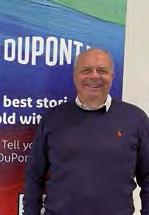
DuPont has always been committed to the sustainable development of the industry, and there are many questions that need to be answered. Climate change is undoubtedly at the top of the list; it is now quite evident how much human activity affects the climate, and what seemed unthinkable just
a few years ago are now tangible issues that are there for all to see. The environmental one is certainly an important aspect, where we always start to address sustainability, but it is not the only one. Today it is increasingly clear that sustainability is a path that each reality, with the help of specialized consultants, can build itself to give the market those answers and reassurances required to create trust in a brand.
But above all, environmental sustainability, as also emerged during the last Gipea conference, must also go hand in hand with social and especially economic sustainability. Because it is true that everything has a price, and sustainability costs money, but then is the market that always has the last word.
Sustainable growth, which today all technology but also service providers should aim at, is not just a phased program to improve the environmental performance of their proposals, but a comprehensive way of working
to deliver significant economic value and open new opportunities. Operators for their part should abandon the idea that sustainable technologies are just a compromise or marketing operations, because today the sustainable revolution is here and it is disrupting all sectors. It is good for the environment and society, but it puts pressure on everyone, suppliers and users.
Everywhere we keep hearing this word, even at the recent K trade show, the world’s most important exhibition for the plastics industry, the leitmotif was this, and indeed we noticed a great excitement translated into concrete solutions, by companies operating in the world of plastics, traditionally under the eye of the storm and consumers who are often led to consider this material as unsustainable when in fact today the main aspect is to evaluate its functionality in relation to the task called upon to perform and its effective recyclability, without forgetting that almost always the environmental impact of the product contained in the package is greater than the package itself, which
DuPont’s view on the latest trends for an increasingly sustainable packaging industry

flessibili è la loro leggerezza; il peso dell’imballo, e quindi del prodotto finito, in fase di trasporto e stoccaggio è inferiore e sono minori il peso e il volume in fase di smaltimento, quando diventa rifiuto. Molto importante è l’aspetto legato al design di un imballaggio, per cui la fase progettuale va considerata come il punto di partenza affinché un imballaggio possa essere pensato per un riutilizzo e a fine vita, per un riciclo al 100%.
Si potrebbe obiettare che anche se il cartone richiede meno energia per essere prodotto usa più acqua e produce una gran quantità di rifiuti solidi; inoltre il cartone è più pesante e voluminoso per cui produce più emissioni di CO2 associate con il trasporto. Ma il cartone deriva da una risorsa rinnovabile e viene prodotto sempre più spesso usando energia rinnovabile e si ricicla più facilmente. Relativamente alla plastica le percentuali di riciclo stanno aumentando, anche se le percentuali di riciclo del cartone sono tre volte tanto e i prodotti in cartone sono fatti con cartone riciclato. Insomma, tanti i pro e i contro, ma in ultima analisi l’obiettivo primario, a prescindere dalla scelta di usare imballaggi in plastica o cartone, è ridurre i rifiuti, riducendo quindi i materiali utilizzati per produrli (lastre, prodotti chimici, inchiostri), riutilizzando gli imballaggi e riciclando il più possibile. E in questo percorso tutti sono chiamati a svolgere un ruolo, condividendo esperienze e informazioni tra tutti gli stakeholder della filiera, dai produttori di materiali e tecnologie, fino
agli stampatori-converter e infine la GDO e i consumatori. DuPont ha svolto internamente un’analisi del ciclo di vita incentrata sulle differenze e l’impatto tra la stampa flessografica e rotocalco utilizzando l’esempio degli imballaggi flessibili, quindi, nell’area flessografica, la produzione di lastre confrontando la tecnologia a solventi e termica, con un’analisi approfondita nel mondo della stampa flexo su cartone ondulato e per sacchetti di carta.
E per quanto riguarda le lastre? Ovviamente la lastra ottimale è quella in grado di fornire la più alta qualità di stampa, su supporti sostenibili e a costi contenuti. Ne parliamo in questa intervista con Christian Apenberg, Regional Marketing Manager EMEA & AP –Cyrel® Solutions, DuPont e Mario Castelli, Sales Manager Southern Europe and Northern Africa – Cyrel® Solutions, DuPont.

Pensando al 2030, quali azioni concrete metterete in atto per raggiungere gli obiettivi della sostenibilità?
“DuPont si è impegnata a fissare obiettivi scientifici per ridurre
must protect, transport and thus ensure that a food is not wasted. And we know how food waste is another aspect to consider in the sustainability journey.
Webinars, events and association meetings have sustainability as a major theme. One thing that certainly emerges from all this discussion and comparisons is the importance of the need to measure sustainability, and the best tool to do so and to counteract greenwashing is the LCA, an objective process of assessing the environmental impact associated with a product, service
or activity, throughout the entire life cycle of a product, to understand what are the main contributions to the environmental impact of a product or of a service and then act to eliminate them. This analysis is especially important because it is clear that there are no universal recipes or pathways to becoming sustainable; everyone, from the individual to the company, must build them for themselves. Equally clear is that no person or company will be 100% sustainable, but the important thing is to get as close to the goal as possible.
What about the impact of packaging?

Those made of cardboard are defined as environmentally friendly by their very nature; they are 100% recyclable and biodegradable, and recycled cardboard does not last less or is less durable. Instead, the main characteristic of flexible packaging is its light weight; the weight of the packaging, and therefore of the finished product, during transport and storage is less, and
the weight and volume during disposal, when it becomes waste, are less. Very important is the design aspect of packaging, so the design phase should be considered as the starting point so that a package can be designed for reuse and at the end of its life, for 100% recycling.
It could be argued that although cardboard requires less energy to be produced it uses more water and produces a large amount of solid waste, plus cardboard is heavier and bulkier so it produces more CO2 emissions associated with transportation. But cardboard is derived from a renewable resource and is increasingly produced using renewable energy and is more easily recycled. Further to plastic, recycling rates are increasing, although cardboard recycling rates are three times as high and cardboard products are made from recycled cardboard.
In short, many pros and cons, but ultimately the primary goal, regardless of whether you choose to use plastic or cardboard packaging, is to reduce waste, thus reducing the
materials used to produce it (plates, chemicals, inks), reusing packaging and recycling as much as possible. And in this journey everyone is called upon to play a role, sharing experiences and information among all the stakeholders in the supply chain, from the producers of materials and technologies, down to printer-converters and finally the large-scale retail trade and consumers.
DuPont carried out internally a Life Cycle Analysis focused on the differences and impact between flexo and gravure printing using the example of flexible packaging, and then, in the flexo area platemaking comparing solvent technology and thermal development, with an in-depth analysis in the world of flexo printing on corrugated board and for paper bags.
What about plates? Obviously, the optimal plate is the one that can provide the highest print quality, on sustainable and cost-effective substrates. We discuss this in this interview with Christian Apenberg, Regional Marketing Manager EMEA & AP – Cyrel ® Solutions at DuPont and
St.OR costituita nel 1987, è in grado di soddisfare ogni Vostra necessità nel settore del Converting e dell’Automazione, di operare sia su progetti nuovi, sia su macchine esistenti, con precisione e puntualità.


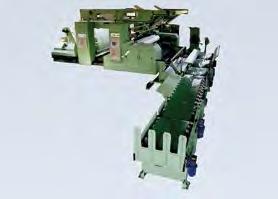
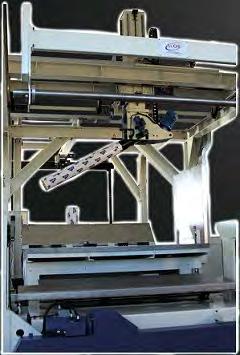

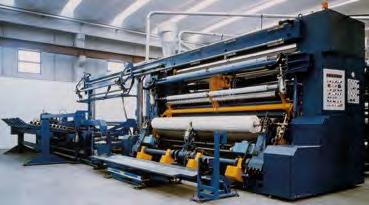
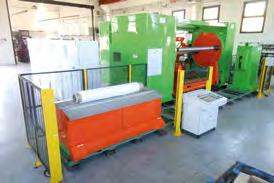

le emissioni di gas serra (GHG) in linea con l’iniziativa Science Based Targets (SBTi), una partnership tra CDP (ex-Carbon Disclosure Project), Global Compact delle Nazioni Unite, World Resources Institute (WRI) e WWF. Ciò include riduzioni concrete delle emissioni Scope 1 e 2 (cioè dirette e indirette) entro il 2030, obiettivi che molto probabilmente l’attività di Cyrel® Solutions supererà. DuPont si è inoltre impegnata ad arrivare a emissioni zero entro il 2050.
In DuPont™ Cyrel®, lavoriamo continuamente per ridurre l’impatto ambientale dei nostri prodotti e per fornire ai nostri clienti un flusso di lavoro ottimizzato sia per i sistemi a solvente che termici. Ci sono diversi progetti in lavorazione e i risultati saranno continuamente riportati in LCA aggiornate. È particolarmente importante per noi guardare al quadro completo, che include le materie prime che utilizziamo per produrre i nostri prodotti, imballaggi per fornire i sistemi, i flussi di lavoro e i materiali di consumo più efficienti per ga-
rantire che anche i nostri clienti possano migliorare la loro impronta ambientale. Esempi recenti sono nell’ultimo aggiornamento del LCA, che afferma un vantaggio complessivo del 38% in meno di CO2 per il flusso di lavoro termico Cyrel® FAST rispetto al solvente, ma anche lo sviluppo di un nuovo solvente, Cyrel® Flexosol-X, che elimina componenti pericolosi oltre a fornire fino al 50% in meno di emissioni di COV”.
Materiali, tecnologie e sostenibilità - le soluzioni DuPont per le esigenze dei mercati dell’imballaggio flessibile, etichette e cartone ondulato “Ovviamente clienti diversi hanno esigenze diverse e siamo in grado di supportare i clienti nel loro percorso di sostenibilità ed è necessario iniziare ad agire adesso. Crediamo fermamente nella flessografia come tecnologia a più basso impatto per la stampa di imballaggi flessibili, come dimostrato dalla nostra LCA in quanto generalmente consuma meno solventi ed energia e produce meno scarti all’avviamento.
La produzione di lastre per queste applicazioni può essere ottimizzata passando alla tecnologia termica: Cyrel® FAST consuma meno elettricità rispetto a un flusso di lavoro con solventi (fino all’81% in meno,
Thinking ahead to 2030, which concrete actions will DuPont put in place to achieve sustainability goals?

DuPont has committed to setting science-based targets to reduce greenhouse gas (GHG) emissions in line with the Science Based Targets initiative (SBTi), a partnership between CDP (former Carbon Disclosure Project), the UN Global Compact, World Resources Institute (WRI) and the WWF. This includes concrete reductions of Scope 1 and 2 emissions by 2030 – goals, which the Cyrel® Solutions business will most likely over-achieve. DuPont also committed to deliver zero carbon emissions by 2050.
At DuPont™ Cyrel®, we are continuously working on reducing the environmental impact of our products as well as providing our customers with an optimized workflow for both solvent and thermal solutions.
There are several projects being worked on and the results will continuously be reported in updated LCAs. It is especially important for us to look at the full picture, which includes the raw materials we use to produce our products, packaging to provide the most efficient systems, workflows and consumables to ensure also our customers can improve their environmental footprint. Recent examples are in the updated LCA, which states an overall benefit of 38% lower CO2 for the thermal Cyrel® FAST workflow process compared to solvent –but also developing a new solvent, Cyrel® Flexosol-X, that eliminates hazardous components as well as providing up to 50% lower VOC emissions.
Materials, technologies, and sustainability - DuPont solutions for the needs of the markets: flexible packaging, labels, corrugated board We understand that different customers have different needs, we are able to support customers on their sustainability jour-
ney and we have to start taking actions today. We truly believe in Flexography as the lowest impact technology for flexible packaging printing, as proven by our LCA. It generally consumes less solvent and energy
and produces less startup waste. Platemaking for these applications can be optimized by going thermal: Cyrel® FAST consumes less electricity compared to a solvent workflow (up to 81% less, according


secondo un recente studio basato su dati interni ed esterni) ed evita completamente l’uso e la manipolazione di solventi organici. Per il cartone ondulato, dove predominano le lastre con rilievo profondo, supportiamo i nostri clienti in diversi modi: da una parte forniamo lastre più sottili, supportate da materiale in schiuma per il montaggio, che contribuiscono a ridurre l’impatto ambientale. L’altro punto, forse ancora più importante, è supportare la tendenza del settore a utilizzare cartoni con un contenuto riciclato più elevato e su cui spesso è più difficile stampare. DuPont™ Cyrel® ha sviluppato lastre fotopolimeriche come Cyrel® DLC per il post-print su cartone ondulato e Cyrel® ESM per il pre-print su carta/cartoncino che offrono una qualità di stampa superiore anche su supporti difficili. In questo modo consentiamo ai converter e ai brand-owner di scegliere materiali con un minore impatto ambientale, senza compromettere la qualità di stampa”.
Il futuro sarà sempre più a favore delle tecnologie termiche o ci sarà ancora spazio per quelle a solvente? “DuPont è stato un pioniere della produzione di soluzioni termiche per la preparazione di lastre flessografiche e l’industria conferma la sua idoneità per molte applicazioni, non solo per ragioni di sostenibilità. Dall’introduzione di Cyrel® FAST oltre 20 anni fa, sono state
installate più di 1.500 unità e continuiamo a innovare con i nostri sistemi di ultima generazione Cyrel® FAST 2000 TD e 3000 TD. Ci aspettiamo un’ulteriore crescita del processo termico.
Tuttavia, non abbandoniamo i sistemi a solvente. I nostri recenti lanci di prodotti (solvente Cyrel® Flexosol-X non pericoloso e a basse emissioni, lastre Cyrel® EASY R in versione termica e solvente e Cyrel® Lightning LSH ottimizzato per l’esposizione a LED) confermano il nostro impegno a supportare entrambi i flussi di lavoro”.
Secondo la vostra esperienza, quanto sono importanti le credenziali di sostenibilità verso il cliente finale di un player come DuPont per la decisione di acquisto per prodotti e tecnologie?
“Abbiamo riscontrato un grande interesse per dichiarazioni di sostenibilità supportate dai dati. Molti dei nostri clienti diretti e indiretti stanno lavorando per raggiungere obiettivi di sostenibilità e noi, come fornitori di materiali e sistemi, possiamo supportare la valutazione dello status quo fornendo informazioni basate sui fatti. Nell’attuale contesto economico, la sostenibilità può essere di nuovo messa in secondo piano rispetto agli obiettivi a breve termine, ma il raggiungimento dei requisiti di sostenibilità sarà sempre più un requisito competitivo e finanziario”.
polymer plates like Cyrel ® DLC for corrugated postprint and Cyrel ® ESM for paper/corrugated preprint that deliver higher print quality even on demanding substrates. With that, we allow converters and brand owners to go for materials with lower environmental impact – without taking a hit on print quality.
Will the future increasingly favor thermal technologies, or will there still be room for solvent-based ones?
DuPont has been a pioneer on the thermal flexo platemaking and the industry confirms its suitability for many applications – not only for sustainability reasons.
(non-hazardous and low-emission Cyrel® Flexosol-X solvent, Cyrel® EASY R plate series in thermal and solvent and the LED-exposure optimized Cyrel® Lightning LSH) confirm our commitment to support both workflows.
In your experience, how important are the sustainability credentials toward the end customer of a player like DuPont to the purchasing decision for products and technologies?
to a recent study based on internal and external data) and avoids the use and handling of organic solvent completely.
For corrugated applications, where plates with deep relief requirements are dominant, we support our customers in different ways: by providing thinner pla -
tes, supported by mounting foam, contribute to reduce environmental impact. In addition, maybe even more important is supporting the industry trend of using cardboard with higher recycling content that is often more difficult to print on. DuPont™ Cyrel ® has developed photo -
Since the introduction of Cyrel® FAST over 20 years ago, far more than 1,500 units have been installed and we continue to innovate with our latest generation systems Cyrel® FAST 2000 TD and 3000 TD. We do expect a further growth of the thermal process. Nevertheless, we do not abandon solvent systems. Our recent product launches
We have experienced high interest in data-supported sustainability declarations. Many of our direct and indirect customers are working to achieve sustainability goals and we, as a material and system supplier, can support assessing the status-quo by providing fact-based information. In the current economic environment, sustainability may be deprioritized again for shorter term goals, but achieving sustainability requirements will increasingly also be a competitive and financial requirement.

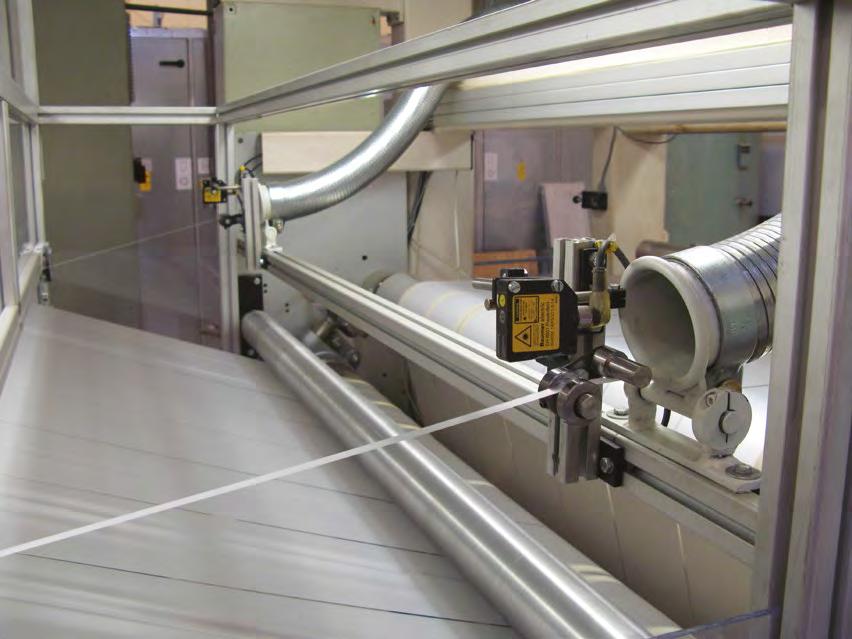


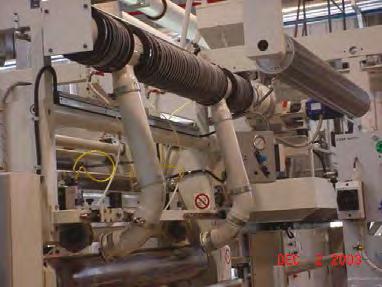


n evento importante, quello che ha visto protagonista Masterpack che ha gentilmente aperto le porte del proprio stabilimento di produzione di Veruno (No) per mostrare dal vivo, e in funzione, l’ultima arrivata, la flexo 8 colori Optima2 di Soma. Il costruttore ceco, celebra così i suoi primi 30 anni di attività sul mercato della flexo, ponendo la prima bandierina nel mercato italiano, per la grande soddisfazione di Matteo Melegatti, Area Sales Manager per l’Italia di Soma.
Un open house che ha visto la presenza anche di diversi partner tecnologici che hanno collaborato a questo progetto, e che durante le due sessioni previste in un’unica giornata si sono alternati per presentare le proprie soluzioni, adottate sulla macchina da stampa di Masterpack: i sistemi di ispezione e qualità di stampa di


Grafikontrol, Color Consulting per la gestion del colore, Rossini che ha fornito le maniche, BFT Group con le sue camera-racla in fibra di carbonio e i cilindri anilox di Praxair. Gli impianti stampa sono stati realizzati da Inci-Flex con fotopolimeri MacDermid, e proprio durante le due demo di stampa, Enzo Consalvo, titolare di Inci-Flex ha spiegato ai presenti i vantaggi dei sistemi di incisione adottati dalla service campano in grado di elevare al massimo la qualità di stampa di una macchina flexo come la Optima 2.
Raul Rizza Direttore dello stabilimento Masterpack, in carica dallo scorso luglio, e profondo conoscitore delle tecnologie di stampa flexo e rotocalco, ha avuto l’onore

di aprire il breve meeting tecnico che ha preceduto le demo di stampa – “Siamo felici di essere i primi a poter lavorare su questa macchina di stampa. Nella mia esperienza lavorativa mi sono spesso trovato ad avviare nuove macchine, ma devo ammettere che questa è la prima volta che mi trovo davanti a una tecnologia che all’atto pratico, mantiene le promesse. Tra l’altro ho potuto constatare una eccezionale facilità di utilizzo da parte dei nostri operatori e sono rimasto sorpreso nel notare l’assenza di pulsantiera a bordo macchina per regolare le pressioni, che vengono gestite completamente in autonomia dal software e senza l’intervento dell’operatore”.
“Quello che caratterizza quest’ultima generazione di Optima2 è il focus sulla qualità di stampa”, ci racconta Matteo Melegatti, giovane ma per tradizione familiare cresciuto a pane e flexo, per il quale questa prima installazione rappresenta un primo tassello per la crescita del costruttore ceco nel nostro competitivo mercato interno. “La nuova generazione di Optima2 oltre a mantenere una importante solidità nella struttura meccanica che garantisce assenza di vibrazioni, è equipaggiata con un sistema chiamato Intelligent Job Tuning, il quale grazie a uno speciale algoritmo, tara ogni singolo motore dei gruppi stampa, in funzione delle proprietà dinamiche di cosa è stato effettivamente montato, al fine di massimizzare il registro e quindi la qualità di stampa”. È importante sottolineare che Soma, nel suo nuovo stabilimento in Repubblica Ceca, vanta una moderna ed equipaggiata officina meccanica, poiché tradizionalmente, tutte le componenti considerate strategiche per le proprie macchine da stampa e converting, vengono realizzate internamente, per garantire il massimo della qualità. La Optima2 8 colori installata in Masterpack è ideale per
Consulting for color management; Rossini who supplied the sleeves; BFT Group with its carbon fiber chamber-doctor blade and Praxair anilox rolls. The plates were created
THERE WAS EXPECTATION FOR THIS OPEN HOUSE, AFTER THE CLOSING OF THE NEGOTIATIONS AND THE ANNOUNCEMENT OF THE SALE GIVEN AT THE END OF 2021. AND THE MOMENT FINALLY ARRIVED IN THE MIDDLE OF LAST SEPTEMBER WHEN SOMA, TAKING ADVANTAGE OF THE HOSPITALITY OF MASTERPACK, ORGANIZED AN OPEN HOUSE AT VERUNO (NO) PLANT TO PRESENT THE NEW OPTIMA2 AND THE S-MOUNT AUTOMATIC CLICHÉ MOUNTING SYSTEM
An important event that saw Masterpack as the protagonist who kindly opened the doors of its production plant in Veruno (No) to show live and operating the latest arrival, the 8-color Flexo Optima2 by Soma. The Czech manufacturer celebrates its first 30 years of activity on the flexo market placing the first flag in the Italian market, with great


satisfaction of Matteo Melegatti, Area Sales Manager for Italy at Soma. An open house that also saw the presence of several technological partners who collaborated on this project, and who during the two sessions scheduled in a single day presented their solutions adopted on the Masterpack printing machine: Grafikontrol inspection and print quality systems; Color
by Inci-Flex with MacDermid photopolymers. During the two printing demos, Enzo Consalvo, owner of Inci-Flex, explained to those present the advantages of the engraving
Masterpack chose Soma, installing the 8-color Optima2: Czech manufacturer’s first machine in the Italian market

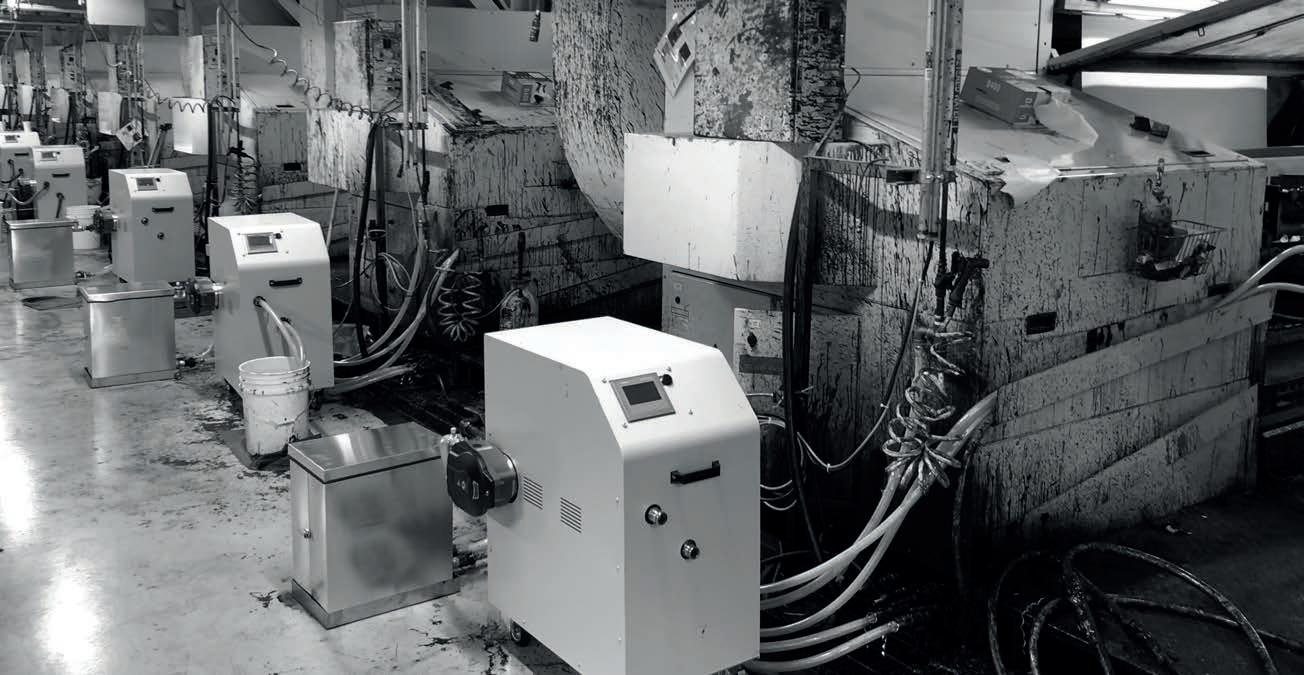

le tirature medie e corte, dotata di ogni automatismo volto a ridurre al minimo gli avviamenti e gli scarti di materiale, come IRIS, il sistema (automatico) di controllo del registro e delle impostazioni di stampa.
La Optima2 in generale può stampare in banda larga sia sul film plastici che su supporti cartacei con inchiostri base acqua, solvente, UV e UV led per una velocità massima di 600 metri al minuto.
Infine grazie alla presenza di S-Cloud, il sistema informatico progettato dal costruttore ceco, per collegare le tecnologie Soma e ricevere assistenza dal service, sempre del team Soma, al fine di un supporto molto più tempestivo ed efficiente.

A pochi mesi dall’installazione della nuova Optima2, qual è l’aspetto che più vi ha entusiasmato?
“Il feedback che ho dal reparto stampa è che questa nuova macchina ha un utilizzo semplice e intuitivo, e questo aspetto facilita e velocizza notevolmente il setup di nuovi lavori. un altro dettaglio molto apprezzato, è che le velocità di stampa promesse, molto importanti
per il nostro modo di lavorare, vengono effettivamente raggiunte senza sacrificare la qualità”.
Per quale tipologia di lavori viene principalmente impiegata la nuova macchina da stampa?
“Specialmente per tirature medio- basse, queste proprio perché, come precedentemente menzionato, la combinazione di una macchina molto dinamica e veloce nei cambi lavoro e le velocità di stampa che possiamo raggiungere ci permettono di essere competitivi per questo range di tirature di stampa, oggi sempre più richieste”.
Voi siete stati sempre un punto di riferimento per soluzioni di packaging innovativi. Che direzione sta prendendo il mercato?
“Dopo la bolla di richieste di materiali compostabili degli scorsi anni, il mercato sembra stia tornando sui passi dei “classici” film plastici ma con un occhio di riguardo verso i monomateriali, questo per poter rimanere coerenti con il movimento del “diventare sostenibili” che è nato in questi anni e che è comunque un tema, giustamente,
systems adopted by the Campania service able to raise maximum print quality of a flexo machine such as the Optima 2. Raul Rizza, director of Masterpack plant since
last July, and profound connoisseur of flexo and gravure printing technologies, had the honor of opening the short technical meeting that preceded the printing demos.

“We are happy to be the first to be able to work on this printing machine. In my work experience I have often found myself starting new machines, but I must admit that this is the first time that I am faced with a technology that, in practice, keeps its promises. Among other things, I was able to see an exceptional ease of use by our operators and I was surprised to notice the absence of a push-button panel on the machine to adjust the pressures, which are managed completely independently by the software and without the intervention of the operator”.
“What characterizes this latest generation of Optima2 is the focus on print quality”, tells us Matteo Melegatti, young but traditionally grown up on bread and flexo, for which this first installation represents a first step for the growth of the Czech manufacturer in our competitive domestic market. “The new generation of Optima2 in addition to maintaining an important solidity in the mechanical
structure that guarantees absence of vibrations, is equipped with a system called Intelligent Job Tuning, which thanks to a special algorithm, it calibrates each single motor of the printing units, according to the dynamic properties of what has actually been mounted, in order to maximize the register and therefore the print quality”. It is important to underline that Soma, in its new factory in the Czech Republic, boasts a modern and equipped mechanical workshop, since traditionally, all the components considered strategic for its printing and converting machines, are made internally, to guarantee the highest quality.
The 8-color Optima2 installed in Masterpack is ideal for medium and short runs, equipped with any automatism aimed at minimizing start-ups and material waste, such as the IRIS, the intelligent (automatic) register and impression setting.
The Optima2 in general can print in wide web both on plastic films and on paper substrates with water-based, solvent, UV and UV LED inks for a maximum speed of


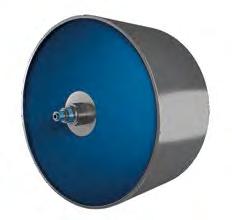
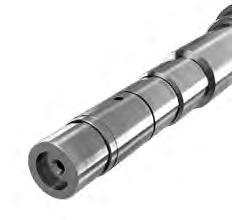
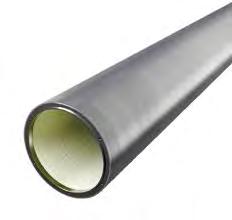
L’azienda, fondata da Claudio Binda nel 1988, è oggi gestita insieme ai figli Valerio, Max e Arianna, con l’aggiunta di figure manageriali in grado di supportare l’azienda nel suo percorso di crescita, nazionale e internazionale, ha sempre operato nel mercato di alta qualità, affidandosi alla stampa flexo come punto di partenza per le proprie soluzioni di packaging innovative. A un’offerta standard di film per imballaggio flessibile, Masterpack nel corso degli anni, acquisendo know-how specifico, si è sempre più orientata verso soluzioni speciali ad alto valore aggiunto, come etichette pre-applicate apri&chiudi, zip pre-applicate in bobina, sistemi apri&chiudi tramite delaminazione controllata degli strati del materiale, film accoppiati a carta con finestre fustellate laser a registro, film per cottura diretta in forno, valvole di degasaggio brevettate e una vasta gamma di prodotti riciclabili o compostabili in linea coi dettami dell’economia circolare.
The company, founded by Claudio Binda in 1988, is now managed together with his sons Valerio, Max and Arianna, with the addition of managerial figures able to support the company in its growth path, national and international, has always operated in the high-quality market, relying on flexo printing as the starting point for its innovative packaging solutions.
To a standard offer of flexible packaging films, over the years Masterpack, acquiring specific know-how, has increasingly oriented itself towards special solutions with high added value, such as pre-applied open & close labels, pre-applied zip on reels, open & close systems through controlled delamination of the layers of the material, films laminated to paper with laser-cut windows in register, film for direct baking in the oven, patented degassing valves and a wide range of recyclable or compostable products in line with the dictates of circular economy.
600 meters per minute.
Finally, thanks to the presence of S-Cloud, the computer system designed by Soma to interconnect SOMA equipment and receive assistance from SOMA service team, the operation and support is much more efficient.
A few months after the installation of the new Optima2, what is the aspect that thrilled you most?
“The feedback I have from the printing department is that this new machine is simple and intuitive to use, and this aspect greatly facilitates and speeds up the set-up of new jobs. another very appreciated detail is that the promised print speeds, which are very important for our working approach, are actually achieved without renouncing to quality”.
What kind of jobs is the new printing machine mainly used for?

“Especially for medium-low runs, because,
as previously mentioned, the combination of a very dynamic and fast machine in job changes and the printing speeds that we can achieve allow us to be competitive for this range of print runs, today requested more and more”.
You have always been a point of reference for innovative packaging solutions. What direction is the market taking?
“After the bubble of requests for compostable materials of the past few years, the market seems to be returning to the steps of “classic” plastic films but with an eye towards mono-materials, this in order to remain consistent with the” becoming sustainable “movement that was born in recent years and which is still a fundamental theme. I must also say that we are finally seeing a return in requests for materials with integrated reclosure systems, our specialty. I say finally because they are very useful solutions against food waste and I believe that to this issue, which is
fondamentale. Devo anche dire che vediamo finalmente un ritorno di richieste per materiali con sistemi di richiusura integrati, nostra specialità. Dico finalmente perché sono soluzioni molto utili contro lo spreco alimentare e credo non venga data ancora molta importanza a questa tematica, strettamente legata all’ambiente.
Per Masterpack Il 2023 lo vedo anche come l’anno della carta termosaldante, viste le numerose richieste e i nuovi progetti che continuiamo a ricevere”.
deve presentarsi oggi sul mercato uno stampatore-converter per soddisfare le richieste di innovazione e sostenibilità provenienti dalla clientela?
“Il mercato attuale è molto agguerrito e con prezzi molto bassi atti a cercare di portare in casa più fatturato possibile. Oggi, per non entrare in questo loop di continuo abbassamento prezzi con conseguente riduzione dei margini, è fondamentale differenziarsi sul mercato del packaging, ed in primis portando ai clienti innovazioni; immancabili quelle mirate a portare materiali alternativi\riciclabili. Nel nostro caso, il nostro reparto ricerca e sviluppo, gestito da mio fratello Valerio, è una parte fondamentale della nostra azienda dove vengono sviluppati la maggior parte dei prodotti che ha reso Masterpack conosciuta a livello Europeo e oltre, avendo cominciato a spedire con regolarità anche in nord America”.
closely linked to the environment, is not yet given much importance. For Masterpack I also see 2023 as the year of heat-sealing paper, given the numerous requests and new projects that we continue to receive”.
How must a printer-converter present itself on the market today to satisfy the requests for innovation and sustainability coming from customers?
“The current market is very fierce and with very low prices aimed at trying to bring home as much turnover as possible. Today, in order not to enter this loop of continuous lowering of prices with consequent reduction in margins, it is essential to differentiate oneself on the packaging market, and above all by bringing customers innovations; inevitable are those aimed at bringing alternative\recyclable materials. In our case, our research and development department, managed by my brother Valerio, is a fundamental part of our company where are developed most of the products
that has made Masterpack known at European level and beyond, having started to ship regularly to North America too”.

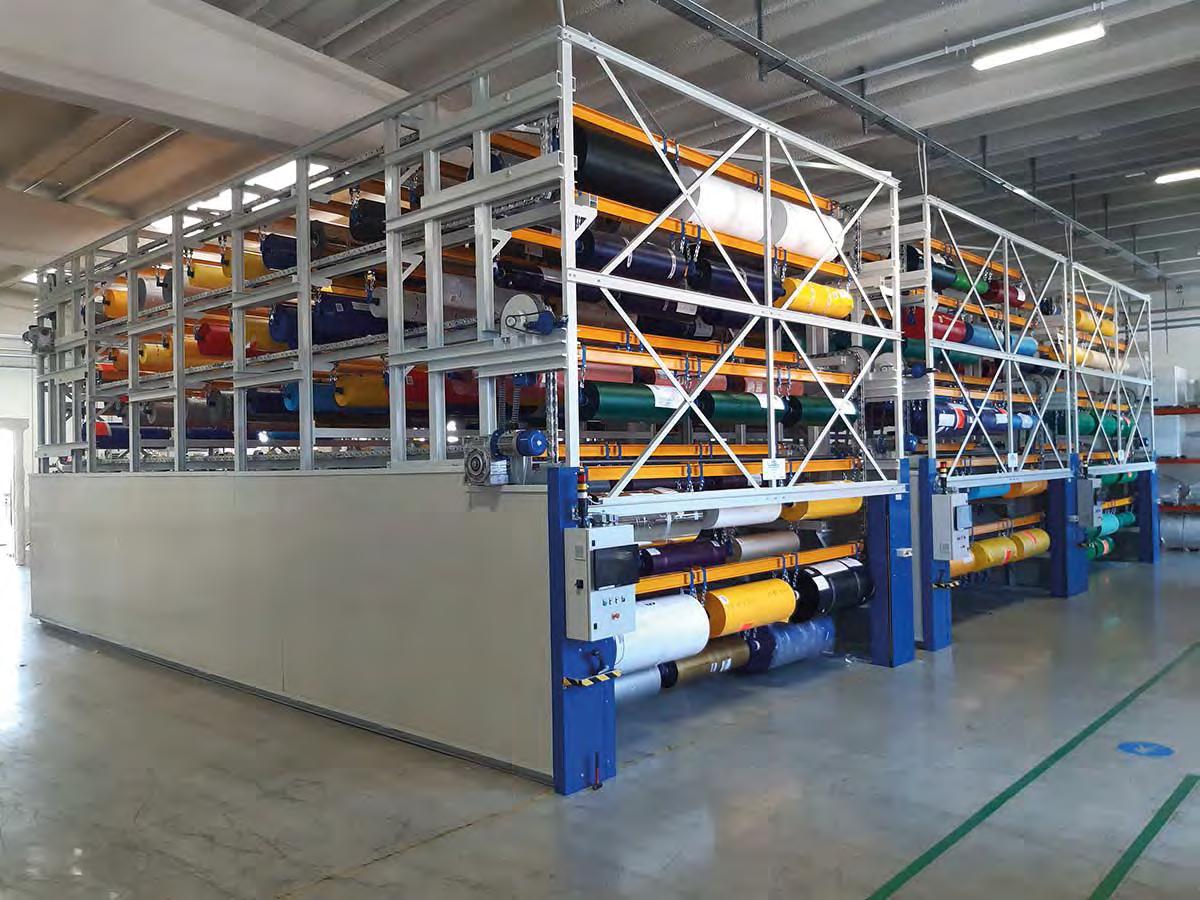
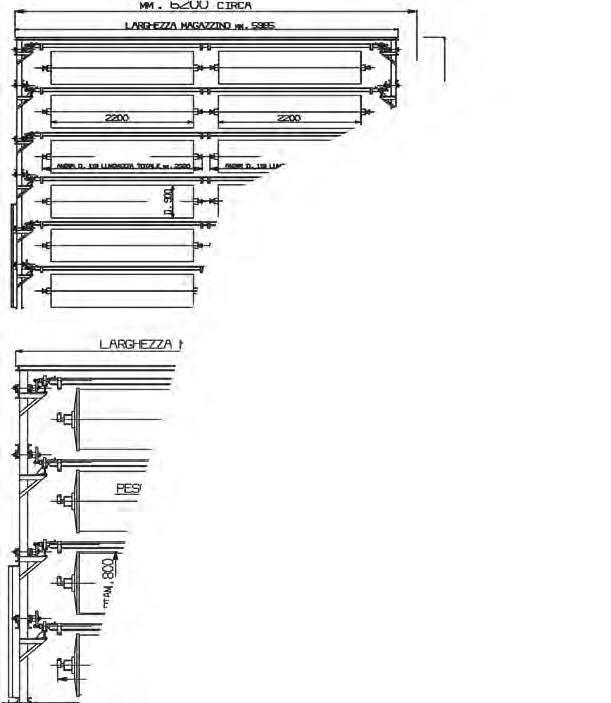
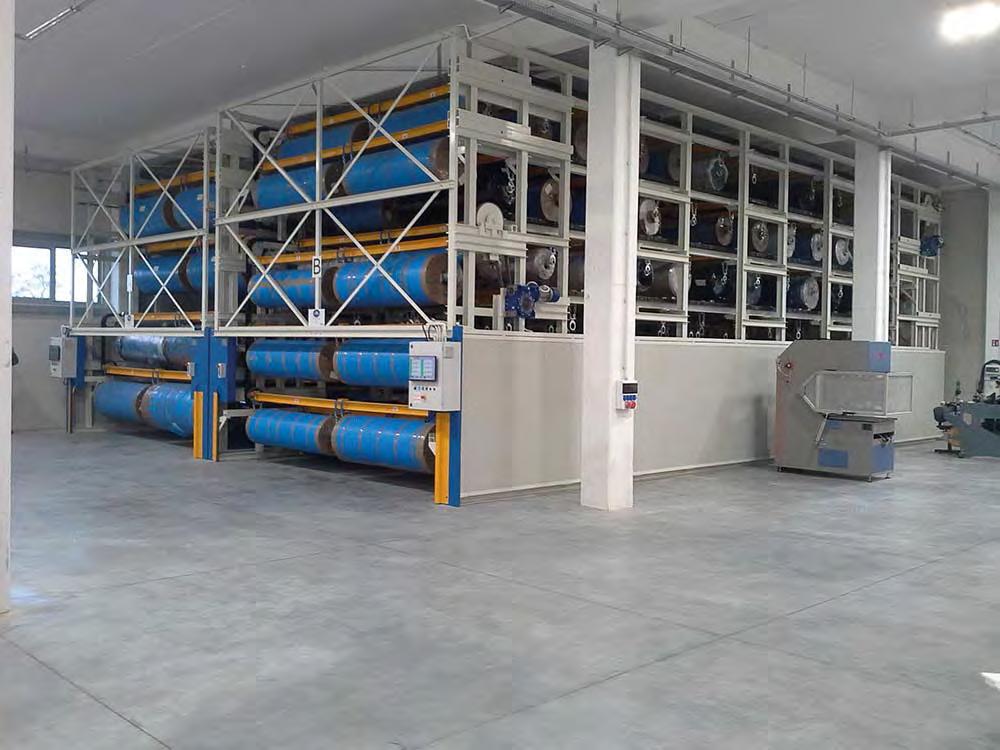
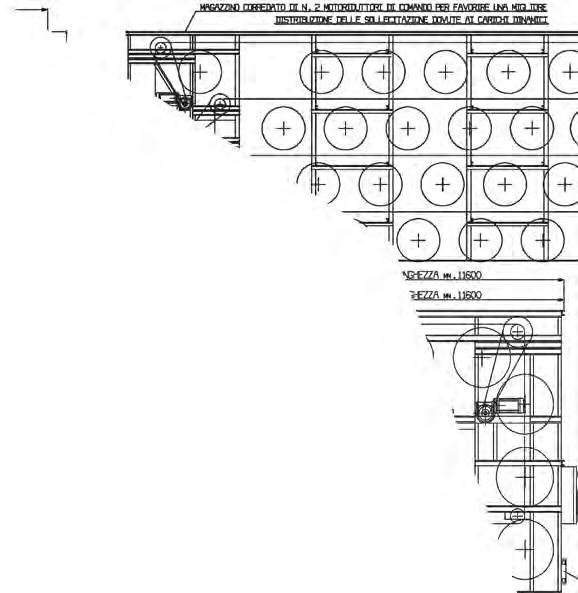


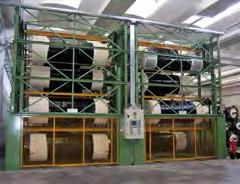
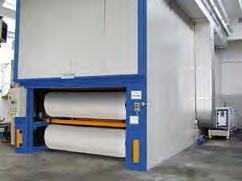

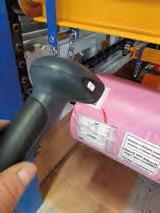








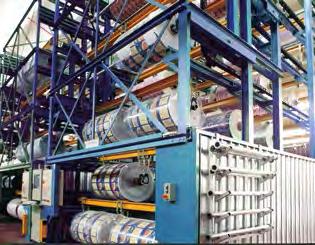
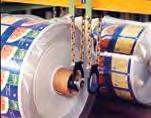

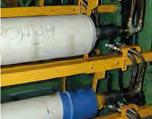


QUESTI SONO I PUNTI DI FORZA SU CUI SI FONDA DIAVEN, FIORE ALL’OCCHIELLO IN ITALIA NEL SETTORE DELLA GRAFICA E PRESTAMPA FLESSOGRAFICA PER IL PACKAGING. DIAVEN È UN ESEMPIO A LIVELLO NAZIONALE PER I CONTINUI INVESTIMENTI IN TECNOLOGIA E FORMAZIONE. NEL DNA DELL’AZIENDA C’È LA VOLONTÀ DI ESSERE IL PARTNER GIUSTO PER LE AZIENDE LEADER, ACCETTANDO OGNI SFIDA E GARANTENDO L’ASSISTENZA GIUSTA IN TUTTE LE FASI DI REALIZZAZIONE DEL SERVIZIO
Diaven è un’azienda grafica situata nella provincia di Treviso, operante nel settore del packaging e specializzata nella prestampa per la flessografia, in particolare nella produzione di cliché e maniche incise. L’azienda offre inoltre, sempre per il settore packaging, un servizio di progettazione imballi e la produzione di fustelle piane e rotative per il converting del cartone. Le origini di Diaven stanno nel nome: “DIA” deriva dalle ultime tre lettere di Lombardia, “VEN” dalle prime tre di Veneto. Sono queste, infatti, le due regioni italiane dove nel 1980 è iniziata la storia dell’azienda. Ma il successo di Diaven non si è fermato al nord-est d’Italia: ha conquistato in poco tempo tutta la Penisola, facendosi conoscere anche all’estero. I punti di forza citati in precedenza di cui abbiamo scritto hanno permesso a Diaven di darsi degli obiettivi e di mantenere un business in costante sviluppo. Anche nel 2021 Diaven ha deciso di continuare a investire. Un investimento calcolato, rivolto all’ottimizzazione dei flussi di produzione puntando sull’ingegneria di conduzione, con uno sguardo rivolto anche all’ambiente e al benessere, alla formazione e alla sicurezza del personale. Gli effetti non si sono fatti attendere: nell’ultimo triennio, l’investimento del 30% del fatturato in tecnologia e automazione 4.0 ha portato a un incremento della capacità produttiva del 50% e un miglioramento significativo del welfare aziendale.

L’Innovazione è l’elemento fondamentale per un’azienda leader nelle soluzioni di stampa, grafica e prestampa flessografica per il packaging. Puntando a sistemi di qualità sempre migliore, Diaven ha aumentato il suo bacino di clienti, aggiungendo al suo portfolio aziende importanti e rispondendo ai bisogni di print-buyer e stampatori.
L’esperienza e l’approccio del personale nei riguardi della strumentazione e delle metodologie produttive utilizzate permettono di accelerare il processo di automazione.
Il valore aggiunto dell’azienda, infatti, è l’artigianalità: “il sapere fare” che si serve delle più moderne tecnologie per realizzare prodotti di qualità e di alta personalizzazione.
L’azienda conta su una solida struttura di produzione caratterizzata dalle ultime tecnologie del settore. Ne sono un esempio la linea automatizzata Evo 5 Vianord, il Crystal Led di Esko, il plotter da taglio Kongsberg e tanti altri impianti volti a offrire la massima varietà di soluzioni e che hanno migliorato l’efficienza della produzione.
Il risultato è la Perfect Print HD Solution, la suite che conta sulle tecnologie innovative di produzione di cliché, mette in catalogo le diverse tecnologie di produzione e retini di alta qualità.
Dietro il successo di un’azienda operante in un settore in continua evoluzione, c’è un’organizzazione strutturata per


aree che lavorano in simbiosi tra loro, riuscendo così a gestire e fidelizzare la propria clientela, rispettando tempi e consegne.
In Diaven la prima area è quella commerciale.
La figura di riferimento qui non è solo un venditore, ma un tecnico specializzato in grado di consigliare al meglio un cliente, proponendo una soluzione e un servizio e tenendo conto delle specifiche richieste. Grazie alla potenzialità dell’azienda, Diaven è in grado di offrire un ampio assortimento di servizi: oltre ai cliché è possibile ottenere la manica incisa nelle diverse tipologie di costruzione e nei diversi formati e materiali fotopolimerici ed elastomerici. Proseguendo nella filiera, la seconda area è quella rivolta al customer care. Investendo in ricerca e sviluppo, l’azienda garantisce la migliore assistenza possibile ai suoi clienti, dalla fase di progettazione, fino alla realizzazione del prodotto finale.

Un altro ramo essenziale dell’organizzazione è quello del controllo prestampa. Con il servizio Safe Graphic Check i tecnici Diaven verificano che i prerequisiti di base siano validi per garantire una stampa di qualità.

L’attenzione rivolta al cliente durante l’intero processo produttivo è finalizzata alla sua piena soddisfazione, eliminando tutte le possibili problematiche legate alla gestione dell’ordine. Dalla corretta ricezione dei file e delle informazioni che verranno trasferiti poi al reparto produttivo, fino al controllo colore sulla grafica, l’obiettivo è quello di realizzare un impianto stampa dalle ottime perfomance in produzione e che ottenga una resa di stampa che valorizzi l’idea del cliente.
Questa particolare attenzione alla qualità è molto apprezzata dai clienti, soprattutto perché i tecnici Diaven prendono in esame tutti gli aspetti di prestazione legati alla lastra e alle caratteristiche di avviamento alla stampa. Inoltre, la fase di controllo prevede l’utilizzo di una serie di software per le varie operazioni di ottimizzazione (step and repeat, trapping, re-porposing, device link,...) dalla ricezione del file fino alla messa in produzione. Una volta che la prestampa grafica è stata industrializzata e ha superato tutti i controlli, entra in gioco il reparto produzione. Anche qui Diaven ha investito nell’automazione, puntando in particolare sui software per la prestampa
in production capacity of 50% and a significant improvement in corporate welfare.
responding to the needs of print buyers and printers.
PARTNER FOR THE COMPANIES THAT MATTER, ACCEPTING EVERY CHALLENGE AND ENSURING THE RIGHT ASSISTANCE IN ALL STAGES OF SERVICE IMPLEMENTATION.
The origins of Diaven lie in the name: “DIA” derives from the last three letters of Lombardy, “VEN” from the first three of Veneto. These are, in fact, the two Italian regions where the company’s history began in 1980. But Diaven’s success did not stop in the north-east of Italy: the company quickly conquered the whole peninsula, making himself known abroad as well.
The strengths we quoted before have
allowed Diaven to set goals and keep a business in continuous development. Also in 2021 Diaven has decided to continue investing. A calculated investment, aimed at optimizing production flows by focusing on management engineering, with an eye also to the environment and well-being, training and staff safety. The results didn’t take long coming: in the last three years, the investment of 30% of turnover in technology and automation 4.0 has led to an increase
THE WATCHWORD IS INNOVATION Innovation is the key element for a leading company in flexographic printing, graphics and prepress solutions for packaging. Aiming at ever better-quality systems, Diaven has increased its customer base, adding important companies to its portfolio and
The experience and approach of the staff towards tools and production methods used allow to accelerate the automation process. The added value of the company, in fact, is the craftsmanship: “know-how” which uses the most modern technologies to create quality and highly customized products.

THESE ARE THE STRENGTHS ON WHICH IS FOUNDED DIAVEN, FLAGSHIP IN ITALY IN THE FIELD OF GRAPHICS AND FLEXOGRAPHIC PREPRESS FOR PACKAGING. DIAVEN IS A NATIONAL EXAMPLE FOR CONTINUOUS INVESTMENTS IN TECHNOLOGY AND TRAINING. IN THE DNA OF THE COMPANY THERE IS THE WILL TO BE THE RIGHT


come il Device Manager, la Flexo Perfection.
Queste soluzioni permettono di ottimizzare la messa in produzione delle lastre rendendo meno necessario l’utilizzo di risorsa umana per operazioni di contorno, lasciando così all’operatore il tempo di dedicarsi alla cura dei dettagli qualitativi.
Si parla di parametri gestiti a gestionale che combinati in maniera ottimale e automatizzata consentono
di rispettare i tempi di consegna, ottimizzare l’impiego delle macchine, ridurre l’uso di materia prima: in questa maniera Diaven riesce a non sprecare materiale e riduce il rischio di errori umani, assicurando una costanza qualitativa ottimale. Dietro ogni lavorazione, si nasconde il work-flow digitale e soprattutto la cultura di stampa del professionista che riesce a trovare la soluzione giusta per qualsiasi cliente, anche quello più esigente.
Diaven da oltre 40 anni continua a investire tempo e risorse nello sviluppo di soluzioni innovative, sostenibili e personalizzate. Ascolto, comprensione e professionalità permettono all’azienda di realizzare prodotti di alta qualità e di essere un punto di riferimento per i loro clienti.
The company counts on a solid production structure characterized by the latest technologies in the sector.
Examples are the Vianord Evo 5 automated line, Esko’s Crystal Led, Kongsberg cutting plotter and many other systems to offer the maximum variety of solutions which have improved production efficiency.


The result is the Perfect Print HD Solution, the suite that relies on innovative cliché production technologies, providing various production technologies and high-quality screens.
Behind the success of a company operating in a constantly evolving sector, there is an organization structured by areas that work in symbiosis with each other, to create customers loyalty, respecting deadlines and deliveries.
In Diaven the first area is the commercial one. The reference figure here is not just a salesman, but a specialized technician
able to advise in the best way a customer, proposing a solution and a service and taking into account the specific requests. Thanks to the company’s potential, Diaven is able to offer a wide range of services: in addition to clichés, it is possible to obtain engraved sleeves in different types of construction and in different formats and photopolymer and elastomeric materials.
Continuing along the supply chain, the second area is the one aimed at customer care. By investing in research and development, the company guarantees the best possible assistance to its customers, from the design phase to the creation of the final product.
Another essential branch of the organization is prepress control. With the Safe Graphic Check service, Diaven technicians verify that the basic prerequisites are valid to guarantee quality printing. The attention paid to the customer throughout the entire production process is aimed at their full satisfaction, eliminating all possible problems related to order management. From the
correct reception of the files and information that will then be transferred to the production department, up to the color control on the graphics, the goal is to create a cliché with excellent performance in production and that obtains a print rendering that enhances the idea of the customer. This particular attention to quality is highly appreciated by customers, especially since Diaven technicians take into consideration all the performance aspects related to plate and printing start-up characteristics. In addition, the control phase involves the use of a series of software for the various optimization operations (step and repeat, trapping, reporposing, device link) from file reception to production.
Once the graphic prepress has been industrialized and has passed all the checks, the production department comes into play. Here too Diaven has invested in automation, focusing in particular on prepress software such as the Device Manager, Flexo Perfection. These solutions make it possible to optimize the production of the


plates, making the use of human resources less necessary for other operations, thus leaving the operator time to devote himself to qualitative details. We are talking about management parameters that, combined in an optimal and automated way, make it possible to respect delivery times, optimize the use of machines, reduce the use of raw materials: in this way Diaven manages not to waste material and reduces the risk of human errors, ensuring optimal qualitative consistency. Behind every process is hidden the digital work-flow and above all the printing culture of the professional operator, who can find the right solution for every customer, even the most demanding.
For over 40 years, Diaven has continued to invest time and resources in the development of innovative, sustainable and customized solutions. Listening, understanding and professionalism allow the company to create high quality products and be a point of reference for their customers.
Il partner che si prende cura del processo di taglio dalla bobina madre al prodotto tagliato, pallettizzato pronto per la spedizione e non solo...
Interconnessione con sistema gestionale aziendale e dispositivi portatili
Preparazione macchina automatica in base a commessa
Ciclo di carico, posizionamento mandrini, cambio, chiusura e scarico bobine finite senza alcun intervento dell’operatore
Linea automatica di etichettatura, confezionamento e posizionamento su pallet

Impianto completamente elettrico “oil-less”
In linea con il concetto di “Industry 4.0” la nuova taglierina a doppia torretta BMATIC 4.0 non solo rende automatizzato l’intero processo di taglio ma è in grado di colloquiare con il sistema gestionale aziendale monitorando in tempo reale l’intera commessa, dall’accettazione della bobina da tagliare, al pallet completamente imballato in asettico. L’elevata automazione e la flessibilità dell’impianto garantiscono così allo stesso tempo efficienza, produttività, pulizia e controllo del processo.
Sage s.r.l. - Via Cesariano, 27 - 21056, Induno Olona, (VA) - Italy - Tel. +39 0332 201069 - Fax. +39 0332 212506 info@sageslitters.com - www.sageslitters.com
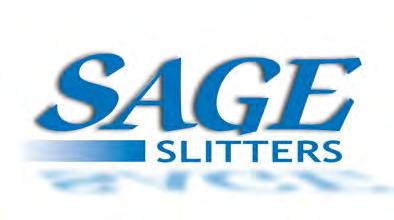
INSIEME AI SUOI PARTNER, A K 2022 BOBST HA PRESENTATO ONEBARRIER PRIMECYCLE, UNA FAMIGLIA DI SOLUZIONI SENZA EVOH E SENZA TOP COAT, IN PE AD ALTA BARRIERA, IDEALE ALTERNATIVA AI MATERIALI IN POLIESTERE METALLIZZATI E ONEBARRIER FIBRECYCLE, SOLUZIONE INTERAMENTE IN CARTA, MONOMATERIALE E PRONTA PER ESSERE RICICLATA. I CAMPIONI ESPOSTI IN FIERA SONO L’EVOLUZIONE DELLE VERSIONI ESPOSTE A K 2019, ORA SONO DISPONIBILI PER I TRASFORMATORI E POSSONO ESSERE STAMPATI E LAVORATI IN SCALA DI PRODUZIONE, GARANTENDO QUALITÀ E PRESTAZIONI BARRIERA IN OGNI FASE SUCCESSIVA DEL PROCESSO DI TRASFORMAZIONE

Se solo qualche anno fa i clienti cercavano macchine e attrezzature, oggi non è più così, oggi i clienti comprano soluzioni ed è proprio su soluzioni concrete che Bobst ha puntato in occasione di K 2022. Per la progettazione dei nuovi materiali Bobst si è basata sui tre pilastri per la creazione di imballaggi flessibili sostenibili: l’impiego di poliolefine monomateriale e di carta, compatibili entrambi nel flusso normale di riciclo meccanico rispettivamente della plastica e della carta; il terzo pilastro auspica l’impiego di soluzioni che sono compostabili, biodegradabili e/o a base bio. “Del resto sono gli stessi clienti che ce lo richiedono e grazie alle nostre competenze nella metallizzazione a vuoto, nella spalmatura e accoppiamento, nella stampa rotocalco e flexo e grazie a un’intensa collaborazione con molti partner (Dow, Mi-
chelman, Sun Chemical, Zermatt, UPM e molti altri) in linea con il nostro obiettivo di dare risposte sostenibili concrete, siamo riusciti ad offrire imballaggi sostenibili, pronti al riciclo e con ottime proprietà barriera” afferma Giorgio Caprioglio, Technology Sales Director Coating at BOBST.
PrimeCycle PE sono strutture monomateriale, senza EVOH, senza top-coat, un’alternativa perfetta ai film in poliestere metallizzati. Sono composte da uno strato in MDOPE, un primer, uno dei due tipi di metallizzazione (AIOx trasparente o AluBond opaco) che danno prestazioni barriera leggermente diverse (la metallizzazione AluBond ha un livello barriera più elevato) e infine un sigillante PE. oneBARRIER PrimeCycle PE AIOx a barriera elevata ha un livello di riciclabilità del 98%, attestato da Cyclos, ente tedesco per la classificazione, la valutazione e la certificazione di questo aspetto degli imballaggi.
In questo caso la base è la carta Solide Lucent di UPM, una carta kraft speciale con una superficie molto liscia e ad elevata densità, anche in questo caso viene applicato un primer, poi il trattamento AIOx o AluBond, e infine viene steso un top-coat. Anche questo prodotto è stato creato in collaborazione con Michelman, che ha fornito primer e top-coat, per rispondere alla crescente domanda nel settore per imballaggi in carta. Insieme all’azienda di trasformazione con sede


in Finlandia Huhtamaki, BOBST ha presentato in fiera i primi campioni di imballaggi trasformati usando la soluzione FibreCycle. Ma non solo, a questo prodotto è stata dedicata un’open house presso Bobst Manchester, cui hanno partecipato circa 100 persone, confermando l’estremo interesse degli operatori per queste soluzioni.
La sostenibilità non era l’unico tema chiave per BOBST a K 2022. L’azienda ha infatti anche annunciato il lancio di One complete solution, un’offerta di soluzioni integrate end-to-end che consentono ai trasformatori di avere un flusso di lavoro perfetto per la produzione di imballaggi flessibili in base alle loro specifiche esigenze di produzione. One complete solution è un portafoglio di flussi di lavo-

ro end-to-end che connette tutte le fasi produttive, dal file di produzione e prestampa alle bobine dei materiali stampati o accoppiati oppure di film o carta funzionali a elevato effetto barriera.

In concomitanza con K 2022, BOBST ha organizzato un’open house nello stabilimento di Bielefeld, dove i visitatori hanno visto in azione un esempio di una soluzione completa. Il flusso di lavoro presentato includeva l’impostazione completa della prestampa con smartGPS, il montaggio dei cliché con il partner AV Flexologic, con stampa sulla macchina flexo VISION CI, il controllo qualità con il tavolo di ispezione digitale BOBST, l’accoppiamento senza solvente con la NOVA SX 550 LAMINATOR, oltre a tutti i dati essenziali e i servizi digitali con BOBST Connect.
Elemento integrante di One complete solution, anch’esso presentato a K 2022, è BOBST Connect, piattaforma digitale che pone al centro l’utilizzatore e che collega le diverse fasi del processo di produzione in un flusso di lavoro digitalizzato e automatizzato. Potenzia l’efficienza, il controllo e la conoscenza dei dati, migliorando qualità e produttività nella catena del valore. BOBST ha inoltre annunciato che da luglio 2022, BOBST Connect Essential, primo piano di abbonamento di questo potentissimo strumento, è disponibile di serie su tutte le macchine. Questa è un’offerta unica nel settore.
TOGETHER WITH ITS PARTNERS, AT K 2022 BOBST PRESENTED ONEBARRIER PRIMECYCLE, A FAMILY OF SOLUTIONS WITHOUT EVOH AND WITHOUT TOPCOAT, IN HIGH BARRIER PE, WHICH ARE IDEAL ALTERNATIVES TO METALLIZED POLYESTER MATERIALS, AND ONEBARRIER FIBRECYCLE, A SOLUTION ENTIRELY IN PAPER, MONO-MATERIAL AND READY TO BE RECYCLED. THE SAMPLES EXHIBITED AT THE FAIR, WHICH ARE THE EVOLUTION OF THE VERSIONS EXHIBITED AT K 2019, ARE NOW AVAILABLE FOR CONVERTERS TO PRINT AND CONVERT ON PRODUCTION SCALE, GUARANTEEING QUALITY AND BARRIER PERFORMANCE IN EACH SUBSEQUENT PHASE OF THE TRANSFORMATION PROCESS
If only a few years ago converters were looking for machines and equipment, today this is no longer the case, today they buy solutions, and it is precisely on concrete solutions that Bobst has focused on the occasion of K 2022. For the design of the new materials, BOBST based itself on three pillars for the creation of sustainable flexible packaging: the use of mono-material polyole-
fins and paper, both compatible in the normal flow of mechanical recycling of plastic and paper respectively; the third pillar calls for the use of solutions that are compostable, biodegradable and/or bio-based. “After all, it is the customers themselves who request it from us and thanks to our skills in vacuum metallizing, coating, lamination, gravure and flexo printing and thanks to an intense collaboration with
dedicated ecosystems of partners, including Dow, Michelman, Sun Chemical, Zermatt, and UPM in line with our goal of giving concrete sustainable answers, we have managed to offer sustainable packaging, ready for recycling and with excellent barrier properties” says Giovanni Caprioglio, Technology Sales Director Coating at BOBST. PrimeCycle full PE monomaterial structu-
res are EVOH and top-coat-free and make perfect alternatives to metallized polyester films. They are composed of an MDOPE layer, a primer coating, one of two types of metallization (transparent AIOx or opaque AluBond) which give slightly different barrier performances (the AluBond metallization has a higher barrier level) and finally a PE sealant. oneBARRIER PrimeCycle AlOx
Barrier effect for sustainable paper and film products: together we can
high barrier PE structure has a level of recyclability of 98%, certified by German-based Institute cyclos-HTP that specializes in the classification, evaluation, and certification of this aspect of packaging.


In this case the basis is UPM’s Solide Lucent paper, a special kraft paper with a very smooth and high-density surface, again a primer is applied, then the AIOx or AluBond deposition, and finally a topcoat. Also created in collaboration with Michelman, who supplied primers and topcoats, to respond to the growing demand in the paper packaging sector. Together with Finland-based converter Huhtamaki, BOBST presented at K the first samples of packaging processed using the FibreCycle solution. But not only that, an open house at Bobst Manchester was dedicated to this product, which was attended by about 100 people, confirming the extreme interest of the operators in these solutions.
Sustainability was not the only hot topic for BOBST at K 2022. BOBST also announced the launch of One complete solution – a new tailored package of end-to-end solutions to create a perfect flexible packaging workflow for converters, based on their production needs.
One complete solution is a portfolio of end-to-end workflows that connect all steps, from production file and pre-press through to the reels of printed or laminated substrates, or of high barrier functional films or paper.

Coinciding with K 2022, BOBST held an open house at Bobst Bielefeld plant, where visitors saw an example of One complete solution in action. Workflow featured included full prepress setup with smartGPS, flexo plate mounting with its partner AV Flexologic, printing on a VISION CI flexo press, quality control with BOBST Digital Inspection Table, solventless laminating with NOVA SX 550 LAMINATOR, plus all essential data and digital services with BOBST Connect.
An integral element of One complete solution, and also on show at K 2022, is BOBST Connect. BOBST Connect is a user-centric digital platform that links different steps of the production process through a digitalized and automated workflow. It improves efficiency, control, and data knowledge, driving quality and productivity across the value chain. BOBST has announced that as of 1 July 2022, BOBST Connect Essential, the first subscription plan of this very powerful tool, has been made available on all BOBST machines as a standard supply. This is a unique offer within the industry.
ANDREA VERGNANO TITOLARE DI DIGITAL FLEX, ATTRAVERSO L’ANALISI DELL’ATTUALE SITUAZIONE DI MERCATO, CON I COSTI DI PRODUZIONE ALLE STELLE E LA MANCANZA DI OPERATORI QUALIFICATI CHE INDUCE LE AZIENDE A SOTTRARSI MANODOPERA L’UN L’ALTRA A COSTI ALTRETTANTO ELEVATI E SPESSO FUORI MERCATO, LANCIA DEGLI SPUNTI DI RIFLESSIONE AL SETTORE PER SALVAGUARDARE IL FUTURO DELLE IMPRESE DI PRESTAMPA FLEXO
Con quasi 60 anni di attività alle spalle, Digital Flex – Nuova Roveco Group, è una delle realtà storiche nella produzione di cliché per la stampa flessografica, da sempre all’avanguardia per quanto riguarda tecnologie e processi di produzione innovativi, l’azienda fondata da Renato Vergnano insieme ad altri soci oggi non più in azienda, è da qualche tempo sotto il pieno controllo del figlio Andrea, che ha vissuto tutta la fase dagli anni 2000 a oggi, vivendo in prima persona l’ingresso della tecnologia di incisione digitale che ha aperto alla flexo, anno dopo anno, il mercato dell’alta qualità.

Il mercato è cresciuto, le professionalità hanno acquisito sempre più know-how, e i costanti e continui investimenti in tecnologia, non ultimo quello che ha visto Digital Flex inserire all’inizio dell’anno una seconda linea di incisione digitale per le maniche, hanno permesso alla fotolito brianzola di essere considerata un punto di
riferimento per aziende di stampa, converter e brand owner. La qualità è un percorso, esattamente come la sostenibilità, che richiede da parte delle aziende notevoli sforzi ma che come tali vanno poi riconosciuti dal mercato. Tutto ha un prezzo, sotto il quale non è possibile accettare compromessi. Pubblichiamo la riflessione che Andrea Vergnano ci ha inviato, insieme a una breve intervista.
PREZZO - di Andrea Vergnano “Clienti, servizio, qualità, innovazione, tecnologie, rispondenza ai temi ESG (Environmental, Social, Governance). Il mercato, in ogni settore, chiede tutto questo e molto altro e le aziende sono chiamate a organizzarsi e fornire risposte adeguate. Tutto giusto, perché non si tratta solo di teoria del “saper fare buona impresa”, quanto piuttosto di linee guida utili per disegnare lo sviluppo a lungo termine di un’azienda. Osservando, tuttavia, le dinamiche che stanno animando il settore da ormai diversi mesi a questa parte, sento la necessità di riflettere su alcune contraddizioni che si fanno sempre più stridenti.
Ogni voce di costo è in aumento: riferendomi solo a quelle più impattanti, delle materie prime già sappiamo e discutiamo da tempo, ma a questo dobbiamo aggiungere che l’incremento registrato del prezzo dell’energia come conseguenza della guerra in Ucraina è semplicemente folle, tanto da minacciare la chiusura di impianti produttivi in diversi settori. A ciò si somma un altro aspetto da tenere in forte considerazione, meno dibattuto ma che si sta facendo invece sempre più diffuso: vale a dire la crescente difficoltà di individuare professionalità valide e disponibili, che, dunque, proprio in quanto tali, stanno chiedendo – e spesso ottenendo


– retribuzioni più consistenti, a volte fuori scala. Tutto aumenta, dunque… ma i prezzi ai clienti? Niente da registrare. Vero? Sì. Osservo infatti che, a fronte di una situazione economica tanto complessa e articolata, i clienti stanno ancora ricevendo offerte in decremento da una buona parte dei fornitori di pre-stampa flessografica. Come è possibile? Come assorbire variazioni di tale portata e non provare a farsele riconoscere dal mercato?
Mi interrogo da tempo sulla strategia di questi operatori, miei competitor, e la risposta che mi do è una sola: non c’è una strategia. O meglio, l’unica strategia possibile è quella di acquisire più volumi possibile, con l’obiettivo
da una parte di prendere tempo e dall’altra di provare a “entrare” su qualche nuovo cliente con la leva del prezzo.
Credo si tratti di un atteggiamento che non può che determinare una vera e propria tendenza al ribasso, innanzitutto della qualità, dei processi di realizzazione, ma anche delle professionalità che vengono messe in campo. È il settore, tutto, nel suo complesso, che alla lunga risentirà in maniera negativa di questo atteggiamento, che non aiuta a instaurare una relazione di dialogo con i clienti, ma semplicemente di subordinazione. Una relazione seria e proficua si costruisce, del resto, insieme e per questo rivendico anche la responsabilità dei clienti a indagare, approfondire e capire il perché di atteggiamenti e proposte tanto differenti da un fornitore all’altro. Selezionare e scegliere con chi lavorare sulla base anche di questi parametri significa garantire la rispondenza ai principi ESG. Occorre dunque compiere scelte consapevoli, orientate a una sostenibilità –economica, ambientale e sociale – di lungo periodo, in luogo di risparmi dal corto respiro. Clienti, servizio, qualità, innovazione, tecnologie – dicevo. Aggiungerei: valori. In questa situazione complessa siamo tutti chiamati a fare un salto culturale e questo passa anche da investimenti che devono essere riconosciuti”.
of the year, have allowed this prepress service located in Brianza to be considered a point of reference for printing companies, converters and brand owners. Quality is a path, just like sustainability, which requires considerable efforts by companies but these must then be recognized by the market. Everything has a price, under which no
compromises can be accepted. We publish the reflection that Andrea Vergnano sent us, together with a short interview.
“Customers, service, quality, innovation, technologies, compliance with ESG (Envi-
With almost 60 years of activity behind it, Digital Flex - Nuova Roveco Group, is one of the historical realities in the production of clichés for flexographic printing, always at the forefront as regards innovative technologies and production processes, the company founded by Renato Vergnano together with other partners who are no longer in the company, is for some time under the full control of his son Andrea, who
has lived through the whole phase from the 2000s to today, experiencing firsthand the entry of digital engraving technology that has open to flexo, year after year, the high quality market.

The market has grown, the professionals have acquired more and more know-how, and the constant and continuous investments in technology, not last the decision by Digital Flex to insert a second digital engraving line for sleeves at the beginning
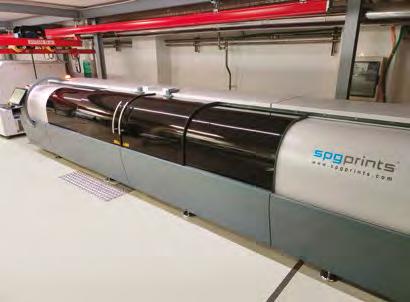
ANDREA VERGNANO OWNER OF DIGITAL FLEX, THROUGH THE ANALYSIS OF THE CURRENT MARKET SITUATION, WITH SKYROCKETING PRODUCTION COSTS AND THE LACK OF QUALIFIED OPERATORS THAT LEADS COMPANIES TO TAKE AWAY MANPOWER FROM EACH OTHER AT EQUALLY HIGH AND OFTEN COSTS OUT OF THE MARKET, LAUNCHES REFLECTION HINTS TO THE SECTOR TO SAFEGUARD THE FUTURE OF FLEXO PREPRESS COMPANIES
Digital Flex: the value, beyond the price
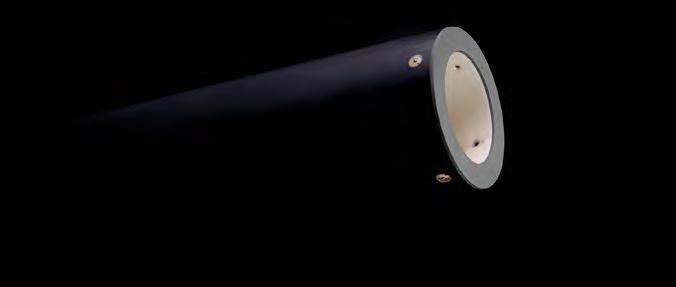
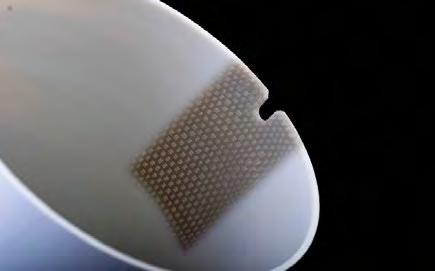

Grazie Andrea per aver voluto aprire un dibattito dalle pagine di Converter. Che reazioni ti aspetti dal mercato e dai competitor?
“Spesso mi chiedo quale sia la strategia dei miei competitor nell’affrontare queste situazioni di mercato e l’unica risposta che riesco a darmi è che sembra quasi che non ne abbiano una! Assistiamo ogni giorno ad aumenti di prezzo in tutto ciò che ci circonda, mentre i competitor vanno al ribasso (o qualcosa di simile): è chiaro che qualcosa non torna”.
All’interno delle associazioni di cui fate parte, non pensi sia arrivato il momento di discutere anche di questi problemi o di proporre gruppi di lavoro e focus per analizzare insieme la situazione?
“Certo, bisognerebbe parlarne. ATIF, l’associazione di cui facciamo parte, ha più un taglio tecnico e si oc-
cupa meno di questi aspetti. Bisognerebbe forse fare riferimento alle associazioni di categoria, anche se non credo che tutti la pensino in questo modo, visto come si stanno muovendo sul mercato”.
A seguito dell’incremento dei prezzi delle materie prime, ci sono delle difficoltà che state riscontrando nel vostro settore? Se sì, quali e come le state affrontando?
“Fortunatamente non per ciò che riguarda l’approvvigionamento. Il vero problema è l’incremento del prezzo delle materie prime, non solo di quelle che acquistiamo, lavoriamo e poi rivendiamo. L’aumento è generalizzato: contratti di assistenza e software, i trasporti,
ronmental, Social, Governance) issues. The market, in every sector, asks for all this and much more and companies are called to organize themselves and provide adequate answers. All right, because it is not just the theory of “knowing how to manage a good business”, but rather useful guidelines for designing the long-term development of a company. Observing, however, the dynamics that have been animating the sector for several months now, I feel the need to reflect on some contradictions that are becoming more and more strident. Each cost item is increasing: referring only to the most impacting ones, we have already discussed about raw materials for some time, but to this we must add that the recorded increase in the price of energy as a result of the war in Ukraine is simply insane, so much so as to threaten the closure of production plants in various sectors. To this is added another aspect to be taken into strong consideration, less debated but which is becoming more and more widespread: namely the growing difficulty
of identifying valid and available professionals, who therefore, precisely because they are rare, are asking - and often gettinghigher wages, sometimes off the charts. Everything increases, then ... but the prices to customers? Nothing to record. True? Yes.
In fact, I observe that, in the face of such a complex and articulated economic situation, customers are still receiving decreasing offers from a large number of flexographic pre-press suppliers. How is it possible? How to absorb variations of this magnitude and not try to be recognized by the market?
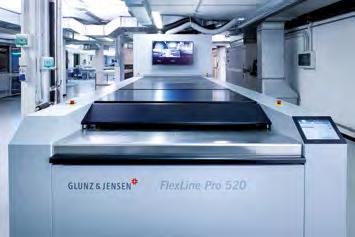
I have been wondering for some time about the strategy of these operators, my competitors, and the answer I give myself is only one: there is no strategy. Or rather, the only possible strategy is to acquire as many volumes as possible, with the aim on the one hand of taking time and on the other of trying to acquire some new customer with the price lever.
I believe this is an attitude that can only determine a real downward trend, first of all in the quality, in the production proces-
ses, but also in the professionalism that is put into place. It is the sector, as a whole, which in the long run will be negatively affected by this attitude, which does not help to establish a relationship of dialogue with customers, but simply of subordination. After all, a serious and profitable relationship is built together and for this reason I also claim the responsibility of customers to investigate and understand the reasons for such different attitudes and proposals from one supplier to another. Selecting and choosing who to work with on the basis of these parameters also means ensuring compliance with ESG principles. It is therefore necessary to make conscious choices, oriented towards long-term sustainability - economic, environmental and social - instead of short-term savings. Customers, service, quality, innovation, technologies - I was saying. I would add: values. In this complex situation we are all called to make a cultural leap and this also involves investments that must be recognized”.
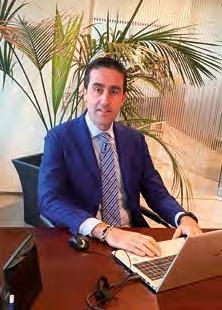
Thanks Andrea for wanting to open a debate from the pages of Converter. What reactions do you expect from the market and from competitors?
“I often wonder what my competitors’ strategy is in dealing with these market situations and the only answer I can give myself is that it almost seems we don’t have one! We see price increases every day in everything that surrounds us, while competitors go down (or something similar): it is clear that something is not right”.
Within the associations you belong to, don’t you think the time has come to discuss these problems as well or to propose work and focus groups to analyze the situation together?
“Sure, we should talk about it. ATIF,






gli imballi, qualsiasi tipo di fornitore come il fabbro e l’elettricista, per non parlare del gas e dell’elettricità. Si tratta di una situazione che stiamo subendo senza poter fare molto a breve termine per contrastarla. Ci concentriamo maggiormente su un’analisi della situazione aziendale per capire come intervenire nei prossimi anni per migliorare l’efficienza complessiva. Ad esempio, stiamo pensando ad azioni che possano riguardare interventi di riqualificazione sia interni che esterni dell’azienda con lo scopo di migliorare l’efficientamento energetico. Si tratta, in ogni caso, di azioni di lungo termine”.
Oggi, i clienti cosa cercano e cosa si aspettano da un fornitore di pre-stampa flessografica? Ci sono delle peculiarità del vostro lavoro che fate difficoltà a trasmettergli?
“Sicuramente il mercato che stiamo vivendo in questi anni, unito alla situazione di quest’ultimo periodo, ha fatto sì che il servizio e la qualità che dovrebbero essere alla base di un buon rapporto di partnership tra cliente e fornitore, vengano un po’ meno poiché si danno per scontati. Al contrario di alcuni clienti che riconoscono nel partner presenza, puntualità e sicurezza come elemento di differenziazione, altri pensano che tutti i fornitori siano simili e ciò li induce a rivolgersi semplicemente a chi ha il prezzo migliore sul mercato, mentre il prodotto non è assolutamente lo stesso. Consiglio spesso ai miei clienti di compiere degli audit presso i vari fornitori per capire come sono strutturate le aziende, quali macchine utilizzano, qual è il gruppo di lavoro, l’organizzazione, la sicurezza sull’archiviazione dei file e tanto altro per rendersi conto delle differenze che ci sono tra un’azienda e un’altra. Noi, ad esempio, abbiamo il backup di tutti i macchinari e addirittura la terza linea su alcuni per offrire una sicurezza massima al cliente”.
the price of raw materials, not just those we buy, process and then resell. The increase is widespread: assistance and software contracts, transport, packaging, any type of supplier such as the locksmith and electrician, not to mention gas and electricity. This is a situation that we are experiencing without being able to do much in the short term to counter it. We focus more on an analysis of the company situation to understand how to intervene in the coming years to improve overall efficiency. For example, we are thinking of actions that may concern both internal and external redevelopment of the company with the aim of improving energy efficiency. In any case, these are long-term actions”.
tion of this last period, has meant that the service and quality that should be the basis of a good partnership relationship between customer and supplier, are valued less because they take themselves for granted. Unlike some customers who recognize in the partner presence, punctuality and safety as an element of differentiation, others think that all suppliers are similar and this leads them to simply turn to those who have the best price on the market, while the product is absolutely not the same.
the association to which we belong, is characterized more by a technical slant and is less concerned with these aspects. Perhaps we should refer to trade associations, even if I don’t think everyone thinks this way, if we consider how they are moving on the market”.
Following the increase in the prices of raw materials, are there any difficulties you are experiencing in your sector? If so, which ones and how are you dealing with them?
“Fortunately not for what concerns the supply. The real problem is the increase in
Today, what are customers looking for and what do they expect from a flexo prepress supplier? Are there any peculiarities of your work that you find it difficult to convey to him? “Surely the market we are experiencing in recent years, combined with the situa -

I often advise my customers to carry out audits at the various suppliers to understand how companies are structured, which machines they use, how is structured the work group and the organization, the security on file storage and much more to understand the differences between one company and another. For example, we have the backup of all the machines and even the third line on some equipments to offer maximum safety to the customer”.




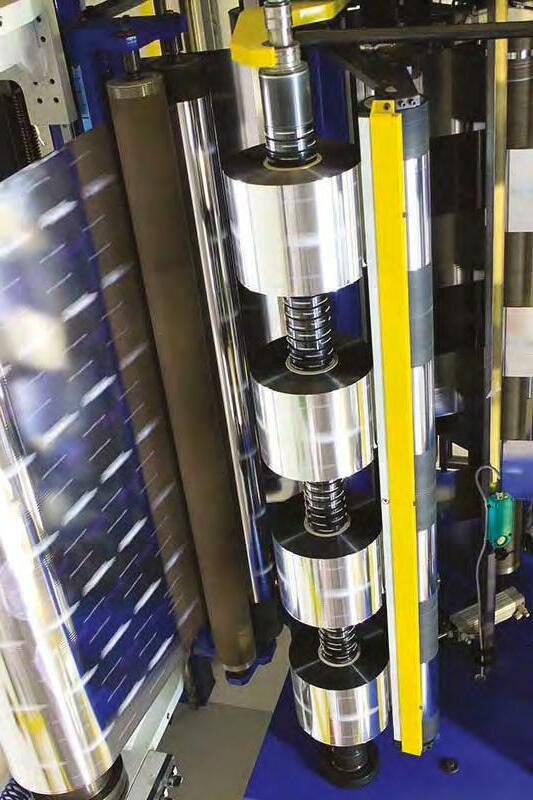

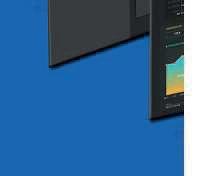
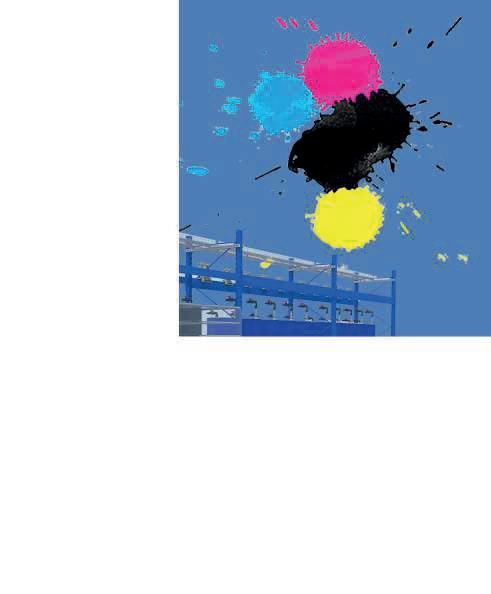



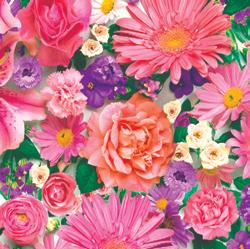

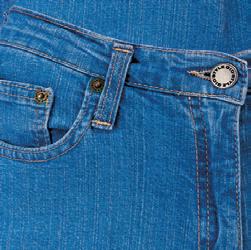


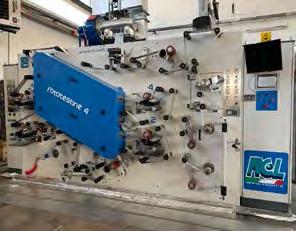
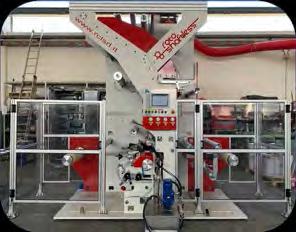
DuPont™ Cyrel® Solutions e Inglese Srl: nuovo accordo commerciale Dopo una attenta e approfondita analisi del mercato, Inglese srl, esperto fornitore nel settore narrow-web – etichette, è lieta di ufficializzare la nascita della importante partnership con DuPont, prestigiosa azienda precursore e leader per tecnologia e soluzioni innovative dedicate al mercato della flessografia. Marcello Morara, Direttore commerciale di Inglese srl, è convinto che questa collaborazione sia vincente: “I sistemi e le lastre che DuPont offre risultano imbattibili, in termini di velocità, qualità e sostenibilità nel processo di realizzazione delle lastre flessografiche. Tanto più in momenti di difficoltà come quelli che stiamo vivendo, sono tutti aspetti di primaria attenzione e il processo termico DuPont™ Cyrel® FAST proposto da DuPont consente di produrre le lastre in modo più veloce, sostenibile, affidabile e con una stabilità di processo senza eguali e una qualità di riproduzione eccezionale”.
Per qualsiasi informazione potete consultare il sito: www.inglesesrl.com
Dr. Schenk – L’esperto dell’ispezione – a K 2022: soluzioni dedicate all’ispezione e al monitoraggio della produzione degli imballaggi flessibili
A K 2022 Dr. Schenk ha presentato soluzioni di misura e ispezione ottica per i settori dell’estrusione, della verniciatura, della laminazione e della trasformazione. L’azienda offre soluzioni per l’industria della plastica ma anche altri mercati come alluminio, carta, tessuti non tessuti, tessuti, pelle sintetica, vetro, batterie e molti altri ancora. Incontriamo Luca Daverio allo stand dell’azienda in fiera. Da poco più di un anno Luca è
il responsabile commerciale dell’azienda per il mercato italiano, e la sua grande esperienza è preziosa. “Il know-how di Dr. Schenk ci permette di rilevare qualsiasi tipo di difetto con soluzioni dedicate. Possiamo farlo perché abbiamo accumulato decenni di esperienza grazie alla ricerca e sviluppo interna presso l’ufficio di Monaco nel sud della Germania. La maggior parte delle circa 350 persone in sede lavora nella ricerca e sviluppo. Un reparto è dedicato all’assistenza, qui 30 persone supportano direttamente i clienti, compreso il mercato italiano. Possono intervenire molto rapidamente se necessario data la loro vicinanza all’Italia. Dr. Schenk era sta-
to precedentemente presente in Italia tramite un agente, che lavorava principalmente con il canale OEM. Con il mio ingresso in azienda abbiamo ampliato l’attuale mercato degli utenti finali, e abbiamo già avuto dei risultati importanti, anche grazie alle soluzioni tecnologiche all’avanguardia che offriamo in questo mercato. Più complessa è la rilevazione dei difetti, maggiore è la nostra determinazione per proporre al cliente la soluzione che desidera”. L’obiettivo di Dr. Schenk è quello di trovare tutti i tipi di difetti su qualsiasi tipo di materiale con telecamere, illuminazione
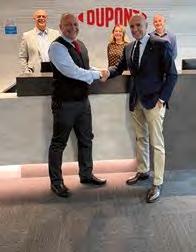
e soluzioni software dedicate che caratterizzano la tecnologia dello specialista tedesco. “Oltre a ispezionare i materiali, monitoriamo anche le proprietà del
Dr. Schenk – The Inspection Expert – at K 2022: solutions
At K 2022 Dr. Schenk showcased optical inspection and measurement solutions for the extrusion, coating, laminating and converting industries. The company offers solutions for the plastic industry alongside other markets such as aluminum, paper, nonwovens, textiles, synthetic leather, glass, batteries, and many more. We meet Luca Daverio at the company stand at K. For just over a year Luca has been the company’s sales manager for the Italian market, bringing great experience to the sector. “Dr. Schenk’s know-how allows us to detect any type of defect with dedicated solutions. We can do this because we have gathered decades of experience with in-house research & development at the Munich office in the South of Germany. The majority of the about 350 people on site work in R&D. A 30 people strong service department supports customers directly, including the Italian market. They can intervene very quickly if necessary given their proximity to Italy. Dr. Schenk had previously been present in Italy through an agent, who worked mostly with the OEM channel. With my joining the company we enlarged the existing end user market with quick results, owing also to the cutting-edge technological solutions we offer in this the market. The more complex the discovery of the defect, the greater our determination to arrive at the solution the customer wants”.

The focus of Dr. Schenk is to find all kinds of defects on any type of material with dedicated camera, illumination and software solutions that are characteristic of the German specialist’s technology. “In addition to inspecting the materials, we also monitor the large area properties of the material itself, identifying any variation in e.g. homogeneity of coating, opacity, breathability, hazing, roughness, density, and so on. We can extrapolate the results using our cameras, which are then used by the operator to better qualify their product”, adds Daverio, expressing his satisfaction with participating at this year’s K show.
Asahi Kasei Hosts Unique VIP Event in Tokyo: AWPTM-DAYS in Japan Focused on Advances in Flexography as well as Highlighting Japanese Culture
Asahi Kasei, parent company of Asahi Photoproducts conducted a successful VIP event in Tokyo attended by AWP customers from 12 different countries, including Italy. The event was designed as a combination of education and entertainment to express the company’s deep appreciation of the partnerships these attendees participate in. Attendees included flexo printers/converters, suppliers of hardware and software to the industry, and repro houses. Another goal of the event was to strengthen the relationships among the various partners who attended, with the ultimate goal of a stronger, more sustainable flexographic industry. The event was held from 7 to 11 October.
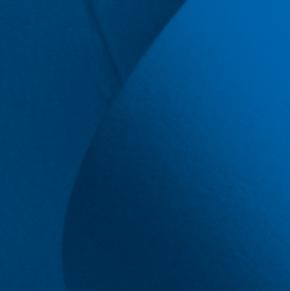

Automation doubles, the price is unchanged: 2 PC on board.


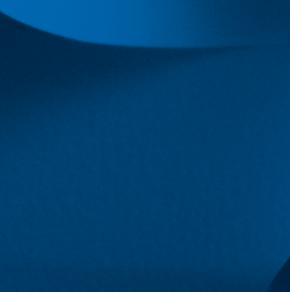
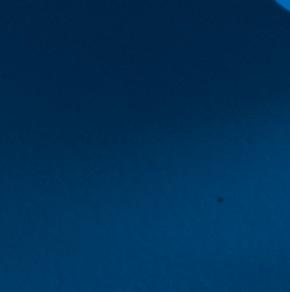


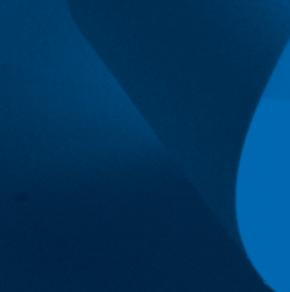




materiale stesso, identificando qualsiasi variazione, ad esempio, di omogeneità della verniciatura, opacità, traspirabilità, velatura, rugosità, densità e così via. Possiamo estrapolare i risultati utilizzando le nostre videocamere, che vengono poi utilizzate dall’operatore per qualificare meglio il proprio prodotto”, aggiunge Daverio, esprimendo la sua soddisfazione per la partecipazione alla fiera K di quest’anno.
Asahi Kasei ospita un evento VIP unico a Tokyo: AWP-Days in Giappone incentrati sui progressi della flessografia e sulla cultura giapponese

Asahi Kasei, casa madre di Asahi Photoproducts, ha condotto un evento molto partecipato a Tokyo a cui hanno preso parte clienti AWP provenienti da 12 paesi diversi, tra cui l’Italia. L’evento è stato concepito come una combinazione di formazione e intrattenimento per esprimere il profondo apprezzamento dell’azienda per le partnership. Tra i partecipanti c’erano stampanti/trasformatori
flessografici, fornitori di hardware e software per l’industria e service di prestampa.
Un altro obiettivo dell’evento è stato quello di rafforzare le relazioni tra i vari partner che hanno partecipato, con l’obiettivo finale di creare un’industria flessografica più forte e sostenibile. L’evento si è svolto dal 7 all’11 ottobre. “Questo è stato il nostro primo tentativo di organizzare un evento così complesso”, ha affermato Miho Ohigashi del dipartimento di marketing globale di Asahi Photoproducts.
“Ovviamente, volevamo informare tutti sugli ultimi sviluppi delle AWP, incluso il raggiungimento della Carbon Neutrality in collaborazione con il Carbon Trust per le nostre lastre lavabili con acqua CleanPrint AWP™-DEW, e condividere con loro come stiamo lavorando sul nostro Piano di gestione delle emissioni fossili per renderli ancora più sostenibili in futuro. Abbiamo anche ritenuto importante una visita allo stabilimento, in modo che potessero vedere di persona l’implementazione della nostra tecnologia nella produzione quotidiana. Ma volevamo anche
“This was our first attempt at organizing such a complex event”, said Miho Ohigashi of the Photoproducts Global Marketing Department. “Of course, we wanted to educate everyone on the latest AWP developments, including the achievement of Carbon Neutrality in partnership with the Carbon Trust for our AWP™-DEW CleanPrint water-washable plates, and share with them how we are working on our Carbon Management plan to make them even more sustainable in the future. We also felt that a tour of the plant was important, so they could see for themselves the implementation of our technology in daily production. But we also wanted to introduce some socialising to the event and give our visitors an opportunity to experience first-hand important aspects of Japanese history and culture. The feedback we received was overwhelming, and as a result we plan to hold a similar event every year to broaden the understanding of the value of our sustainability efforts as they relate to the flexographic industry”.
Asahi Kasai and its subsidiary, Asahi Photoproducts, have spent many years working toward a more sustainable flexographic industry and have set for the entire company the important goal to be Carbon Neutral by 2050. Achievement of carbon neutrality for the AWP™-DEW CleanPrint water-wash flexo plates was a major achievement toward that goal. “Sharing the story of our sustainability journey, including the demonstration of our new AWP™ water recycling system, was also an important element to this event”, Miho
far socializzare i nostri visitatori che hanno avuto l’opportunità di sperimentare in prima persona aspetti importanti della storia e della cultura giapponese. Il feedback che abbiamo ricevuto è stato positivo e, di conseguenza, prevediamo di organizzare un evento simile ogni anno per ampliare la comprensione del valore del nostro impegno per la sostenibilità dell’industria flessografica”. Asahi Kasai e la sua controllata, Asahi Photoproducts, hanno trascorso molti anni lavorando per un’industria flessografica più sostenibile e hanno fissato per l’intera azienda l’importante obiettivo di non produrre più emissioni fossili entro il 2050. Il raggiungimento della neutralità fossile per le lastre AWP™-DEW
C lavabili ad acqua è stato un risultato importante verso questo obiettivo. “Anche condividere la storia del nostro viaggio verso la sostenibilità, inclusa la dimostrazione del nostro nuovo sistema di riciclo dell’acqua per il lavaggio delle AWP™, è stato un elemento importante per questo evento”, ha aggiunto Miho Ohigashi. “Ci auguriamo che condividere la nostra storia incoraggi il nostro settore a ridurre significativamente la propria impronta di carbonio”.
L’evento ha previsto anche una tavola rotonda con la partecipazione di tutti sui temi della sostenibilità, del rapporto reciprocamente vantaggioso tra stampa flessografica e digitale e l’importanza dell’automazione.
Ohigashi added. “We hope that sharing our story will encourage our industry to significantly reduce its carbon footprint”.
The event also included a panel discussion with full participation of all attendees on the topics of sustainability, the mutually beneficial relationship between flexo and digital printing, and the importance of automation.

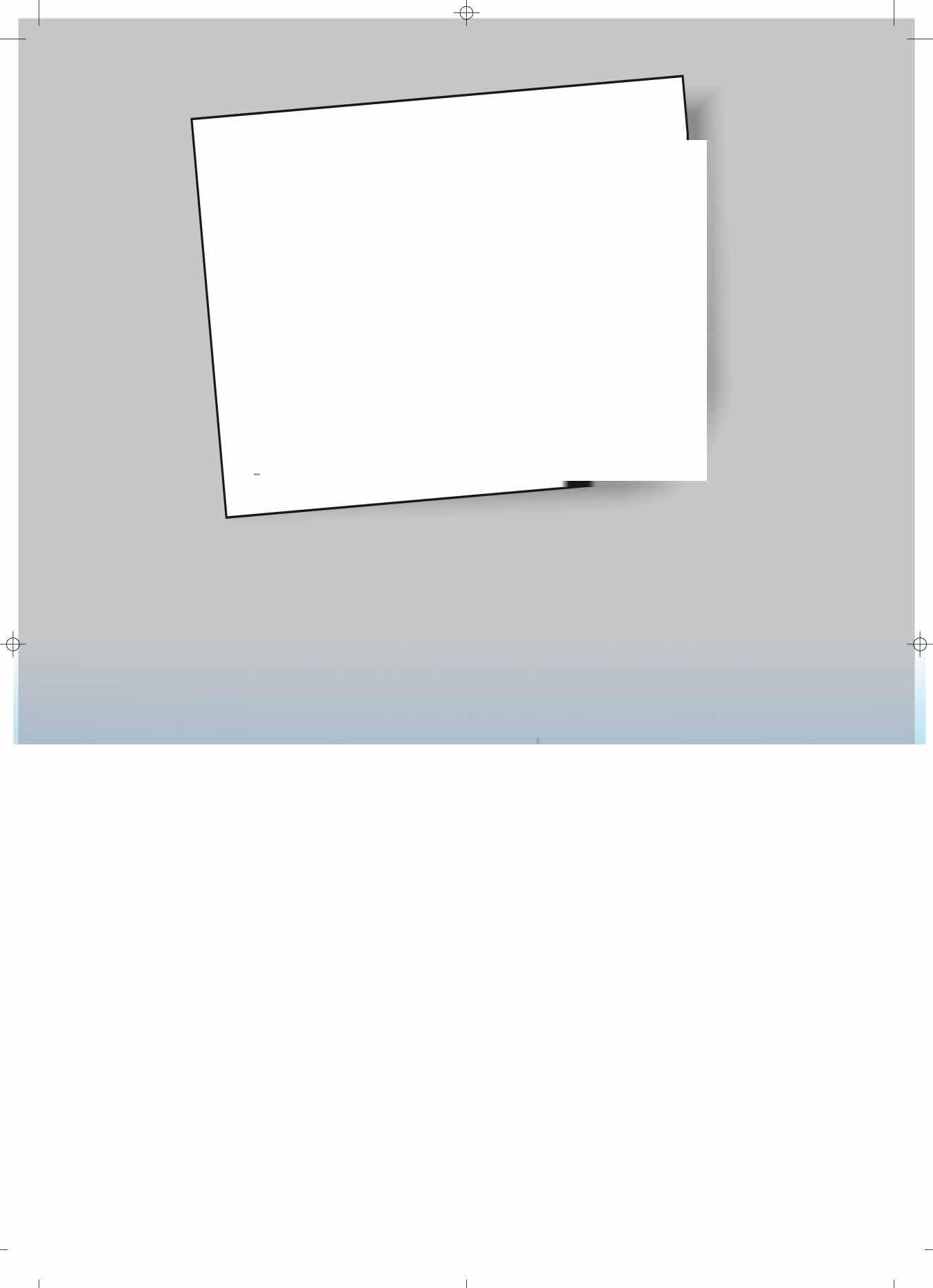
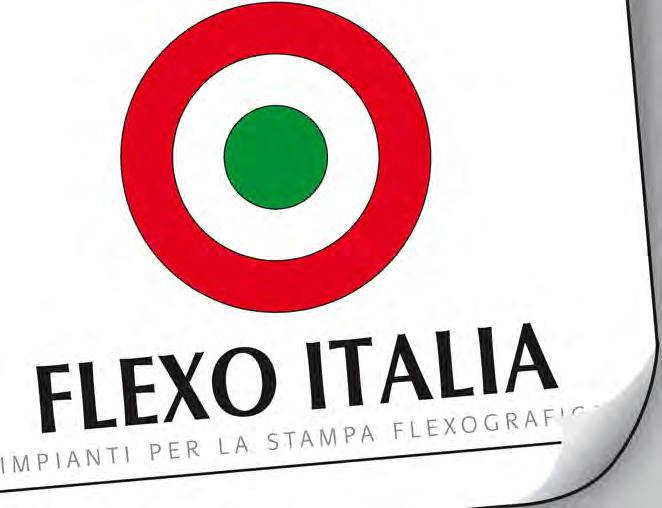

Se oggi Giflex si presenta come un’associazione attiva, dinamica, unita, coi comitati tecnici che discutono e giocano in prima linea la partita, anche a livello internazionale, il merito è anche di chi, nel 1985 anno di fondazione dell’associazione, pensando al futuro, aveva colto in anticipo con visione e lungimiranza, che al di là dei singoli e ovviamente fondamentali interessi aziendali, fosse altrettanto determinante aprirsi alla collaborazione. Stiamo parlando dell’Ing. Luigi Goglio, ricordato in particolare dal figlio Ambrogio che ha letto un messaggio a nome della famiglia e dell’azienda Goglio, una realtà attiva da 170 anni, che oggi è operativa in 8 Paesi nel mondo per un fatturato globale di oltre 400 milioni di €.
LO SCORSO 19 OTTOBRE
BOLOGNA, GIFLEX HA PRESENTATO

RISULTATI DELLA RICERCA SULL’IMBALLAGGIO FLESSIBILE ANNUNCIATA AL CONVEGNO PRIMAVERILE DI ROMA. UN’OCCASIONE PER FARE IL PUNTO DELLA SITUAZIONE DI UN SETTORE ESTREMAMENTE DINAMICO E ATTIVO SU PIÙ FRONTI, CHE PERÒ NON POTEVA CHE ESSERE APERTO DAL RICORDO DELL’ING. LUIGI GOGLIO, RECENTEMENTE SCOMPARSO, CHE FONDÒ L’ASSOCIAZIONE NEL 1985 E A CUI TUTTA L’INDUSTRIA DEL PACKAGING HA RESO IL DOVEROSO OMAGGIO
Secondo l’analisi di Prometeia sui bilanci del flessibile, nel 2021 il settore torna a crescere, +10.5%, con un fatturato che raggiunge i 3.383 milioni di euro. Rispetto ai dati pre-Covid tutte le classi dimensionali, dalle piccole alle grandi imprese, risultano dinamiche, confermando altresì una produttività superiore a quella dei competitor tedeschi e una forza lavoro che, nell’anno preso in esame, supera i 10 mila addetti (+2%). Va tuttavia sottolineato che tale crescita, pur mostrandosi superiore alla media del manifatturiero, appare comunque modesta considerata l’incidenza degli alti costi delle materie prime,
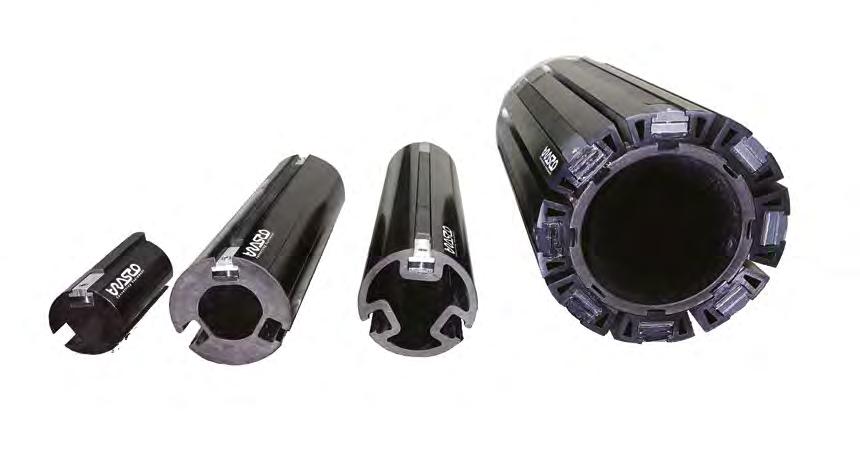
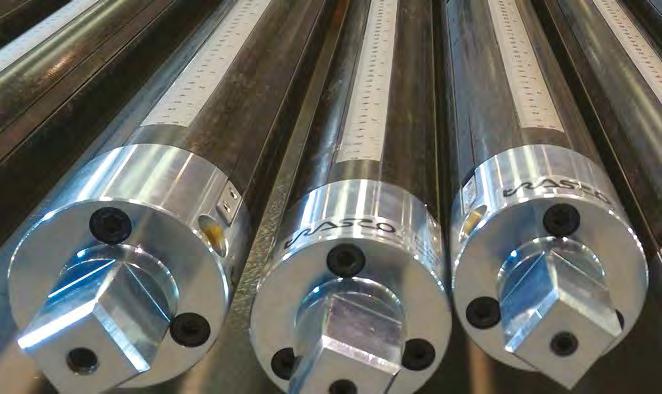
praticamente raddoppiati, e dei forti aumenti dei prezzi delle commodity, che stanno mettendo a dura prova la tenuta dell’industria; mai in passato all’interno di Giflex si era arrivati a parlare del costo energetico come uno dei principali problemi da affrontare. E proprio durante l’ultimo Convegno, oltre agli scenari futuri nel mercato energetico che non fanno intravvedere nulla di buono per il prossimo biennio, a patto di interventi delle autorità governative, il tema è stato al centro di una tavola rotonda dei Gruppi di Assografici (Giflex, Gipea, Gifco e Gifasp) perché affrontare insieme tematiche come queste è senz’altro un primo passo per aiutare le aziende a ragionare in un’ottica di sistema, condividendo proble-
mi, esperienze e soluzioni.
“In Giflex siamo convinti che l’attuale complessità del mercato vada gestita con la fiducia che, in primis, si fonda su una chiara percezione del proprio valore. E la percezione del proprio valore corrisponde al riconoscersi nella propria identità e nel contributo che, come settore, vogliamo e possiamo portare alla filiera. E in un processo di trasparenza nei confronti della filiera e soprattutto dei clienti finali, dovremo imparare a essere più trasparenti, riversando sul mercato sia gli aumenti dei costi ma anche eventuali diminuzioni”, aggiunge Palaveri.
Uno dei temi caldi, che vede impegnata Giflex e tutte le aziende associate, è quello di dimostrare quanto gli imballaggi flessibili siano effettivamente sostenibili, guidando i processi di eco-progettazione, partendo dai dati oggettivi di una buona e corretta analisi LCA, un tema attorno al quale l’associazione ha deciso di creare un nuovo gruppo interdisciplinare. L’obiettivo è dare supporto alle aziende associate impegnate nei progetti di sostenibilità mettendo a disposizione l’analisi di mo-
A HEALTHY AND GROWING SECTOR, DESPITE THE UNCERTAINTIES
ON 19 OCTOBER IN BOLOGNA, GIFLEX PRESENTED THE RESULTS OF THE RESEARCH ON FLEXIBLE PACKAGING ANNOUNCED AT SPRING CONFERENCE IN ROME. AN OPPORTUNITY TO TAKE STOCK OF THE SITUATION OF AN EXTREMELY DYNAMIC AND ACTIVE SECTOR ON SEVERAL FRONTS, WHICH, HOWEVER, COULD ONLY BE OPENED WITH THE MEMORY OF ENG. LUIGI GOGLIO, RECENTLY DECEASED, WHO FOUNDED THE ASSOCIATION IN 1985 AND TO WHOM THE ENTIRE PACKAGING INDUSTRY HAS PAID DUE HOMAGE

If today Giflex presents itself as an active, dynamic, united association, with the technical committees that discuss and play the game at the forefront, even at an international level, the merit is also of those who, in 1985, when the association was founded, thinking to the future, had grasped in advance with vision and far-sightedness, that beyond the individual and obviously fundamental
corporate interests, it was equally crucial to open up to collaboration. We are talking about Eng. Luigi Goglio, remembered in particular by his son Ambrogio who read a message on behalf of Goglio family and company, a reality that has been active for 170 years, which is now operational in 8 countries around the world for a global turnover of over € 400 million.
According to Prometeia’s analysis of flexible economic situation, in 2021 the sector returned to growth, + 10.5%, with a turnover that reaches 3,383 million euros. Compared to pre-Covid data, all size classes, from small to large companies,
are dynamic, also confirming a productivity higher than that of German competitors and a workforce that, in the year under review, exceeds 10 thousand employees (+ 2%). However, it should be emphasized that this growth, while showing itself to be higher than the manufacturing average, nevertheless appears modest considering

Flexible packaging: a story of value that surrounds the future


delli di LCA esistenti fino all’elaborazione di protocolli di valutazione che siano riconosciuti a livello internazionale. Attraverso indicatori specifici sarà inoltre possibile “misurare” la circolarità dell’imballaggio flessibile nella complessità della sua filiera di fornitura, e soprattutto condividere questi risultati con le istituzioni, per creare metodi condivisi, evitando di cadere nel famigerato green-washing e fare ad esempio come la Danimarca, Paese nel quale per comunicare la sostenibilità è obbligatorio partire dallo studio LCA del prodotto.

Presentata al Convegno Giflex della scorsa primavera a Roma, la ricerca sulla “Value story dell’imballaggio
flessibile” condotta da Clara Giardina ed Erik Ciravegna, a cura dell’Osservatorio Innovazione Packaging di Advanced Design Unit – Dipartimento di Architettura dell’Università di Bologna che ha l’obiettivo di raccontare il packaging come fenomeno espressivo della complessità contemporanea e rilevare le tendenze in atto al fine di fornire alle aziende elementi utili al proprio processo innovativo.
La ricerca, commissionata da Giflex, ha presentato una fotografia sullo stato dell’arte del settore, rilevandone i principali trend per definirne il profilo identitario e valoriale da cui possa scaturire una storia da raccontare ai consumatori sui benefici del pack flessibile, con il quale abbiamo a che fare tutti i giorni e in diversi ambiti. 346 casi studio, 87 siti web specializzati, 145 letture di riferimento, partecipazione diretta degli associati Giflex per originali occasioni di progettazione partecipata, un sondaggio interattivo in tempo reale svolto proprio al convegno dell’associazione di Roma dello scorso maggio, una ricerca via web e un workshop on-line hanno fatto emergere elementi innovativi del packaging flessibile come la semplicità, leggerezza, trasparenza, praticità e l’essenzialità strutturale, indispensabile oggi per facilitare la riciclabilità degli imballaggi, e in linea con le caratteristiche dell’imballaggio flessibile del futuro, che sarà indiscutibilmente riciclabile, monomateriale
the incidence of the high costs of raw materials, which have practically doubled, and the sharp increases in commodity prices, which are putting a strain on the resilience of the industry; never in the past at Giflex we talked about the energy cost as one of the main problems to be faced. And precisely during the last conference, in addition to the future scenarios in the energy market that do not give a glimpse of anything good for the next two years, subject to interventions by the government authorities, the topic was at the center of a round table of Assografici Groups ( Giflex, Gipea, Gifco and Gifasp) because tackling issues like these together is undoubtedly a first step to help companies think following a system perspective, sharing problems, experiences and solutions.
“At Giflex we are convinced that the current complexity of the market must be managed with confidence that, first and foremost, is based on a clear perception of one’s value. And the perception of one’s value corresponds to recognizing oneself in
one’s own identity and in the contribution that, as a sector, we want and can bring to the supply chain. And in a process of transparency with the supply chain and above all end customers, we will have to learn to be more transparent, transferring both cost increases and any decreases to the market”, adds Palaveri.

One of the hot topics, which sees Giflex and all the associated companies engaged, is to demonstrate how much flexible packaging is actually sustainable, guiding the eco-design processes, starting from the objective data of a good and correct LCA analysis, a theme around which the association has decided to create a new interdisciplinary group. The goal is to support member companies engaged in sustainability projects by making available the analysis of existing LCA models up to
the development of evaluation protocols that are recognized internationally. Through specific indicators it will also be possible to “measure” the circularity of flexible packaging in the complexity of its supply chain, and above all share these results with the institutions, to create shared methods, avoiding falling into the infamous green-washing and doing, for example, how Denmark, a country in which to communicate sustainability it is mandatory to start from the LCA study of the product.
The research on the “Value story of flexible packaging” conducted by Clara Giardina and Erik Ciravegna, by the Packaging Innovation Observatory of the Advanced Design Unit - Department of Architecture of the University of Bologna, presented at Giflex Conference last spring in Rome aims to describe packaging as an expressive phenomenon of contemporary complexity and to detect current trends in order to provide





e sostenibile.
Sono emerse però anche una serie di qualità, meno evidenti, ma altrettanto fondamentali e capaci di rivelare tutta la complessità e l’intelligenza tecnologica di questo pack, che costituiscono il profilo identitario del flessibile e rappresentano il focus su cui costruire le storie di valore attraverso le quali raccontare in che modo l’imballaggio flessibile sia in grado di aiutare le persone a risolvere i problemi nella vita di tutti i giorni.
Fra i fattori emersi, che concorrono alla determinazione dei value drivers, troviamo la riduzione dell’impatto ambientale, il miglioramento delle prestazioni dei materiali, l’ottimizzazione dei processi di produzione e logistica, l’integrazione di soluzioni digitali avanzate che migliorino l’esperienza di utilizzo del consumatore, il potenziamento delle soluzioni user-centred per cui l’imballaggio si adatta sempre di più alle persone e la valorizzazione

degli aspetti comunicativi e di identità, indispensabili per consentire al consumatore di conoscere più informazioni, non solo sul prodotto che sta acquistando ma anche sul packaging.
Diverse le storie di valore che sono state create dal gruppo di lavoro promosso dagli organizzatori della Ricerca, che hanno prodotto dei racconti narrativi, ognuno caratterizzato da una soluzione di packaging grazie alla quale si è potuto risolvere un determinato problema. Il programma dei lavori ha previsto la creazione di nuove storie di valore entro la fine dell’anno, che andranno a implementare tutti gli strumenti utili a un “Flexible Packaging Storytelling” che resterà a disposizione di Giflex e delle aziende associate che potranno così attingere da questa biblioteca, ma potranno creare anche nuove storie, per poter migliorare la propria comunicazione verso il mercato.
companies with useful elements for their innovative process.
The research, commissioned by Giflex, presented a picture on the state of the art of the sector, highlighting the main trends to define the identity and value profile from which a story can arise to tell consumers about the benefits of the flexible pack, with which we have to do every day and in different areas. 346 case studies, 87 specialized websites, 145 reference readings, direct participation of Giflex associates for special participatory planning opportunities, a real-time interactive survey carried out at association’s convention in Rome last May, a web search and an on-line workshop brought out innovative elements of flexible packaging such as simplicity, lightness, transparency, practicality and structural essentiality, indispensable today to facilitate the recyclability of packaging, and in line with the characteristics of the flexible packaging of the future, that will unquestionably be recyclable, single-material and sustainable.
However, a series of less evident but equally fundamental qualities emerged, capable of revealing all the complexity and technological intelligence of this pack, which constitute the identity profile of the flexible pack and represent the focus on which to build valuable stories to tell how flexible packaging can help people solve problems in everyday life.
Among the factors that emerged, which contribute to the determination of value drivers, we find the reduction of the environmental impact, the improvement of the performance of materials, the optimization of production and logistics processes, the integration of advanced digital solutions that improve the use experience of consumer, the enhancement of user-centered solutions for which the packaging adapts more and more to people and the enhancement of the communication and identity aspects, essential to allow the consumer to know more information, not only on the product that is buying but also on packaging.
Several stories of value that were created
by the working group promoted by the organizers of the research, which produced narrative stories, each characterized by a packaging solution thanks to which it was possible to solve a specific problem. The work program envisaged the creation of new valuable stories by the end of the year,

which will implement all the tools useful for a “Flexible Packaging Storytelling” that will remain available to Giflex and associated companies, which will thus be able to draw from this library, but they will also be able to create new stories, in order to improve their communication towards the market.




C’è soddisfazione in Bimec per la partecipazione a K 2022: chiusi 3 importanti contratti!
La recente fiera K 2022 di Düsseldorf si è confermata come una delle manifestazioni più importanti nel settore delle materie plastiche a livello mondiale. Dopo tre anni di pausa dall’ultima edizione, Bimec srl ha partecipato a questo evento internazionale con grandi aspettative, esponendo presso il proprio stand uno dei suoi modelli top di gamma: la taglierina ribobinatrice a doppia torretta con cambio automatico TCA 64C+.
L’impianto ha ricevuto un grande apprezzamento dagli ospiti dello
stand, che ne hanno verificato le principali funzionalità e scoperto le sue innovazioni tecnologiche in termini di affidabilità, automatismi e alte performance.


Adatta per il taglio e la ribobinatura di film plastici, carta e accoppiati, la TCA 64C+ è equipaggiata con 3 motori asincroni c.a. e inverter digitali, dispone di carro di svolgimento semi-integrato, tavola di giuntura in svolgimento e facile accesso al gruppo di taglio.
Oltre a questo, conta diversi automatismi, tra cui il sistema di posizionamento automatico dei portacoltelli e dei controcoltelli multi taglio direttamente sincronizzato con lo spostamento automatico del proiettore laser per il posizionamento delle anime
e una stazione di scarico delle bobine che prevede l’apertura/ chiusura e la rotazione dei bracci in automatico.
Anche l’impianto esposto presso lo stand Sei Laser Spa, la taglierina ribobinatrice bialbero STB 550, ha riscosso molto interesse tra i visitatori, che hanno potuto vederla in azione come parte integrante di un sistema di perforazione laser Pack Master. Tutti gli impianti della gamma Bimec, infatti, grazie al loro design e la versatilità delle configurazioni in cui sono disponibili, consentono l’integrazione con altri sistemi di lavorazione come, ad esempio, la perforazione a caldo o a freddo, l’ispezione stampa, la marcatura errori e la movimentazione delle bobine.
Le aspettative di Bimec riguardo questa fiera sono state ampiamente superate: sono stati conclusi tre importanti contratti e avviate numerose nuove trattative commerciali.
La storica azienda milanese ha ascoltato le esigenze dei propri clienti e partner, consolidandone
i rapporti e raccogliendo nuovi spunti per fornire soluzioni sempre più all’avanguardia.
All’interno della gamma di prodotti e soluzioni presentate durante l’ultima fiera K, dove Simec ha registrato un notevo le interesse con le 4 postazioni previste nello stand praticamen te sempre occupate da clienti e prospect interessati ad appro fondire la gamma di soluzioni proposte dal costruttore vare sino, è stato inserito un nuovo brand: Caboll.


Great satisfactions for Bimec at K 2022: 3 important contracts signed!
The recent K 2022 trade fair in Düsseldorf has confirmed itself as one of the most important events in the plastics field worldwide. After a three-year break from the last edition, Bimec srl took part in this international event with great expectations, exhibiting one of its top-of-the-range models: the duplex turret slitter rewinder TCA 64C+. This machine was highly appreciated by the guests at the stand, who verified its main functions and discovered its technological innovations in terms of reliability, automatism, and high performance.
Suitable for the slitting and rewinding of plastic films, paper and laminates, the TCA 64C+ is equipped with 3 a.c. asynchronous motors and digital inverters, has a semi-integrated unwind stand, splicing table and easy access to the slitting unit.
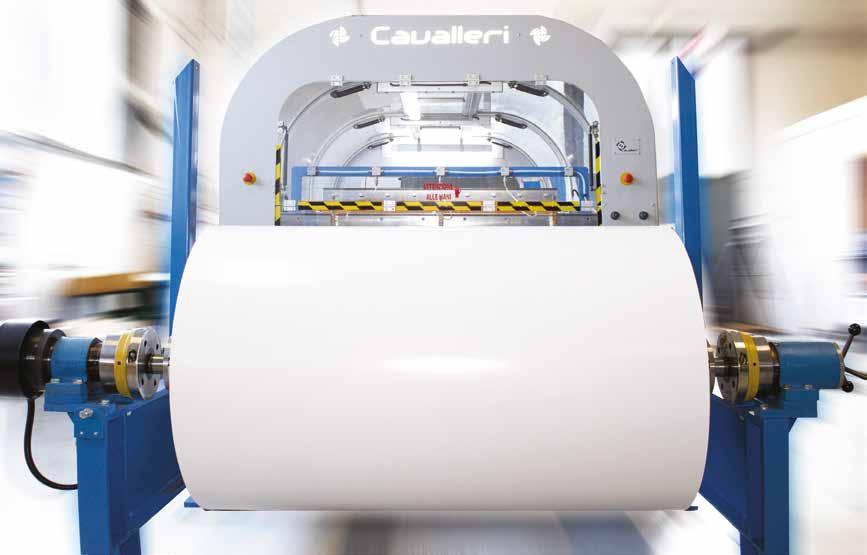
Furthermore, it counts several automatisms, including the automatic positioning system of the knife holders and multi-groove female knives, which are combined with the automatic single laser beam for core positioning and a reel unloading station, which allows the automatic opening/closing and rotation of the side stand arms.
The machine exhibited at the Sei Laser Spa booth, the STB 550 duplex slitter rewinder, also aroused a lot of interest among visitors, who were able to see it in action as an integral part of a Pack Master laser perforation system.

All the slitter rewinders in Bimec range, thanks to their design and the versatility of the configurations available, allow the integration with other processing systems such as, for example, perforators, rolls handling, embossing and inspection systems.
Bimec’s expectations regarding this exhibition have been greatly exceeded: three important orders have been concluded and several new sales negotiations have been started. The historic italian company has listened to the needs of its customers and partners, consolidating their relationships and gathering new ideas to provide more and more advance slitting solutions.
Simec Group: Caboll, innovation to conquer K2022
Within the range of products and solutions presented during the last K fair, where Simec recorded considerable interest with the 4 workstations on the stand practically always occupied by customers and prospects interested in learning more about the range of solutions proposed by the Varese manufacturer, a new brand has been added: Caboll. “We decided to propose ourselves at the fair with a different attitude than in the past, where at the center of the exhibition there were only our products”, tells us Nicolò Della Torre, who, in the family business after a period of work in support of marketing, is now focused on sales, “and at the latest edition of K, which from the first to the




“Abbiamo deciso di proporci in fiera con un atteggiamento differente rispetto al passato, dove al centro dell’esposizione c’erano solo i nostri prodotti”, ci racconta Nicolò Della Torre, che nell’azienda di famiglia dopo un periodo di lavoro a supporto del marketing è ora invece focalizzato alle vendite – “e all’ultima edizione di K, che dal primo all’ultimo giorno ha fatto registrare un flusso di visite continue, abbiamo voluto raccontare chi siamo, cosa possiamo offrire all’industria del printing e converting e, soprattutto, la struttura alle spalle dei nostri prodotti, lasciando poi

aperta una discussione coi visitatori per capire in che modo possiamo essere loro di supporto. Il nostro approccio tecnico-consulenziale devo dire che ci ha permesso di approfondire al meglio le esigenze dei nostri clienti-visitatori, con delle conversazioni estremamente piacevoli, proficue, ma nelle quali non è stato il prezzo il punto di partenza per costruire una collaborazione futura”, aggiunge Nicolò. Grande interesse in particolare è stato riscosso dalle nuove versioni dei rulli Caboll, un ulteriore step evolutivo nell’innovazione tecnica di una stampa sempre più sostenibile

e indicata per tutte quelle applicazioni in cui è richiesto l’impiego di rulli cromati o ceramici. Dal punto di vista dell’innovazione, ciò che ha riguardato maggiormente gli anilox fino a oggi sono sempre state le variazioni delle configurazioni e geometrie di incisione con lo scopo di portare vantaggi più o meno evidenti nel processo di stampa. “Noi pensiamo che la vera innovazione nello sviluppo degli anilox consista nell’utilizzare un riporto differente che possa garantire vantaggi oggettivi a prescindere dalla geometria di incisione: durezze importanti, compattezza del materiale, rugosità minima e scarsa aderenza fanno sì che l’anilox, ad esempio, non trattenga inchiostro e provochi stratificazioni all’interno delle celle, questo, di conseguenza, porta a una riduzione dei volumi, costringendo l’utilizzatore a intervenire frequentemente con cicli di pulizia”, aggiunge Della Torre. L’adozione di un nuovo materiale di base per la produzio-
ne dell’anilox comporterebbe, quindi, un’importante evoluzione dal punto di vista tecnologico. Simec Group ha iniziato nel 1995 un percorso di ricerca e sviluppo di questi nuovi materiali e oggi dispone di una nuova struttura dedicata per la produzione di rulli anilox di nuova generazione a Montefino (TE), proposti sul mercato con il marchio Caboll. Sotto il marchio Caboll sono presenti numerose varianti di prodotto, utilizzabili come valide sostituzioni delle cromature galvaniche e prodotti derivanti dal cromo esavalente, tra le quali troviamo rulli anodizzazioni e anti-aderenti o, in alcune applicazioni, anche con lavorazioni superficiali, come nel caso di Caboll Print o Caboll Sand (la linea Caboll dedicata ai rulli satinati). Per Caboll Print, Simec Group utilizza una tecnologia innovativa non ancora presente sul mercato. Caboll è stato testato con successo anche per rulli lisci, controstampa, calandre, heavy-coating, spalmatura e versioni anti aderenti.
last day recorded a continuous flow of visits, we wanted to tell who we are, what we can offer to the printing and converting industry and above all, the structure behind our products, then leaving open a discussion with visitors to understand how we can support them. Our technical-consulting approach, I must say, has allowed us to better understand the needs of our customers-visitors, with extremely pleasant, profitable conversations, but in which price was not the starting point for building a future collaboration”, adds Nicolò. Great interest in particular was aroused by the new versions of Caboll rollers, a further evolutionary step in the technical innovation of an increasingly sustainable print and suitable for all those applications where the use of chromed or ceramic rollers is required. From the point of view of innovation, what has mostly affected aniloxes up to now has always been the variations in the engraving configurations and geometries with the aim of bringing more or less obvious advantages to the printing process.
“We think that the real innovation in the development of anilox consists in using a different coating that can guarantee objective advantages regardless of the engraving geometry: with important hardness, compactness of the material, minimum roughness and poor adhesion the anilox, for example, does not retain ink and causes stratification inside the cells, this consequently leads to a reduction in volumes, forcing the
user to intervene frequently with cleaning cycles”, adds Della Torre. The adoption of a new basic material for the production of anilox would therefore involve an important evolution from a technological point of view. Simec Group began in 1995 a research and development path for these new materials and today has a new dedicated structure to produce new generation anilox rolls in Montefino (TE), offered on the market under the Caboll brand. Under the Caboll brand there are many product variants, which can be used as valid replacements for galvanic chrome plating and products deriving from hexavalent chromium, among which we find anodizing and anti-adhering rollers or, in some applications, even with surface texturing, as in the case of Caboll Print or Caboll Sand (the Caboll line dedicated to satin rollers). For Caboll Print, Simec Group uses an innovative technology not yet on the market. Caboll has also been successfully tested for smooth rolls, counter printing, calenders, heavy-coating, coating and not-stick versions.



Comexi entra nel settore della stampa digitale con la sua nuova macchina da stampa Digiflex Dopo quasi 70 anni di produzione di attrezzature per l’industria della trasformazione degli imballaggi flessibili, Comexi compie un passo avanti, ovvero il passaggio completo alla tecnologia digitale.
A K 2022, l’azienda ha presentato la macchina da stampa Digiflex, la sua prima soluzione di stampa digitale che consente all’industria dell’imballaggio flessibile di soddisfare le attuali esigenze di un mercato in evoluzione e sempre più esigente. “Comexi Digiflex è la macchina
che attualmente offre la stampa digitale di dati variabili, come codici variabili Datamatrix, codici QR, codici a barre, testo alfanumerico, nonché altre applicazioni di numerazione e marcatura con caratteristiche di alta qualità”, spiega Pedro Jiménez, digital technical sales director di Comexi, che sottolinea anche che “si tratta di una macchina da stampa digitale a dati variabili che offre velocità di stampa estremamente elevate, risultati di qualità eccellente, e un elevato livello di prestazioni e produzione. Digiflex è una soluzione all-in-one che include l’integrazione del processo di polimerizzazione, il controllo della tensione, la messa a regi-
stro, il trattamento corona e un sistema di video ispezione”.
La nuova macchina da stampa digitale Comexi utilizza inchiostri a bassa migrazione adatti alla stampa di imballaggi alimentari; offre ottimi risultati per quanto riguarda i test di qualità (nastro, etanolo e graffi). La macchina stampa fronte/retro senza trattamento, oltre alla stampa su materiale prestampato. Digiflex è una soluzione efficiente grazie alla sua capacità di ridurre i tempi di avviamento. Può raggiungere una velocità massima di 220 m/min, ridurre gli scarti di materiale e migliorare i tempi di consegna. Inoltre, la macchina offre un’elevata qualità di stampa con una risoluzione fino a 1200x1200 dpi, una dimensione minima del codice di 8x8 mm, uniformità di stampa e registro. Codici diversi con informazioni uniche L’utilizzo di Digiflex consente la stampa di dati variabili come codici QR, codici DOT, testo alfanumerico, informazioni varia-
bili, numerazione, codici a barre, Datamatrix o immagini. Ogni codice stampato può essere diverso e contenere informazioni univoche, fornendo informazioni sui materiali tracciabili, personalizzando così i prodotti in base alle esigenze del consumatore e proteggendo i marchi dalla contraffazione. “I codici Digiflex tracciano ogni prodotto, rispettando le normative legali e contribuendo all’economia circolare, alla serializzazione e alla sicurezza della catena di approvvigionamento”, afferma Jiménez, che sottolinea che questa macchina non solo “aiuta ad aumentare la consapevolezza dei clienti, la fedeltà al marchio e l’acquisizione di feedback, ma consente anche l’analisi del comportamento dei consumatori.
Infine, Digiflex offre soluzioni di sicurezza, anticontraffazione e autenticità, molto apprezzate dai proprietari di marchi”.
Comexi ha partecipato con la Digiflex al progetto R-Cycle, guidato dal Gruppo Reifenhäuser.
Comexi enters the digital printing sector with its new digiflex press

After nearly 70 years manufacturing capital goods for the flexible packaging converting industry, Comexi is taking a step forward: fully moving into digital technology. At K 2022, the company presented the Digiflex press, its first digital printing solution that enables the flexible packaging industry to meet the current needs of a changing and increasingly demanding market.
“The Comexi Digiflex is the machine that currently offers preeminent digital printing of variable data, such as Datamatrix variable codes, QR codes, barcodes, alphanumeric text, as well as other numbering and marking applications with high quality requirements”, explains Pedro Jiménez, the digital technical sales director at Comexi, who also highlights that “it is a digital variable data print press that offers extremely high printing speed, superb quality results, as well as the highest level of performance and production. Digiflex is an all-in-one solution that includes the integration of the curing process, tension control, printing registration, corona treatment, and a video inspection system”.
Comexi’s new digital press uses low-migration inks that are suitable for food packaging printing; it offers excellent results in regard to quality tests (tape, ethanol, and scratch). The machine allows for the possibility of double-sided printing without treatment, as well as printing on pre-printed material. Digiflex is an efficient solution due to its ability to reduce set-up times. It can reach a maximum speed of 220 m/min, reduce material waste, and
improve lead time. Furthermore, the machine offers high printing quality with a resolution of up to 1200x1200 dpi, a minimum code size of 8x8 mm, as well as printing and registration consistency.
Using the Digiflex allows for the printing of variable data such as QR codes, DOT codes, alphanumeric text, variable information, numbering, barcodes, Datamatrix or images. Each printed code can be different and contain unique information, providing traceable material information, thus personalizing products according to the consumer’s needs, and protecting brands from counterfeiting. “The Digiflex codes tracks and traces each product, complying with legal requirements as well as contributing to the circular economy, serialization and security of the supply chain”, says Jiménez, who emphasizes that this machine not only “helps boost customer awareness, brand loyalty, and feedback acquisition, but also enables the analysis of consumer behaviour. Finally, the Digiflex offers security, anti-counterfeiting, and authenticity solutions, which is highly valued by brand owners”.
Comexi participated with its Digiflex press in the R-Cycle project, led by the Reifenhäuser Group. The unique codes of the press machine identify the plastic type and performed production processes of each packaging unit, which makes recycling more appropriate and efficient.
As the inventor of the Corona technology, Vetaphone offers vast knowledge and experience with surface treatment and has an extensive portfolio of solutions for any type of application in the web processing industry.
Our expertise ensures the perfect surface adhesion – so you can deliver the perfect end result.

I codici univoci della macchina identificano il tipo di plastica e i processi produttivi eseguiti di ciascuna confezione, rendendo il riciclo più appropriato ed efficiente.
W&H ha presentato nuove tecnologie per macchine e soluzioni per imballaggi flessibili sostenibili
Windmöller & Hölscher ha presentato a K 2022 nuovi sviluppi in tre aree: produzione efficiente, economia circolare e digitalizzazione. Il focus per i visitatori della fiera è stata la linea di estrusione di film in bolla VAREX II in funzione
presso lo stand dell’azienda. W&H ha anche presentato nuove soluzioni di imballaggio pronte per l’economia circolare: sei esempi realizzati per il riciclo e quattro soluzioni che utilizzano percentuali elevate di materiali riciclati. Tutte le soluzioni sono state estruse e stampate con linee W&H e sono state testate per l’utilizzo su linee di produzione di sacchetti W&H o con partner per la trasformazione, dimostrando che oggi sono possibili soluzioni sostenibili con le funzionalità richieste.
W&H mostra due diversi approcci a questa soluzione di imballaggio riciclabile, di tendenza nel mercato: un film in bolla con
uno strato barriera EVOH co-estruso e uno realizzato con un rivestimento barriera funzionale durante il processo di stampa. Busta riciclabile per caffè: un film in PE MDO allungato con uno strato barriera EVOH combinato con un film sigillante in PE. Con una quantità totale di solo il 2% di EVOH questa soluzione supera le attuali normative sul riciclo, fornendo allo stesso tempo le proprietà barriera all’ossigeno e al vapore acqueo richieste per questo tipo di imballaggio.
Economia Circolare – Soluzioni che utilizzano materiali riciclati: 50% di film termoretraibile PCR: tutta la nuova pellicola termoretraibile con il 50% di materiale riciclato post-consumo offre gli stessi valori di restringimento e proprietà meccaniche delle ricette convenzionali non PCR. Sacchetto con valvola in PE: nuova ricetta per film con il 30% di materiale post-industriale con proprietà meccaniche simili a quelle di una pellicola prodotta in modo convenzionale.
MDO-PE in formato 2x1260 mm: W&H presenta una nuova configurazione della linea per MDO-PE che produce una larghezza netta di 2x1260 mm con proprietà ottimali del film, maggiore produttività ed efficienza nella produzione di sacchetti. Questa soluzione mostra che le soluzioni monomateriali riciclabili possono essere prodotte con la massima efficienza.
FILMATIC II V: la nuova generazione di avvolgitori con le migliori prestazioni di avvolgimento, facilità d’uso ed eccellenti standard di sicurezza. L’inizio del processo di avvolgimento è critico, pertanto l’avvolgimento superficiale dall’inizio alla fine del rotolo è stato migliorato.
Un rivoluzionario processo di riciclo per imballaggi composti da vari materiali da
Saperatec ha creato una tecnologia avanzata per il riciclo meccanico in grado di risolvere uno
W&H presented new machine technologies and packaging solutions for sustainable flexible packaging
Windmöller & Hölscher presented new developments in three areas at K 2022: Efficient production, Circular Economy, and Digitization. The highlight for trade fair visitors was the VAREX II blown film line in operation at the booth.

W&H also highlighted new packaging solutions ready for the Circular Economy: Six examples that are made for recycling and four solutions that use high percentages of recycled materials. All solutions have been extruded and printed with W&H lines and have been tested for their practicability with W&H sack making lines or with converting partners –proving that sustainable solutions with the required functionalities are possible today. W&H is showing two different approaches to this recyclable packaging solution, that is trending in the market: a blown film with a co-extruded EVOH barrier layer and one made with a functional barrier coating during the printing process.
Recyclable Coffee Pouch: A stretched MDO PE-film with an EVOH barrier layer combined with PE sealing film. With a total amount of only 2% EVOH this solution exceeds the current recycling regulations, while at the same time providing the barrier properties for oxygen and water vapor required for this kind of packaging.
Circular Economy – Solutions using recyclates
50% PCR Collation Shrink: All new collation shrink film with 50% post- consumer recycled material. It offers the same shrink values and mechanical properties as conventional, nonPCR recipes.
PE Valve Sack: All new film recipe with 30 % post-industrial material that displays similar mechanical properties as a conventionally produced film.
EFFICIENT PRODUCTION
MDO-PE in 2x1260 MM: W&H shows a new line set-up for MDO-PE producing 2x1260 mm net width with optimal film properties, increased output and bag-making efficiency. This solution shows that recyclable monomaterial solutions can be produced at highest efficiency.
FILMATIC II V: The new winder generation with best-in-class winding performance, easy operation and excellent safety standards. The start of the winding process is critical, therefore the surface winding from the beginning to the very end of the roll was improved.
A revolutionary recycling processes for packaging comprised of various materials by Saperatec
Saperatec created an advanced mechanical recycling technology capable of solving one of




dei problemi più importanti del riciclo: la separazione dei materiali. Grazie al processo di questa startup tedesca, ogni materiale che può comporre l’imballaggio, cioè plastica, alluminio e carta, diventa perfettamente riciclabile. Con una percentuale di riciclo di oltre il 100%, Saperatec consente una gestione sostenibile delle materie prime e un uso economico del riciclo.
“La nostra visione è quella di sviluppare tecnologie di riciclo innovative e sostenibili per riciclare materiali compositi a più strati per preservare le risorse. Le nostre tecnologie offrono a noi, ai nostri clienti e all’ambiente incredibili vantaggi e siamo molto orgogliosi di annunciare che stiamo attualmente costruendo il primo impianto di riciclo per imballaggi compositi in Germania, basato sul nostro esclusivo processo di delaminazione per materiali compositi a strati sottili con barriera in alluminio”, dice Thorsten Hornung, CEO della società.
Il processo di delaminazione di
Saperatec si concentra attualmente su materiali di imballaggio flessibili compositi, imballaggi con fogli barriera in alluminio e confezioni in plastica e alluminio di contenitori per bevande. L’obiettivo primario del processo è mantenere il valore di ogni materiale dopo la separazione.
Saperatec dichiara che il processo non aggiunge contaminanti ai polimeri riciclati e tutte le sostanze chimiche utilizzate nel processo sono conformi alle normative UE per il contatto con gli alimenti. I fluidi di separazione utilizzati per il lavaggio a caldo sono a base d’acqua e privi di solventi, pur essendo riutilizzati più di 30 volte.
La tecnologia è stata finanziata da Henkel nel 2019, per portare avanti una collaborazione volta a portare avanti il processo più rapidamente rispetto ai tempi medi di ricerca, sviluppo e commercializzazione.
Questa tecnologia potrebbe consentire future soluzioni per il riciclo per un’ampia gamma di imballaggi compositi, ad esem-
pio materiali che combinano plastica con metallo, vetro e carta.
Saperatec aggiunge che la tecnologia di de-laminazione è stata testata in maniera approfondita sia nei laboratori attivi nel settore della scienza dei materiali che in ambienti pilota, che si possono considerare quasi industriali, e gli esiti dei test dimostrano che il processo produce materiali riciclati che possono sostituire le materie prime vergini per imballaggi in film e foil.
L’azienda afferma che questi risultati molto incoraggianti hanno motivato la costruzione dell’im-
pianto di riciclo per la de-laminazione multistrato a Dessau, in Germania. La struttura dovrebbe essere operativa nel 2023 con l’obiettivo iniziale di trattare circa 18.000 tonnellate di rifiuti da imballaggio all’anno.
“Dopo anni di ricerche e test approfonditi, siamo entusiasti di costruire il nostro primo impianto di riciclo su scala industriale, che inizierà a funzionare il prossimo anno; il nostro obiettivo è avere un impatto reale e duraturo sulla circolarità dei materiali provenienti dagli imballaggio compositi che sono difficili da separare e riutilizzare”, afferma Thorsten.
the most important problems of recycling: the separation of composite materials. Thanks to the German startup, every packaging materials from plastics, aluminum and paper becomes perfectly recyclable, not just plastic. With a recycling rate of over 90% for targeted materials, Saperatec enables sustainable management of raw materials and economical use of recycling.
“Our vision is to develop innovative and sustainable recycling technologies to recycle multi-layer composite materials and to conserve resources. Our technologies offer us, our customers and the environment the greatest possible benefit and we are very proud to announce that we are currently building the first recycling plant for composite packaging in Germany, based on our unique delamination process for thin-layer composite materials with aluminum barriers”, says Thorsten Hornung (CEO).
Saperatec’s delamination process currently focuses on composite flexible packaging materials and packaging with aluminum foil barriers, as well as plastics and aluminum from beverage cartons. The company explains that the aim of the process is to maintain the value of each material after separation.
According to Saperatec, the process adds no contaminants to recycled polymers and all chemicals used in the process comply with EU food contact regulations. The hot-wash separation fluids utilized are reportedly water-based and solvent-free, while being reused

more than 30 times in the process. The technology was granted funding by Henkel in 2019, with the collaboration aimed at scaling the process more quickly than average research, development, and commercialization timelines. The companies claim that the technology could enable future recyclability solutions for a wide range of composite packaging, such as materials combining plastics with metal, glass, and paper.
Saperatec adds that the delamination technology has been extensively tested in both materials science labs and near-industrial pilot environments, with evidence suggesting that the process produces recycled materials that can replace virgin raw materials in applications including film and foil-based packaging.
The company says that these “highly encouraging results” are the impetus for the construction of the multi-layer delamination recycling plant in Dessau, Germany. The facility is set to commence commercial operations in 2023 with the initial goal of processing around 18,000 tons of packaging waste per year.
“After years of extensive research and thorough testing, we are thrilled to be constructing our first industrial-scale recycling plant, which will commence operations next year; our goal is to have a true, lasting impact on the circularity of composite packaging materials, which have proven notoriously challenging to separate and repurpose”, says Thorsten.


 By Barbara Bernardi
By Barbara Bernardi
azienda nasce nel centro di Torino nel 1886 ed è una donna che, agli inizi del ‘900, ne prende le redini, producendo sacchi e cartellini per l’agricoltura e altri settori. “La mia bisnonna Eugenia Chiesa era una vera imprenditrice che continuò per molti anni a gestire l’azienda, che cresce costantemente e negli anni ’50 si sposta a Rivoli per avere più spazio; le etichette autoadesive in bobina iniziarono a essere prodotte nel 1959, un’idea di mio padre, la nostra fu una delle prime aziende in Europa a capire le potenzialità di crescita di questo prodotto”, ci
racconta Domenico Tessera Chiesa, l’attuale amministratore unico di Sales.
Gli anni passano e l’azienda si struttura sempre di più e nel 1976 nasce lo spin-off Tepak, che produce una sua innovazione brevettata: le buste imbottite con le bolle d’aria, “oggi produciamo ancora buste ma si chiamano Texso, e sono in carta rinforzata”, dice Domenico. Gli anni ’80 e ’90 sono di grande sviluppo per Sales, arrivano macchine nuove, le prime rotative, e nel 1997, un anno dopo aver ottenuto la Certificazione ISO 9001, l’azienda propone Rambloc, ricambio e blocco per appunti rinforzato che, in pochi anni, conquista un posto rilevante nel mercato cartotecnico, diventando oggi uno standard di mercato.
Oggi l’azienda utilizza tutte le tecnologie di stampa, dalla flexo alla serigrafia piana e rotativa, alla stampa digitale


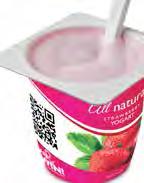

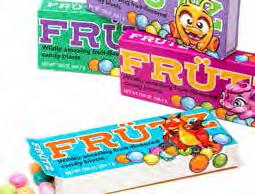

Integrando i sistemi KODAK PROSPER Plus Imprinting nell’attrezzatura di stampa o finitura esistente, potrete aumentare la personalizzazione integrata di cartoni pieghevoli, pellicole flessibili, cartoncini e molti altri supporti senza rallentare i vostri attuali processi. Sarete così in grado di offrire di più ai vostri clienti senza dover esternalizzare lavori e profitti.


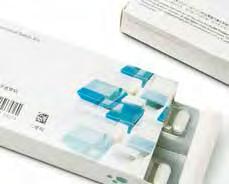
Il meglio della tecnologia analogica. Il meglio della stampa digitale. Maggiori informazioni su kodak.com/go/flessibili

136
inkjet e offset. Le attività di prestampa vengono svolte all’interno, compresa la realizzazione dei telai serigrafici. Sales collabora con centri di ricerca e università italiane ed estere, ospitando stagisti e lavorando su soluzioni innovative: collaborazioni che dimostrano che Sales è un’azienda aperta, un contesto dove creare sviluppo, in cui tutti possono lanciare idee e sperimentare.

Nel 2002 c’è bisogno di più spazio e quindi l’azienda decide di dividere le attività tra due sedi, ma sempre a Rivoli: in Via Chivasso si producono etichette autoadesive, mentre la divisione cartotecnica in Via Ferrero si dedica alla produzione di Buste Texso® e blocchi. Nello stesso anno, purtroppo, il Dott. Emilio, papà di Domenico che allora aveva 27 anni, subisce una grave malattia e non è più in grado di lavorare. Nonostante tutto, bisogna andare avanti. “Una delle prime cose che ho fatto è stata quella di ottenere la certificazione ambientale ISO 14001, conseguita lo stesso anno, iniziando un percorso virtuoso che porta nel 2009 alla Certificazione FSC che diventa parte di un nuovo percorso dell’azienda: il progetto Driving Green. È stato così che l’azienda ha iniziato a mettere in discussione i propri processi produttivi al fine di migliorare non solo il proprio impatto ma anche la gamma produttiva e poter quindi offrire ai propri clienti prodotti per aiutarli a ridurre il loro impatto ambientale. Sales inizia, quindi, a testare nuovi materiali, elimina i solventi dal suo processo produttivo, installa schermature sui vetri per ridurre l’uso dell’aria condizio-
ITS CORPORATE
BY COMBINING INNOVATION AND ENVIRONMENTAL PROTECTION: IT PRODUCES SELF-ADHESIVE LABELS, ENVELOPES AND PAPER PRODUCTS, CONVINCED THAT THE FUTURE MUST BE BUILT AND THERE IS STILL A LOT TO INNOVATE, YOU JUST HAVE TO WORK ABOUT IT. IN 2018 IT BECAME ONE OF THE HUNDRED ITALIAN B-CORP, WHICH ARE RECOGNIZED AS SUCH BECAUSE THEY CREATE VALUE FOR THEMSELVES AND FOR OTHERS
The company was founded in the center of Turin in 1886 and it is a woman who, in the early 1900s, took over the reins, producing bags and tags for agriculture and other sectors. “My great-grandmother Eugenia Chiesa was a true entrepreneur who continued for many years to manage the company, which is constantly growing and in the 1950s they moved to Ri-
voli to have more space; self-adhesive web labels began to be produced in 1959, an idea of my father, our company was one of the first companies in Europe to understand the growth potential of this product”, tells us Domenico Tessera Chiesa, the current managing director of Sales.

The years go by and the company becomes more and more structured and in
1976 the spin-off Tepak was born, which produces its own patented innovation: the envelopes stuffed with air bubbles, “today we still produce envelopes but they are called Texso, and they are reinforced paper envelopes”, says Domenico. The 80s and 90s are years of great development for Sales, because new machines arrive, the first rotary printing presses and in 1997, one year after obtaining the ISO 9001 Certification, the company offers Rambloc, spare parts and reinforced notepads which, in a few years, conquer an important place in the paper converting market, becoming today a market standard.
Today the company uses all printing technologies, from flexo to flat and rotary screen printing, to inkjet digital printing and offset. The pre-press activities are carried out internally, including the creation of the screen printing frames. Sales collaborates with Italian and foreign research centers and universities, hosting interns and working on innovative solutions:

YEARS OF HISTORY FOR THIS PIEDMONTESE COMPANY THAT HAS MADE SUSTAINABILITY THE BASIS OF
POLICIES
With Sales, labels can become sustainable









In 2002 there is a need for more and more space and therefore the company decides to divide the activities between two offices, but always in Rivoli: in Via Chivasso are produced self-adhesive labels, while the paper converting division in Via Ferrero is dedicated to the production of Texso® envelopes and blocks. In the same year, unfortunately, Dr. Emilio, the father of Domenico (who was 27 years old at the time), suffers a serious illness and is no longer able to work. But in spite of everything, the show must go on. “One of the first things I did was to obtain the ISO 14001 environmental certification, achieved the same year, starting a virtuous path that leads to FSC Certification in 2009 which becomes part of a new path for the company: the Driving Green project. Consequently the company began to question its production processes in order to improve not only its impact but also the production range and therefore be able to offer its cu-

stomers products to help them to reduce their environmental impact. Sales then begins to test new materials, eliminates solvents from its production process, installs screens on the windows to reduce the use of air conditioning, buys hybrid company cars and analyzes waste to minimize it, starting to use the first recycled and compostable materials. “But there’s no denying that it was not easy to propose and sell these sustainable solutions at that time. Even today, many customers present themselves as sustainable but when it is necessary to choose really different solutions, they are often not willing to spend more”, explains Domenico.
Sales’ work is, first of all, a consultancy work: the first step is to analyze the materials in use in order to study an alternative proposal. SalesLab is the Sales research center, in which analyses and stability tests are carried out. The goal is to offer the customer a precise report “that demonstrates to the customer how the proposed solution is better from an environmental point of


virtuoso”, ci conferma Domenico, che aggiunge che tutti i settori hanno in agenda un miglioramento del proprio packaging e occorrono soluzioni e competenze per poter davvero fare la differenza. “Noi vogliamo essere un riferimento per quelle aziende che vogliono migliorare il loro impatto ambientale e riteniamo di avere un’ampia gamma di soluzioni utili a questo scopo, oltre a una grande passione”, afferma Domenico.
Sales continua a innovare e nel 2012 arriva Silk: grazie a una macchina da stampa speciale ed esclusiva, l’azienda propone un’etichetta nobilitata con la serigrafia ma interamente realizzata con una tecnica digitale. Questo permette di ottenere effetti tattili meravigliosi con colori incredibilmente brillanti, senza i dover sostenere i costi importanti per avviamenti e impianti stampa serigrafici. Si tratta davvero di un game changer, ideale per la produzione di lotti piccoli e medi con molte referenze diverse. Negli anni successivi la gamma produttiva si amplia
ancora con le etichette a libretto e quelle pelabili, anch’esse realizzate con macchinari speciali. Tutte queste innovazioni sono frutto dell’attività del reparto R&D di quest’azienda, che conta 40 collaboratori e registra un fatturato di 6,5 milioni di euro.
Prima azienda del settore a diventare B-Corp. Il termine B Corp identifica le imprese che decidono di misurare le loro performance in termini di impatto ambientale, sociale ed economico attraverso la B Impact Assessment (BIA). Questo strumento è messo a punto da un ente terzo, B Lab, un’organizzazione non profit preposta alla definizione, manutenzione e sponsorizzazione del BIA e dei relativi vantaggi. “In pratica si tratta di un sistema che permette di misurare le prestazioni a 360°, misurando gli impatti dal punto di vista dell’attività produttiva, ambientale, sociale e dei collaboratori: per ottenerla bisogna avere almeno 80 punti (noi ne abbiamo totalizzati più di 90) per dimostrare che l’azienda preleva meno risorse di quante ne crea, una sorta di breakeven point dove si incrociano la linea che rappresenta le risorse che prelevo dall’ambiente con la linea delle risorse che creo, perché noi tutti siamo sistemi interdipendenti.
view and guarantees the same functional product performance. At that point, if the customer decides to proceed, we go into production. The reduction of the environmental impact is then analyzed for each customer, providing the ability to communicate the result obtained based on concrete data. The worst thing that can happen is, in fact, greenwashing”, says Domenico. But which are the most receptive sectors?
“Obviously, where there is greater financial availability, companies are more likely to spend more. In the world of luxury or cosmetics, there are more companies interested in developing alternative solutions to plastic, using paper or mono-materials that can allow for the most virtuous recycling possible”, confirms Domenico, who adds that all sectors have in their agenda an improvement of their packaging and solutions and skills are needed to really make a difference. “We want to be a reference for those companies that want to improve their environmental impact and we believe we have a wide range of solutions useful for
this purpose, as well as a great passion”, says Domenico.


Sales continues to innovate and in 2012 arrives Silk: thanks to a special and exclusive printing machine, the company offers a label ennobled with screen printing but entirely made with a digital technique. This allows to obtain wonderful tactile effects with incredibly bright colors, without having to bear the high costs for start-up and screen printing systems. It is really a game changer, ideal for the production of small and medium batches with many different references.
In the following years, the production range is further expanded with booklet and peelable labels, also made with special machinery. All these innovations are the result of the activity of the R&D department of this company, which has 40 employees and records a turnover of 6.5 million euros.
First company in the sector to become B-Corp. The term B Corp identifies companies that decide to measure their performance in terms of environmental, social and economic impact through the B Impact Assessment (BIA). This tool is developed by a third party, B Lab, a non-profit organization responsible for defining, maintaining and sponsoring the BIA and its benefits.
“In practice it is a system that allows you to measure performance at 360°, measuring the impacts from the point of view of production, environmental, social and collaborators: to obtain it you need to have at least 80 points (we have totaled more than 90) to demonstrate that the company withdraws fewer resources than it creates, a sort of breakeven point where intersect the line that represents the resources I withdraw from



Al mondo ci sono circa 5.000 aziende certificate al mondo, realtà che stanno veramente cercando di fare la differenza e noi, con orgoglio, possiamo dire di far parte di questo gruppo”, afferma Domenico. A livello di formazione e riqualificazione l’azienda è molto impegnata, ha corsi di formazione sempre attivi, perché queste attività sono molto importanti per la professionalità delle persone e per la crescita aziendale. Sales utilizza molto il Conto Formazione, un conto individuale a disposizione delle aziende aderenti a Fondimpresa, che consente loro di gestire le risorse finanziarie - versate e accantonate - per la formazione dei propri lavoratori. Fondimpresa è un’associazione senza scopo di lucro, costituita da Confindustria, Cgil, Cisl e Uil al fine di promuovere la formazione professionale continua, per il perseguimento della competitività delle imprese e dell’occupabilità dei lavoratori.
E il percorso di Sales all’insegna della sostenibilità continua: nel 2020 è divenuta una Società Benefit. Le società Benefit sono imprese che, oltre allo scopo di creare utili per se stesse e per i propri soci, perseguono una o più finalità di beneficio comune e operano in modo responsabile, sostenibile e trasparente nei confronti di persone, ambiente e stakeholders, impegnandosi a valutare in maniera trasparente il proprio impatto. È Assobenefit
(www.assobenefit.org) l’associazione che coordina la rete delle Società Benefit.

Oltre 60 aziende italiane si sono recentemente unite per azzerare l’impatto sull’ambiente e vincere una sfida che va oltre la generazione attuale inserendo la neutralità climatica fra le finalità d’impresa. Si chiama CO2alizione italia, (https://co2alizione.eco/it/manifesto) l’iniziativa a cui hanno aderito tante imprese italiane con l’obiettivo di aumentare il livello di impegno verso la neutralità climatica e naturalmente Sales non poteva non partecipare a questa iniziativa. L’impegno molto sfidante è quello di azzerare le proprie emissioni CO2 entro il 2030.
Sales è presente anche nel libro, pubblicato quest’anno, “Io e i #GreenHeroes – Perché ho deciso di pensare verde”, edito da Piemme, a scritto da Alessandro Gassman insieme al divulgatore scientifico Roberto Bragalone: nel volume sono raccolte alcune storie di imprenditori verdi e innovativi. Insomma tanti traguardi che testimoniano che è possibile costruire un modello di business completamente sostenibile, “perché è fondamentale ricordare che stiamo parlando di business sostenibile, quindi noi dobbiamo generare profitto, altrimenti non potremmo continuare a innovare e investire”, conclude Domenico.
the environment with the line of resources I create, because we are all interdependent systems. In the world there are about 5,000 certified companies in the world, realities that are really trying to make a difference and we can proudly say that we are part of this group”, says Domenico.
At the level of training and professional retraining, the company is very busy, it has training courses that are always active, because these activities are very important for the professionalism of people and for business growth. Sales uses a lot of the Training Account, an individual account available to the companies belonging to Fondimpresa, which allows them to manage the financial resources - paid and set aside - for the training of their workers. Fondimpresa is a non-profit association, set up by Confindustria, Cgil, Cisl and Uil to promote continuing professional training, for the pursuit of the competitiveness of businesses and the employability of workers.
And Sales path in the name of sustainability continues: in 2020 it became a

Benefit Company. Benefit companies are companies that, in addition to the purpose of creating profits for themselves and their shareholders, pursue one or more purposes of common benefit and operate in a responsible, sustainable and transparent way towards people, environment and stakeholders, committing themselves to transparently assess its impact. Assobenefit (www. assobenefit.org) is the association that coordinates the network of Benefit Societies. Over 60 Italian companies have recently come together to eliminate the impact on the environment and win a challenge that goes beyond the current generation by including climate neutrality among the business goals. It is called CO2alizione italia, (https://co2alizione.eco/it/manifesto) the initiative to which many Italian companies have joined with the aim of increasing the level of commitment towards climate neutrality and of course Sales could not fail to participate in this initiative. The very challenging commitment is to zero its CO2 emissions by 2030.
Sales is also present in the book, published this year, “Me and the #GreenHeroes - Why I decided to think green”, published by Piemme, written by Alessandro Gassman together with the scientific popularizer Roberto Bragalone: the volume contains some stories of entrepreneurs green and innovative.
In short, many goals that testify that it is possible to build a completely sustainable business model, “because it is essential to remember that we are talking about sustainable business, so we must generate profit, otherwise we would not be able to continue to innovate and invest”, concludes Domenico.

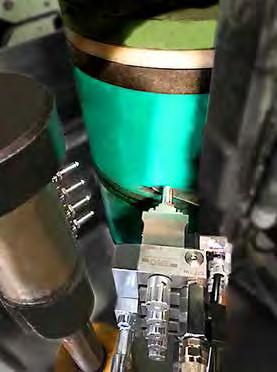








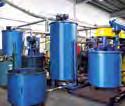

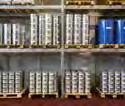

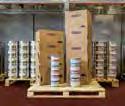
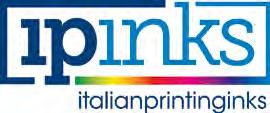
a situazione attuale non lascia spazio alla fantasia, caro energia, problema materie prime, seppur meno pressante rispetto all’inizio dell’anno ma con i prezzi in salita mettono gli etichettifici davanti a una situazione alquanto complessa, dove cercare aspetti positivi sembra quasi una chimera, anche se i dati del settore e i messaggi lanciati dai vari relatori intervenuti al convegno sembrano aprire squarci di sereno all’orizzonte.
“Sono molte le sfide che il nostro comparto è chiamato ad affrontare: dalla crisi energetica all’aumento dei prezzi, dalla carenza di materie prime alle difficoltà legate alle normative di prossima entrata in vigore. In uno scenario complesso, dobbiamo ricordare l’importanza di fare gruppo, perché non dobbiamo dimenticare che le problematiche che stiamo affrontando sono comuni a tutto il mondo delle arti grafiche”, esordisce
la Presidente Brambilla. Proprio per venire incontro agli associati, Gipea ha recentemente ideato e avviato una piattaforma (Tool Cerco/Offro) che consente in forma anonima di creare annunci di ricerca e vendita, mettendo in contatto le aziende in possesso di materiale inutilizzato e le aziende che ne hanno necessità, che dopo un primo contatto possono proseguire la trattativa al di fuori della piattaforma, accordandosi per la compravendita.


I dati economici del settore, provenienti dal Finat Radar, evidenziano un aumento dei fatturati nel 2021 rispetto all’anno precedente del 5,1%, dovuto principalmente a un aumento della materia prima che ove possibile viene girata ai clienti finali e meno a un aumento dei volumi prodotti.
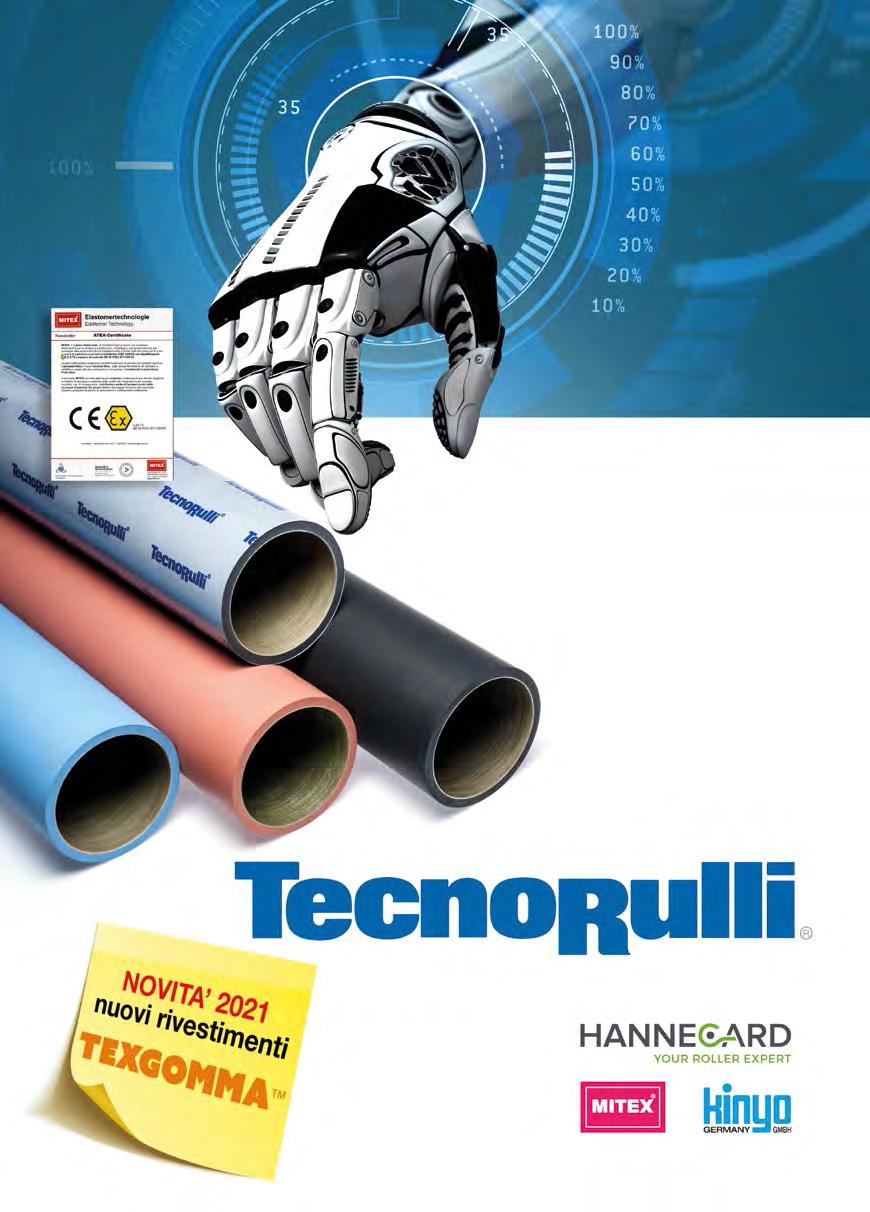
Anche il primo quadrimestre 2022 fa segnare un aumento del fatturato del 2% rispetto all’anno precedente, ma sempre per lo stesso discorso legato al caro materie prime, nel quale rientra anche il discorso legato all’energia.
Continua la crescita importanti di alcuni settori di sbocco, quali il beverage 8,2%, food 8,1%, retail 7,5%, trasporti e logistica 6,5%, beauty-healthcare 5,9% un trend iniziato nel periodo Covid che di fatto ha cambiato le abitudini di consumo della gente, evidenziato anche dal settore automotive che invece ha registrato un -1,4%.
Le aziende in questo scenario hanno adottato diverse strategie, alcune anche in controtendenza, come per esempio il 66% che è passata dalla carta al film, sia per i liners che sui frontali, un materiale più facilmente reperibile e a costi minori; una scelta resasi necessaria per continuare a produrre e consegnare le etichette ai clienti col materiale disponibile sul mercato. Il 46% delle aziende ha anche cercato di reperire materiale extra europeo, il 69% ha dichiarato di aver assegnato una priorità alle commesse di alcuni clienti rispetto ad altri, ma il segnale più importante e confortante è stato quel 3% di aziende, quindi un dato estremamente ridotto, che ha dovuto licenziare il personale per fronteggiare
questo momento difficile. Molte di più invece, circa un 20% le aziende che hanno scelto di rimandare gli investimenti in tecnologia, anche se il mercato Italiano, grazie agli aiuto della 4.0 è comunque in controtendenza rispetto all’Europa. Philip Voet, Presidente Finat e titolare di un etichettificio in Belgio, ha invitato le aziende italiane presenti ad abituarsi a un nuovo concetto di normalità, nel quale non dobbiamo mai dimenticare che negli ultimi anni il settore è sempre stato all’interno di un trend positivo, questo indipendentemente dalle contingenze esterne, segnale di aziende forti, solide, capaci di adattarsi sempre alle nuove esigenze del mercato. Il consumo delle etichette, dal 2000 a oggi è più che duplicato, con una crescita del 7% tra il 2020 e il 2021. L’Italia in questo scenario gioca un ruolo di primaria importanza, coprendo il 25% del mercato europeo. Parlando di sostenibilità, Finat è uno dei 5 membri fondatori di CELAB Europe, associazione in cui è presente anche Gipea insieme ad aziende forni-
whole world of graphic industry”, begins president Brambilla.

Just to meet the associates, Gipea has recently conceived and launched a platform (Tool Search/Offer) that allows anonymously to create search and sale ads, putting in contact companies in possession of unused material and companies that have needs, which after a first contact can continue the negotiation outside the platform, agreeing on the sale.
THE EUROPEAN LABEL SECTOR, WHERE ITALY IS WORTH 25% OF THE MARKET
reason linked to expensive raw materials, which also includes energy.
Important growth continues in some outlet sectors, such as beverage 8.2%, food 8.1%, retail 7.5%, transport and logistics 6.5%, beauty-healthcare 5.9%, a trend that began in the Covid period which in fact has changed people’s consumption habits, also highlighted by the automotive sector which instead recorded a -1.4%.
The current situation leaves no room for imagination: expensive energy, raw materials problem, albeit less pressing than at the beginning of the year but with rising prices put label manufacturers in a rather complex situation, where looking for positive aspects seems almost a chimera, even if the data of the sector and the messages launched by the various speakers at the conference seem
to open glimpses of serene on the horizon. “There are many challenges that our sector is called to face: from the energy crisis to the increase in prices, from the shortage of raw materials to the difficulties related to the regulations that will soon come into force. In a complex scenario, we must remember the importance of to be a group, because we must not forget that the problems we are facing are common to the
The economic data of the sector, coming from Finat Radar, show an increase in turnover in 2021 compared to the previous year of 5.1%, mainly due to an increase in raw materials that where possible is passed on to end customers and less to an increase of the volumes produced. Also the first quarter of 2022 marks an increase in turnover of 2% compared to the previous year, but always for the same
In this scenario, companies have adopted various strategies, some even going against the trend, such as for example the 66% who went from paper to film, both liners and facestock, a material that is more easily available and at lower costs; a choice made necessary to continue producing and delivering labels to customers with the material available on the market. 46% of companies also tried to find not-European material, 69% said they had prioritized the orders of some customers over others, but the most important and comforting signal was that 3% of companies, therefore a extremely low figure, had to lay off staff to face this difficult
IT WAS A VERY STIMULATING CONGRESS AND FULL OF INTERESTING IDEAS FOR LABEL MANUFACTURERS GATHERED IN SIROLO (AN) LAST 22 AND 23 SEPTEMBER DURING WHICH THE NEW BOARD OF DIRECTORS WAS APPOINTED AND RE-ELECTED ELISABETTA BRAMBILLA AS PRESIDENT OF THE ASSOCIATION
The label sector has to face new challenges behind which emerge important opportunities towards a green production rewarded by the market


tori di materiali, stampatori e converter, volta a favorire l’economia circolare a livello europeo per la raccolta e il riciclo dei materiali autoadesivi, liner ma anche scarti di produzione.
Oggi la sostenibilità è un fattore competitivo imprescindibile, perché se all’inizio le aziende hanno approcciato questi temi per la moda del momento, ci si è poi resi conto della straordinaria importanza di dover gestire in maniera etica, corretta, veritiera, argomenti delicati come questi, che non coinvolgono solamente aspetti legati all’impatto ambientale, ma anche sociale ed economico. Aldo Bolognini Cobianchi caporedattore di Milano Finanza ha sottolineato l’importanza di comunicare la sostenibilità in maniera corretta, evitando l’errore di cadere nel green-washing.
Le aziende devono imparare a comunicare le loro azioni, perché ciò che non viene comunicato di fatto non esiste. Ecco dunque l’importanza di dotarsi di strumenti specifici come il bilancio di sostenibilità che diventerà obbligatorio anche per le piccole aziende a
partire dal 2026, e che potrà essere un primo passo verso una sostenibilità concreta, con dati oggettivi e dimostrabili, perché sono gli stakeholder a richiederlo. Dichiararsi sostenibili e non esserlo a livello pratico, anche se a livello giuridico per adesso non comporta gravi sanzioni, può avere effetti devastanti a livello di reputazione del prodotto e del brand.
Le aziende più grandi hanno iniziato a redigere bilanci di sostenibilità che però non sono comunicativi. Il rapporto di sostenibilità deve contenere le operazioni che l’azienda sta intraprendendo, è un lavoro che richiede sforzi, investimenti, ma garantisce dei ritorni. Inoltre non esiste uno schema prefissato per perseguire la sostenibilità, ma ogni azienda, coi propri consulenti, può costruirsi un suo percorso, abbracciando vari aspetti che possono concorrere a raggiungere l’obiettivo, tenendo ben presente che una sostenibilità al 100% non esiste, ma ci si può comunque avvicinare.
time. Many more, however, about 20%, the companies that have chosen to postpone investments in technology, even if the Italian market, thanks to the help of 4.0, is still in contrast with Europe.
Philip Voet, President of Finat and owner of a label factory in Belgium, invited the Italian companies present to get used to a new concept of normality, in which we must never forget that in recent years the sector has always registered a positive trend, this regardless of external contingencies, a sign of strong, solid companies, capable of always adapting to the new needs of the market.
The consumption of labels, from 2000 to today, has more than doubled, with a growth of 7% between 2020 and 2021. Italy plays a role of primary importance in this scenario, covering 25% of the European market.
Speaking of sustainability, Finat is one of the 5 founding members of CELAB Europe, an association in which Gipea is also present together with suppliers of materials, printers and converters, aimed at promoting the circular economy at European level for the collection and recycling of self-adhesive materials, liners but also production waste.
Today sustainability is an essential competitive factor, because if at the beginning companies approached these issues for the fashion of the moment, they then realized the extraordinary importance of having to manage delicate topics such as these in an ethical, correct, truthful manner, which not only involve aspects related to environmental impact, but also social and economic. Aldo Bolognini Cobianchi, editor-in-chief of Milano Finanza, stressed the importance of communicating sustainability correctly, avoiding the mistake of falling into green-washing.
Companies must learn to communicate their actions, because what is not communicated does not actually exist. Hence the importance of equipping oneself with specific tools such as the sustainability report which will also become mandatory for small companies starting from 2026, and which could be a first step towards concrete sustainability, with objective and demonstrable data, because the stakeholders request it. Declaring oneself sustainable and not being so on a practical level, even
if at a legal level for now it does not involve serious penalties, can have devastating effects on the reputation of the product and the brand.
Larger companies have started to draw up sustainability reports which, however, are not communicative. The sustainability report must contain the operations that the company is undertaking, it is a job that requires effort, investment, but guarantees returns. Furthermore, there is no set scheme to pursue sustainability, but each company, with its consultants, can build its own path, embracing various aspects that can contribute to achieving the goal, bearing in mind that 100% sustainability does not exist, but you can still get close.
From a recent Nielsen research, it emerged that even in Italy there is an increase in consumers willing to pay more to reward sustainable brands, and even more interesting is that the people who today do not have purchasing power are those most likely to pay more for sustainability,
millennials (21-34 years) and generation Z (15-20 years).
Today, sustainability increasingly involves packaging and not the product contained, which once consumed is of less interest in terms of environmental impact, even if paradoxically the production process does not have little impact, while the packages that end up in the garbage attract the interest of the market that wants to measure the actual degree of sustainability. Companies must find ideas, use the freshness of young people who will be the consumers of tomorrow. Within 10 years, young people will push for communicating and engaging products, but always from a green perspective.
“The data show that consumers are also increasingly asking companies to account for their sustainability. It is a fundamental aspect for becoming a trusted brand. It will be the market itself that will force companies to become sustainable, and companies must be able to give objective proof of this”, says Roberto Masciambruni, business consultant with a past as a packaging manager.
The event, which saw the sponsorship of






















































































Da una recente ricerca Nielsen, è emerso che anche in Italia sono in aumento i consumatori disposti a pagare di più per premiare i brand sostenibili, e dato ancor più interessante è che le persone che oggi non hanno potere d’acquisto sono quelli più propense a pagare di più per la sostenibilità, ovvero i millennials 21-34 anni e la generazione Z 15-20 anni. Oggi la sostenibilità coinvolge sempre più il packaging e non il prodotto contenuto, che una volta consumato interessa meno a livello di impatto ambientale, anche se paradossalmente il processo di produzione non è che sia poco impattante, mentre le confezioni che finiscono nell’immondizia attirano l’interesse del mercato che vuole misurarne l’effettivo grado di sostenibilità. Le aziende devono mettere in campo idee, usare la freschezza dei giovani che saranno i consumatori del domani. I giovani nel giro di 10 anni spingeranno per i prodotti capaci di comunicare,
che siano coinvolgenti ma sempre in un’ottica green. “I dati dimostrano che anche i consumatori chiedono sempre più alle aziende di rendere conto della propria sostenibilità. È un aspetto fondamentale per diventare brand di fiducia. Sarà il mercato stesso a costringere le aziende a diventare sostenibili, e le imprese dovranno poterne dare prova oggettiva”, dice Roberto Masciambruni consulente d’impresa con un passato da packaging manager.
L’evento, che ha visto la sponsorizzazione di OMET, che ha presentato con Andrea Campani la nuova KFlex e l’Innovation Center e Colorgraf, si è chiuso con l’intervento dell’imprenditore Alessandro Garofalo, con un focus sulle soft skill digitali fondamentali per affrontare lo scenario attuale e sul concetto di coopetizione: “Oggi non c’è altra strada: in questo mondo, senza cooperazione si scompare. Guardiamo alla natura: nessuna pianta cresce oltre una certa misura. Nessuno può crescere da solo”.
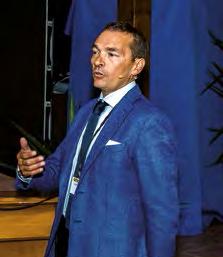
OMET, which presented the new KFlex and the Innovation Center and of Colorgraf with Andrea Campani, closed with the intervention of the entrepreneur Alessandro Garofalo, with a focus on fundamental digital soft skills to face the current scenario and the concept of coopetition: “today there is no other way: in this world, without cooperation you disappear. Let’s look at nature: no plant grows beyond a certain extent. No one can grow alone”.
Speaking of young people to invest in, here is the fine example of Alessandro Tomaghelli, a student at Politecnico di Milano who participated and won the LABELicious competition promoted by Finat, who told the label manufacturers of the Gipea Conference the design path that led him to victory. The contest consisted in the design of a label in three categories (beverage, beauty, health) with attractive, sustainable, functional
and informative graphics, for category of women over 70.
Tomaghelli has chosen the beverage category for an energizing drink, considering the naming with a personal name to be given to the product. The final result was a multilayer label declined according to the different fruity tastes of the product.
“The pandemic situation we have faced in recent years has greatly influenced Gipea’s projects which have always focused its commitment on training and sharing. Unfortunately, the current situation has shifted our focus to issues that have involved all the companies in our sector, but now the time has come to resume our activities and reactivate all the training and association development channels which,
for obvious reasons, had slowed down. Training has always been in our DNA and will continue to be a key point in expanding the knowledge and development of all our associates”.
What concrete actions do you have in mind to help companies?
As always, Gipea tries to provide concrete support to member companies. This year there are many difficult situations to deal with, energy prices, increases in raw materials, financing and development plans of the PNRR, European regulations in the field of packaging labeling and many others. For all these situations, Gipea, increasingly supported by Assografici, is providing all associates with support information to face these challenges in the best possible way. Our commitment is constant and is aimed at the professional growth of our associates. Coping with national and European problems is increasingly difficult but as a wise man would say…’Unity is strength’ and united we will certainly be able to do a lot”.
You recently took part in Giflex Conference in Bologna together with your colleagues from Gifasp and Gifco. Is it the beginning of a new era, where to tackle together common problems of the entire graphics and paper converting industry?
“I have always strongly believed in associations, not only as a specialization group but as an activity to be shared with all the players in the graphic industry sector. Confronting, discussing the various problems of those who, like us, work daily in the printing sector help each of us to grow and to have a 360° view of our world. Companies are different but the problems are the same so I think that the comparison is fundamental and essential to be able to transmit within Gipea what also happens in the other sectors in order to be able to work together and take action to achieve all those goals that see us involved as printers and not just as label producers”.

What will be the cornerstones of your new mandate?
BESCO srl nasce nel 1976 e nel corso degli anni, grazie agli stretti rapporti con le più importanti aziende del settore delle macchine da stampa, si specializza nella produzione di carrelli elevatori alzabobine.
La costante crescita tecnica ha portato l’azienda ad un ampliamento della gamma per consentire l’offerta di prodotti in grado di soddisfare ogni necessità.
L’elevata versatilità del processo produttivo consente alla BESCO, di personalizzare su richiesta i propri modelli per una copertura a 360° delle esigenze dei propri clienti.
BESCO srl was born in 1976 and year by year,thanks to close relations with the most important printing machines’ manufacturers, specialized in reel lift trolleys’ production.
The incessant technical development took the company to an enlargement of his products’ range in order to satisfy any kind of requirements.
The great production cycle’s versatility allows BESCO to personalize (when requested) their trolleys to meet all customer’s demands.
La linea al top della gamma BESCO: carrelli alimentati a batteria. Traslazione e sollevamento elettronico It is the top line of BESCO production: trolleys feeded with batteries and completely
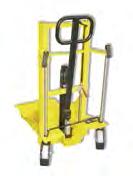
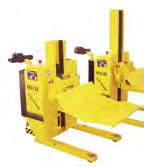
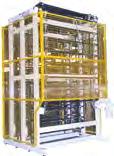

CB 2.6 - CB 2.10
CBM 700 P - CBM 700 S


Magazzini verticali automatici rotanti portarulli Il sistema BESCO “CANGURO” sfrutta le altezze del locale verticalizzando il magazzino e consentendo un risparmio sui costi
Canguro 40/60/100 con capacità di gestione da 40/60/100 rulli
di Cadeo
A proposito di giovani sui quali investire ecco il bell’esempio di Alessandro Tomaghelli, studente del Politecnico di Milano che ha partecipato e vinto il concorso LABELicious promosso da Finat, il quale ha raccontato agli etichettifici del Convegno Gipea il percorso progettuale che lo ha portato alla vittoria.

Il contest consisteva nella progettazione di un’etichetta in tre categorie (beverage, beauty, salute) con grafica accattivante, sostenibile, funzionale e informativa, per categoria di persone over 70 per Donne.
Tomaghelli ha scelto la categoria beverage per una bevanda energizzante, considerando il naming con un nome proprio di persona da dare al prodotto.
Il risultato finale è stata un’etichetta multistrato declinata secondo i vari gusti fruttati del prodotto.

Quali saranno i punti cardine del suo nuovo mandato?
“La situazione di pandemia che abbiamo affrontato in questi ultimi anni ha influito notevolmente sui progetti di Gipea che da sempre ha focalizzato il suo impegno sulla formazione e sulla condivisione. Purtroppo la situazione contingente ha spostato il nostro focus su problematiche che hanno coinvolto tutte le aziende del nostro settore, ma adesso è tornato il momento di riprendere le nostre attività e riattivare tutti i canali di formazione e sviluppo associativo che, per ovvi motivi, erano rallentate. La formazione è sempre stata nel nostro DNA e continuerà a essere un punto fondamentale per ampliare le conoscenze e lo sviluppo di tutti i nostri associati”.
“Come sempre Gipea cerca di fornire un supporto concreto alle Azienda associate. Quest’anno le situazioni
difficile da affrontare sono molte, il rincaro energetico, gli aumenti delle materie prime, i piani di finanziamento e sviluppo del PNRR, le normative Europee in ambito di etichettatura imballi e molte altre.

Per tutte queste situazioni Gipea, sempre più supportata da Assografici, sta fornendo a tutti gli associati informazioni di supporto per affrontare queste sfide nel miglior modo possibile. Il nostro impegno è costante ed è finalizzato alla crescita professionale dei nostri associati.
Far fronte a problematica Nazionali ed Europee è sempre più difficile ma come direbbe un saggio..”L’unione fa la forza” e uniti sicuramente si potrà fare molto”.
Recentemente ha preso parte al Convegno Giflex di Bologna insieme ai suoi colleghi di Gifasp e Gifco. È l’inizio di una nuova era, dove affrontare insieme problemi comuni dell’intera industria grafica e cartotecnica?
“Ho sempre creduto molto nell’associazionismo, non solo come gruppo di specializzazione ma come attività da condividere con tutti gli attori del comparto delle arti grafiche.
Confrontarsi, discutere delle varie problematiche di chi come noi lavora quotidianamente nel settore della stampa aiuta ognuno di noi a crescere e ad avere una visione a 360° del nostro mondo.
Le realtà sono diverse ma i problemi sono gli stessi perciò penso che il confronto sia fondamentale ed essenziale per poter trasmettere all’interno di Gipea ciò che accade anche negli altri settori per poter, insieme, lavorare e attivarsi per raggiungere tutti quegli obbiettivi che ci vedono coinvolti come stampatori e non solo come produttori di etichette”.

Oltre il 90% dei prodotti alimentari venduti in Europa sono confezionati. L’Unione Europea ha stabilito norme rigorose per gli imballaggi destinati ai prodotti alimentari. Specifiche disposizioni riguardano gli inchiostri e le vernici. Essi non devono influenzare le caratteristiche organolettiche dei prodotti contenuti nell’imballaggio e la migrazione dei suoi componenti deve essere entro i limiti consentiti dalla normativa.

Colorgraf ha realizzato specifici inchiostri e relative vernici di sovrastampa a “basso odore e bassa migrazione” per la stampa di imballaggi primari:
Lithofood Plus, quadricromia offset e inchiostri base “convenzionali”.
Deltafood Plus, quadricromia offset e inchiostri base ad essiccazione UV.
Senolith WB FP, vernici a base acqua da utilizzare “in linea” con gli inchiostri Lithofood Plus. Senolith UV FP, vernici UV, “basso odore e bassa migrazione”.
02 9370381 · Telefax +39 02 9374430 web www.colorgraf.it · E-mail colorgraf@colorgraf.it
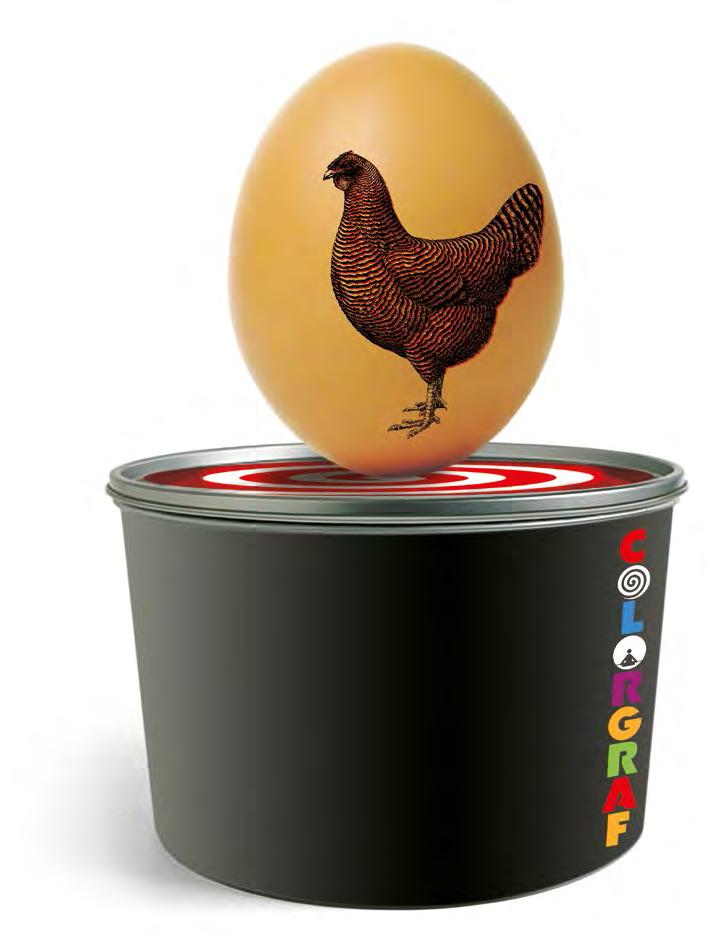
Nome e cognome: Società:
Funzione all’interno della società: Settore di attività della società: Codice fiscale o partita Iva: Cod. Univoco FE: Indirizzo: Città: Provincia: CAP: Stato:
Sito internet: e-mail: Tel: Fax:
Abbonamento annuale per una rivista: CONVERTER & CARTOTECNICA
CONVERTER FLESSIBILI CARTA E CARTONE Italia € 40,00 - Estero € 90,00
Abbonamento annuale per due riviste: CONVERTER & CARTOTECNICA + CONVERTER FLESSIBILI CARTA E CARTONE Italia € 70,00 - Estero € 150,00
Bonifico bancario intestato a: CIESSEGI EDITRICE SNC
CREDITO VALTELLINESE ag. 55
SAN DONATO MILANESE (MILANO)
IBAN: IT 88 I 05216 33711 000000002214
Compilare e spedire via mail a: flexo@converter.it (CIESSEGI EDITRICE)


TO SUBSCRIBE TO
Surname and name: Company: Job function: Primary company business: Internationa VAT number:
Address: City: Province: Post Code: Country: Internet site: e-mail: Ph: Fax:
Annual subscription for one magazine:
CONVERTER & CARTOTECNICA
CONVERTER FLESSIBILI CARTA E CARTONE
Italy € 40,00 - Abroad € 90,00
Annual subscription for two magazines:
CONVERTER & CARTOTECNICA + CONVERTER FLESSIBILI CARTA E CARTONE
Italy €
SAN DONATO MILANESE (MILANO)
IBAN: IT 88 I 05216 33711 000000002214
I’m enclosing a crossed cheque, for the amount of € made out to CIESSEGI EDITRICE SNC
Fulfill and send by e-mail to: flexo@converter.it (CIESSEGI EDITRICE)
112 CONVERTER Flessibili - Carta - Cartone
2G&P 29
ASAHI PHOTOPRODUCTS 3
ASTER 110
BESCO 107
BFT FLEXO 41
BIMEC 45 BOBST 1 CAMIS 83
CAVAGNA 77
CAVALLERI 81
COLORGRAF 111
CURIONI SUN 11
DIAVEN 49
DIGITAL FLEX 59
EDIGIT 57
ERO 99
EXPERT 17
FIBERCOMPOSITI 55
FLEXO ITALIA 71
FLEXXO/ECO AIR 23
GAIAPACK 65
GAMA 89
H7 GROUP 97
HEIDELBERG 9
I&C II copertina IES 25
INCIFLEX 66
IPINKS 99
I-TECH 66
KODAK 91
KURT ZECHER 79
LGL ENGINEERING 46,47
MAVIGRAFICA I copertina
ME.RO 109
MIRACLON 13
NEW AERODINAMICA 27
NORDMECCANICA Anta e IV cop.
PAM 43
PCMC 63
PRAXAIR 19
RAMA 93
RCL 67
SAGE 53
SALDOFLEX 31
SEAB 75
SEI LASER 15, Inserto SELECTRA 35
SIMONAZZI 61
SISTRADE 51
SOMA 39
SPRING 37
STUDIO OR 33
SVECOM III copertina,103
TEMAC 69
TECNOMEC 3 95
TECNOR ULLI 101
TRASCO 73
UTECO 5,21
VEA 105
VETAPHONE 85
ZDUE 7
ZENIT 87








